
Technical Blogging: Turn Your Expertise Into a Remarkable Online Presence
by
Antonio Cangiano
Published 15 Mar 2012
For WordPress, you can also enable the sharing feature that’s available in the JetPack plugin. Reddit and Hacker News For technical blogs, there are two large communities for which it may be worth having sharing buttons. They are Reddit, with its extensive list of subcommunities known as subreddits, and Hacker News. In the previous section I mentioned how less than two hundred visits to one of my recent articles came from Facebook, Twitter, and Google+ combined. What I didn’t tell you though, was that more than seven thousand people showed up from Reddit, specifically the Programming subreddit. Likewise, Hacker News brought close to one thousand visitors to the article, despite the fact that my post didn’t get particularly popular on that site or make it to the home page as a popular story.
…
For an in-depth look at Reddit voting patterns and stories that made it big, check out Reddit’s own analysis at http://blog.reddit.com/2011/07/nerd-talk-tale-of-life-of-link-on.html. Hacker News Hacker News (HN) is currently my favorite community. It’s smaller than Reddit, but it’s growing quickly and tends to be much more friendly than communities such as /r/programming. If you hit its front page, you’ll still receive several thousand visitors (and quality ones at that). On Hacker News, you can submit any story that’s relevant to programming, technology, business, and the world of startups. War stories about your entrepreneurship or development experiences are particularly loved by this community.
…
Likewise, Hacker News brought close to one thousand visitors to the article, despite the fact that my post didn’t get particularly popular on that site or make it to the home page as a popular story. If your site is about programming, you should consider both Reddit and Hacker News buttons. If it’s more business or startup oriented, then Hacker News alone may be more appropriate. Just find a fine line (between too few and too many icons), and focus on the buttons that you care the most about. Don’t try to include too many, or their CTR (click-through rate) will quickly approach zero. 4.5 Win Over Subscribers When your blog is starting out, your sole goal should be to attract new subscribers.

The Launch Pad: Inside Y Combinator, Silicon Valley's Most Exclusive School for Startups
by
Randall Stross
Published 4 Sep 2013
If you want to get it done immediately, then you need to be in person.” What about other options? Shah asks Altman. “Craigslist for this kind of thing actually works. The problem is you get a huge amount of junk. Have you guys posted on Hacker News?” “No.” “That’d be my first choice. We had great results posting on Hacker News. You get really high-quality people.” Campbell is surprised. “Nontech?” “Yeah. There are so many startup junkies that read Hacker News that just desperately want to be involved with a YC startup and aren’t technical, and there aren’t a lot of opportunities for them.” “What are some specific things we should look for or ask?”
…
They have cobbled together only a single course, an introduction to JavaScript with eight micro-lessons. It’s painfully rudimentary and might fall short of even a low bar for minimum viable product. Before releasing it, however, they need to get some feedback without launching. Hacker News seems like a good place to quietly invite hackers to pay a visit to the site and critique what Codecademy has so far. Midmorning, Sims posts a notice on Hacker News, “Show HN: Code cademy.com—The Easiest Way to Learn to Code,” and he and Bubinski head out to get bagels for lunch.2 In the car, they decide it would be a wonderful thing if they manage to get fifty concurrent users on the site.
…
Hackers are curious to know how things work and fix them when they don’t. Hackers desire the company of fellow hackers.4 Graham is a self-described hacker, and when he launched his own startup about fifteen years ago, the other cofounder was also a hacker. Graham personally wrote the code for Hacker News, an area on the Y Combinator Web site that aggregates links to news stories from around the Web suggested by users who are most interested in programming and software startups and who comment on the stories. Hackers are, by nature, unruly, says Graham. This sometimes leads to their poking around inside technology where they are not supposed to go.
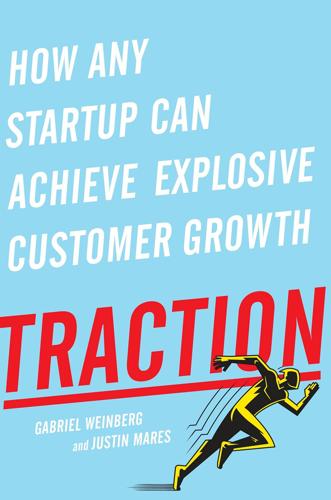
Traction: How Any Startup Can Achieve Explosive Customer Growth
by
Gabriel Weinberg
and
Justin Mares
Published 5 Oct 2015
Sharing links is at the heart of many large communities on the Web (e.g., reddit, Product Hunt, Hacker News, Inbound.org). In addition, there are hundreds of niche communities and forums that encourage and reward the sharing of links. Dropbox, the file storage startup, targeted these communities for their initial traction. By sharing a video on Hacker News, Dropbox received more than ten thousand signups. Soon, it was trending on Digg (significantly bigger at the time), which drove even more signups. Quora, Codecademy, and Gumroad saw similar success from initial postings on Hacker News because their products were a good fit for users of that site.
…
Everyone I talked to about my search engine project thought I was nuts. You’re doing what? Competing against Google? Why? How? Another year later, in the fall of 2008, I flipped the switch, unveiling my search engine to the public. DuckDuckGo had a rather uneventful launch, if you can even call it a launch. I posted it to a niche tech site called Hacker News and that was the long and short of it. The post was entitled “What do you think of my new search engine?” Like many entrepreneurs, I’m motivated by being on the cusp of something big, and I was at the point where I needed some validation. I can survive on little, but I needed something. I got it.
…
Blogs compete to get stories first, newspapers compete to “confirm” it, and then pundits compete for airtime to opine on it. The smaller sites legitimize the newsworthiness of the story for the sites with bigger audiences. Tech startups frequently get exposure this way. Sites like TechCrunch and Lifehacker often pick up stories from smaller forums like Hacker News and subreddits. In turn, The New York Times often picks up content from TechCrunch and wraps it into a larger narrative they’re telling. The story of DonorsChoose.org is an example of the modern-day media chain in action. DonorsChoose is a site that allows teachers to raise money for classroom projects, such as buying a digital microscope for a science class.

Live Work Work Work Die: A Journey Into the Savage Heart of Silicon Valley
by
Corey Pein
Published 23 Apr 2018
But they soon became a habit, and in a misguided effort to become more “productive,” I devoured page after page of the self-help and motivational material these websites featured, most of it directed at startup wannabes like me. Lying awake in bed, arm stiff from holding my smartphone aloft, I sought solace in the sanguine stream of updates on Hacker News, a techie discussion forum run by a venture capital fund and startup “incubator” called Y Combinator. This outfit seemed vaguely prestigious, the commenters knowledgeable. The titles of the inspirational homilies on Hacker News reassured me that I was not alone: “Fail Fast, Fail Often, and Fail by Design,” “Failing Fast Means … Failing a Lot,” and, most succinctly, “Success Through Failure.” I took it all to heart.
…
Somehow it still seemed they had the best deal going. I found that most startup founders told the truth about their sorry circumstances only while drunk or from behind the cover of anonymity. It was easy to find cracks in the veneer of enthusiasm even on the relentlessly enthusiastic news and discussion website Hacker News. A sample of some questions submitted by different users to the “Ask HN” feature of the site gives the flavor of the stress and anxiety plaguing those who struck out on their own seeking treasure in Silicon Valley: Should I pretend that my startup is already successful? What should I do if I feel burnt out?
…
To hawk get-rich-quick manuals to all those eager Fiverrers, however, was to join the exalted ranks of the shovel merchants. My Airbnb landlord, I realized, was a shovel merchant. As was the company that rented me server space for website hosting. As were the “startup community organizers” selling tickets to conferences and networking parties. As were the startup awards shows and Hacker News and the whole Silicon Valley economic apparatus promoting the ideal of individual achievement. We startup wannabes were not entrepreneurs. We were suckers for the shovel merchants, who were much cleverer than the thick-skulled “innovators” who did all the work while trading away the rewards. Selling shovels wasn’t the only way to make money in tech, but it was … the Silicon Valley way.
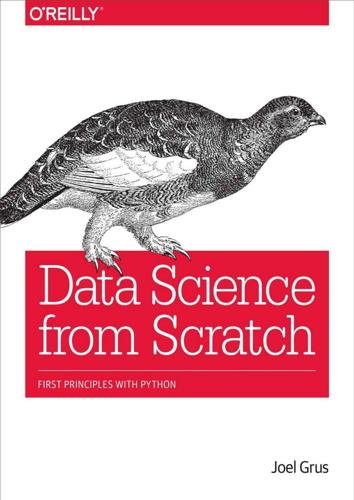
Data Science from Scratch: First Principles with Python
by
Joel Grus
Published 13 Apr 2015
Do Data Science Looking through data catalogs is fine, but the best projects (and products) are ones that tickle some sort of itch. Here are a few that I’ve done. Hacker News Hacker News is a news aggregation and discussion site for technology-related news. It collects lots and lots of articles, many of which aren’t interesting to me. Accordingly, several years ago, I set out to build a Hacker News story classifier to predict whether I would or would not be interested in any given story. This did not go over so well with the users of Hacker News, who resented the idea that someone might not be interested in every story on the site. This involved hand-labeling a lot of stories (in order to have a training set), choosing story features (for example, words in the title, and domains of the links), and training a Naive Bayes classifier not unlike our spam filter.
…
entropy, Entropy entropy of a partition, The Entropy of a Partition hiring tree implementation (example), Putting It All Together random forests, Random Forests degree centrality, Finding Key Connectors, Betweenness Centrality DELETE statement (SQL), DELETE delimited files, Delimited Files dependence, Dependence and Independence derivatives, approximating with difference quotients, Estimating the Gradient dictionaries (Python), Dictionariesdefaultdict, defaultdict items and iteritems methods, Generators and Iterators dimensionality reduction, Dimensionality Reduction-Dimensionality Reductionusing principal component analysis, Dimensionality Reduction dimensionality, curse of, The Curse of Dimensionality-The Curse of Dimensionality, User-Based Collaborative Filtering discrete distribution, Continuous Distributions dispersion, Dispersionrange, Dispersion standard deviation, Dispersion variance, Dispersion distance, The Model(see also nearest neighbors classification) between clusters, Bottom-up Hierarchical Clustering distance function, Rescaling, The Model distributionbernoulli, The Central Limit Theorem, Example: Flipping a Coin beta, Bayesian Inference binomial, The Central Limit Theorem, Example: Flipping a Coin continuous, Continuous Distributions normal, The Normal Distribution dot product, Vectors, Matrix Multiplication dummy variables, Multiple Regression E edges, Network Analysis eigenshirts project, T-shirts eigenvector centrality, Eigenvector Centrality-Centrality ensemble learning, Random Forests entropy, Entropyof a partition, The Entropy of a Partition enumerate function (Python), enumerate errorsin clustering, Choosing k in multiple linear regression model, Further Assumptions of the Least Squares Model in simple linear regression model, The Model, Maximum Likelihood Estimation minimizing in models, Gradient Descent-For Further Exploration standard errors of regression coefficients, Standard Errors of Regression Coefficients-Standard Errors of Regression Coefficients Euclidean distance function, Rescaling exceptions in Python, Exceptions experience optimization, Example: Running an A/B Test F F1 score, Correctness false positives, Example: Flipping a Coin farness, Betweenness Centrality features, Feature Extraction and Selectionchoosing, Feature Extraction and Selection extracting, Feature Extraction and Selection feed-forward neural networks, Feed-Forward Neural Networks files, reading, Reading Filesdelimited files, Delimited Files text files, The Basics of Text Files filter function (Python), Functional Tools fire trucks project, Fire Trucks for comprehensions (Python), Generators and Iterators for loops (Python), Control Flowin list comprehensions, List Comprehensions full outer joins, JOIN functions (Python), Functions G generators (Python), Generators and Iterators getting data (see data, getting) Gibbs sampling, An Aside: Gibbs Sampling-An Aside: Gibbs Sampling Github's API, Using an Unauthenticated API gradient, The Idea Behind Gradient Descent gradient descent, Gradient Descent-For Further Explorationchoosing the right step size, Choosing the Right Step Size estimating the gradient, Estimating the Gradient example, minimize_batch function, Putting It All Together stochastic, Stochastic Gradient Descent using for multiple regression model, Fitting the Model using in simple linear regression, Using Gradient Descent grammars, Grammars-Grammars greedy algorithms, Creating a Decision Tree GROUP BY statement (SQL), GROUP BY-GROUP BY H Hacker News, Hacker News harmonic mean, Correctness hierarchical clustering, Bottom-up Hierarchical Clustering-Bottom-up Hierarchical Clustering histogramsof friend counts (example), Describing a Single Set of Data plotting using bar charts, Bar Charts HTML, parsing, HTML and the Parsing Thereofexample, O'Reilly books about data, Example: O’Reilly Books About Data-Example: O’Reilly Books About Data using Beautiful Soup library, HTML and the Parsing Thereof hypotheses, Hypothesis and Inference hypothesis testing, Statistical Hypothesis Testingexample, an A/B test, Example: Running an A/B Test example, flipping a coin, Example: Flipping a Coin-Example: Flipping a Coin p-hacking, P-hacking regression coefficients, Standard Errors of Regression Coefficients-Standard Errors of Regression Coefficients using confidence intervals, Confidence Intervals using p-values, Example: Flipping a Coin I if statements (Python), Control Flow if-then-else statements (Python), Control Flow in operator (Python), Lists, Dictionariesin for loops, Control Flow using on sets, Sets independence, Dependence and Independence indexes (database tables), Indexes inferenceBayesian Inference, Bayesian Inference statistical, in A/B test, Example: Running an A/B Test inner joins, JOIN INSERT statement (SQL), CREATE TABLE and INSERT interactive visualizations, Visualization inverse normal cumulative distribution function, The Normal Distribution IPython, Getting Python, IPython item-based collaborative filtering, Item-Based Collaborative Filtering-For Further Exploration J JavaScript, D3.js library, Visualization JOIN statement (SQL), JOIN JSON (JavaScript Object Notation), JSON (and XML) K k-means clustering, The Modelchoosing k, Choosing k k-nearest neighbors classification (see nearest neighbors classification) kernel trick, Support Vector Machines key/value pairs (in Python dictionaries), Dictionaries kwargs (Python), args and kwargs L Lasso regression, Regularization Latent Dirichlet Analysis (LDA), Topic Modeling layers (neural network), Feed-Forward Neural Networks least squares modelassumptions, Further Assumptions of the Least Squares Model in simple linear regression, The Model left joins, JOIN likelihood, Maximum Likelihood Estimation, The Logistic Function line chartscreating with matplotlib, matplotlib showing trends, Line Charts linear algebra, Linear Algebra-For Further Exploration, Mathematicsmatrices, Matrices-Matrices vectors, Vectors-Vectors linear regressionmultiple, Multiple Regression-For Further Explorationassumptions of least squares model, Further Assumptions of the Least Squares Model bootstrapping new data sets, Digression: The Bootstrap goodness of fit, Goodness of Fit interpreting the model, Interpreting the Model model, The Model regularization, Regularization standard errors of regression coefficients, Standard Errors of Regression Coefficients-Standard Errors of Regression Coefficients simple, Simple Linear Regression-For Further Explorationmaximum likelihood estimation, Maximum Likelihood Estimation model, The Model using gradient descent, Using Gradient Descent using to predict paid accounts, The Problem list comprehensions (Python), List Comprehensions lists (in Python), Listsrepresenting matrices as, Matrices sort method, Sorting using to represent vectors, Vectors zipping and unzipping, zip and Argument Unpacking log likelihood, The Logistic Function logistic regression, Logistic Regression-For Further Investigationapplying the model, Applying the Model goodness of fit, Goodness of Fit logistic function, The Logistic Function problem, predicting paid user accounts, The Problem M machine learning, Machine Learning-For Further Explorationbias-variance trade-off, The Bias-Variance Trade-off correctness, Correctness defined, What Is Machine Learning?
…
MapReduce Example: Word Count Why MapReduce? MapReduce More Generally Example: Analyzing Status Updates Example: Matrix Multiplication An Aside: Combiners For Further Exploration 25. Go Forth and Do Data Science IPython Mathematics Not from Scratch NumPy pandas scikit-learn Visualization R Find Data Do Data Science Hacker News Fire Trucks T-shirts And You? Index
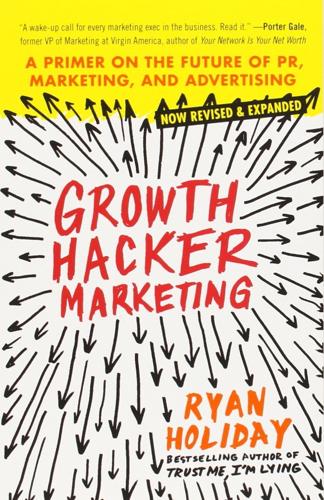
Growth Hacker Marketing: A Primer on the Future of PR, Marketing, and Advertising
by
Ryan Holiday
Published 2 Sep 2013
With a mind for data and a scrappy disregard for the “rules,” they have pioneered a new model of marketing designed to utilize the many new tools that the Internet has made available: E-mail. Data. Social media. Lean methodology. Almost overnight, this breed has become the new rock stars of the Silicon Valley. You see them on the pages of TechCrunch, Fast Company, Mashable, Entrepreneur, and countless other publications. LinkedIn and Hacker News abound with job postings: Growth Hacker Needed. Their job isn’t to “do” marketing as I had always known it; it’s to grow companies really fast—to take something from nothing and make it something enormous within an incredibly tight window. And it says something about what marketing has become that these are no longer considered synonymous tasks.
…
They got to mass market by ignoring the urge to appeal to the mass market, at least to start with. This means that our outward-facing marketing and PR efforts are needed simply to reach out to and capture, at the beginning, a group of highly interested, loyal, and fanatical users. Then we grow with and because of them. If they are geeks, they are at TechCrunch or Hacker News or Reddit or attending a handful of conferences every year. If they are fashionistas, they are regularly checking a handful of fashion blogs like Lookbook.nu or Hypebeast. If they are _______________, like you and your founders are, they are reading and doing the same things you do every day.
…
Period.) To kick off and reach your first group of users, you have many options: 1. You can reach out to the sites you know your potential customers read with a pitch e-mail: “This is who we are, this is what we’re doing, and this is why you should write about us.”* 2. You can upload a post to Hacker News, Quora, or Reddit yourself. 3. You can start writing blog posts about popular topics that get traffic and indirectly pimp your product. 4. You can use the Kickstarter platform for exposure and bribe your first users with cool prizes (and get some online chatter at the same time). 5.

Effective Programming: More Than Writing Code
by
Jeff Atwood
Published 3 Jul 2012
Heck, it’s a huge win if we read one hundred posts and learn one new valuable thing. If you’re looking for good programming blogs to sharpen your saw (or at least pique your intellectual curiosity), I know of two excellent programming specific link aggregation sites that can help you find them. The first is Hacker News, which I recommend highly. Hacker News is the brainchild of Paul Graham, so it partially reflects his interests in Y Combinator and entrepreneurial stuff like startups. Paul is serious about moderation on the site, so in addition to the typical Digg-style voting, there’s a secret cabal (I like to think of it as The Octagon, “no one will admit they still exist!”)
…
Obsessions are one of the greatest telltale signs of success. Understand a person’s obsessions and you will understand her natural motivation. The thing for which she would walk to the end of the earth. It’s OK to be a little obsessed with sharpening your saw, if it means actively submitting and discussing programming articles on, say, Hacker News. What do you recommend for sharpening your saw as a programmer? Go That Way, Really Fast When it comes to running Stack Overflow, the company, I take all my business advice from one person, and one person alone: Curtis Armstrong. More specifically, Curtis Armstrong as Charles De Mar from the 1985 absurdist teen comedy classic, Better Off Dead.
…
No matter what the documentation says, the source code is the ultimate truth, the best and most definitive and up-to-date documentation you’re likely to find. This will be true forever, so the sooner you come to terms with this, the better off you’ll be as a software developer. I had a whole entry I was going to write about this, and then I discovered Brandon Bloom’s brilliant post on the topic at Hacker News. Read closely, because he explains the virtue of reading source, and in what context you need to read the source, far better than I could: I started working with Microsoft platforms professionally at age 15 or so. I worked for Microsoft as a software developer doing integration work on Visual Studio.

Working in Public: The Making and Maintenance of Open Source Software
by
Nadia Eghbal
Published 3 Aug 2020
In a club or federation, an active contributor cohort might display prosocial attitudes that lend themselves to making decisions collectively. But that attitude doesn’t necessarily port over to the stadium model, where contributors act more like users, and only the maintainer makes decisions on behalf of a project. (One maintainer, rolling his eyes, showed me a Hacker News thread in which a developer espousing strong opinions claimed to be a “contributor” to his project. That contribution turned out to be a single pull request, from several years ago, which removed a bit of white space.) The difficulty of distinguishing contributors from users also applies to distinguishing between contributors and maintainers.
…
The team behind Homebrew, a macOS package manager, uses analytics to help maintainers make better decisions about the project’s development needs, explaining that “anonymous aggregate user analytics allow us to prioritise fixes and features based on how, where and when people use Homebrew.”172 Their decision to add tracking, announced in 2016, received mixed reviews among users. One commenter on Hacker News complained, “Why are you even collecting this information? Homebrew isn’t some for-profit product trying to optimize its funnel. Keep doing what you were doing. You were doing a great job. There is no benefit to you or us to silently spy on us.”173 Nonetheless, most users don’t opt out of Homebrew’s tracking.
…
When Richard Stallman first described free software as “free as in speech, not free as in beer,” the distinction he wished to make is that the term “free” referred to what one could do with the software, rather than to its price.195 At a conference many years later, Jacob Thornton, the developer who cocreated Bootstrap, suggested that open source is, instead, “free as in puppy”: Open-sourcing something is kind of like adopting a cute puppy. You write this project with your friends, it’s really great, and you’re like, “OK, like I’ll open-source it, it’ll be fun! Like, whatever, we’ll get on the front page of Hacker News.” . . . And it is! It’s super fun, it’s a great thing. But what happens is, puppies grow and get old, and pretty soon . . . your puppy’s kinda like a mature dog . . . . and you’re like, “Oh my god, so much time is required for me to take care of this thing!” . . . . If someone had told me a month before I open-sourced Bootstrap that I would have 40,000 stars and that I would quit fucking Twitter and I would still be spending hours a night looking at issues, I would’ve been like, “LOL, yeah right, no way, this little thing?”

So You've Been Publicly Shamed
by
Jon Ronson
Published 9 Mar 2015
If he had Downs Syndrome and he accidently pushed someone off a subway that would be different … I’ve seen things where people are like, “Adria didn’t know what she was doing by tweeting it.” Yes, I did.’ * The evening Hank posted his statement on Hacker News, outsiders began to involve themselves in his and Adria’s story. Hank started to receive messages of support from men’s-rights bloggers. He didn’t respond to any of them. Later a Gucci Little Piggy blogger wrote that Hank’s Hacker News message had revealed him to be a man with: a complete lack of backbone … by apologizing you are just saying, ‘I am a weak enemy - do with me what you will.’ [In publicly shaming Hank, Adria had] complete and utter power over his children.
…
‘When I got in the car with my wife I just … I’ve got three kids. Getting fired was terrifying.’ That night Hank made his only public statement (like Justine and Jonah, he had never spoken to a journalist about what had happened before he spoke to me). He posted a short message on the discussion board Hacker News: Hi, I’m the guy who made a comment about big dongles. First of all I’d like to say I’m sorry. I really did not mean to offend anyone and I really do regret the comment and how it made Adria feel. She had every right to report me to staff, and I defend her position. [But] as a result of the picture she took I was let go from my job today.
…
I was so taken aback by this suggestion I didn’t say anything in defence of Hank at the time. But later I felt bad that I hadn’t stuck up for him. So I emailed her. I told her what he had told me - how he’d refused to engage with any of the bloggers or trolls who sent him messages of support. I added that I felt Hank was within his rights to post the message on Hacker News revealing he’d been fired. Adria replied that she was happy to hear that Hank ‘wasn’t active in driving their interests to mount the raid attack’, but she held him responsible for it anyway. It was ‘his own actions that resulted in his own firing, yet he framed it in a way to blame me … If I had a spouse and two kids to support I certainly would not be telling “jokes” like he was doing at a conference.
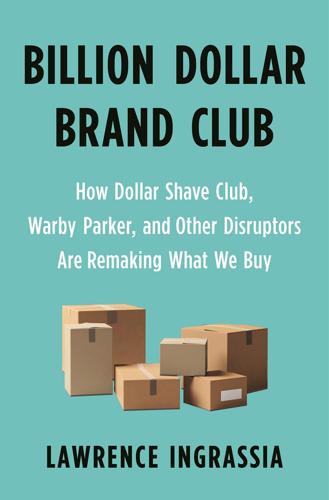
Billion Dollar Brand Club: How Dollar Shave Club, Warby Parker, and Other Disruptors Are Remaking What We Buy
by
Lawrence Ingrassia
Published 28 Jan 2020
Meanwhile, Tuft & Needle, operating in relative obscurity in Phoenix, was growing steadily—sales rose to $9 million in 2014, its second full year, from $1 million the year before—as it replaced its original five-inch mattress with an improved ten-inch version. Not only was it thicker, but Marino found scientists who formulated a better foam for a more comfortable mattress. Though the company was far from the media spotlight in New York, it finally started to get attention: a Hacker News post online in December 2013 was followed by a story in Fortune magazine in January 2014 headlined—that’s right—“Meet the Warby Parker of Mattresses.” Marino and Park, who still hadn’t raised any outside money, got calls from venture capitalists asking to invest, but the two turned them all down.
…
Mattress Firm gobbled up rivals: Jef Feeley, Matthew appearing on Townsend, and Laurel Brubaker Calkins, “How a Frenzied Expansion Brought Down America’s No. 1 Mattress Seller,” Bloomberg News, November 28, 2018, https://www.bloomberg.com/news/articles/2018-11-28/how-a-breakneck-buildout-brought-down-america-s-mattress-leader. A shop vacuum cleaner sucked air: Marino, appearing on “The Start-up That Launched the Horse Race of Online Mattress Companies.” “We had to do quite a few returns”: Hacker News online conversation, December 13, 2013, https://news.ycombinator.com/item?id=6900625. “The mattress industry is rotten”: “We Need a Warby Parker for Mattresses,” Priceonomics, September 14, 2012, https://priceonomics.com/mattresses/. reaching $15 million in 2017: “Sleeper Cell” mattress industry report for Lerer Hippeau venture capital firm, May 2, 2013.
…
the number of articles about Casper: “Casper Sleep Inc.: Marketing the ‘One Perfect Mattress for Everyone,’” Harvard Business School case study, November 15, 2017, https://www.hbs.edu/faculty/Pages/item.aspx?num=51747. sales rose to $9 million in 2014: Tuft & Needle, “Company Info,” https://press.tn.com/company-info/timeline/. A Hacker News post online: Miguel Helft, “Meet the Warby Parker of Mattresses,” Fortune, January 22, 2014, http://fortune.com/2014/01/22/meet-the-warby-parker-of-mattresses/. “Don’t worry about them”: Author interview with Michael Traub, former chief executive of Serta Simmons Bedding, June 29, 2018. There’s a machine that uses: Testing equipment explained by Chris Chunglo, Serta Simmons Bedding head of R&D, during a tour on June 29, 2018.
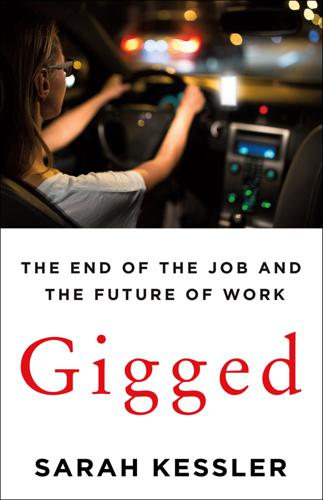
Gigged: The End of the Job and the Future of Work
by
Sarah Kessler
Published 11 Jun 2018
His company wanted him present in the office but didn’t provide enough work to fill the time. At first, he proposed additional work projects. But it would take days for teams and supervisors to sign off on them, and even then, they’d usually be rejected. So he resorted to spending most of the hours between lunch and five o’clock reading every article on the tech forum Hacker News and watching Twitch, a website that broadcasts live feeds of other people playing video games. Less than two years into his professional career, Curtis was bored out of his mind and wasting a large part of his waking time. One freezing January night, on his walk home, he decided he’d had enough of corporate employment.
…
He hated selling, marketing, and advertising, which was part of what had made coding attractive in the first place. By building Crontent, he hoped to demonstrate to startups that he had serious skills. After his morning Starbucks stop, he went to his day job. There, after finishing his work for the day, he scanned TechCrunch and Hacker News for startups that might have use for his abilities. This became his daily routine. Weeks later, during this daily scan, a different kind of startup caught his eye. “Help build the world’s engineering department,” it advertised on its website. He looked more closely. It seemed the site, called Gigster, wasn’t looking for employees to help build the world’s biggest engineering department.
…
See also Upwork Employee Benefits Security Administration (US Department of Labor) employees alternatives to current classification of independent contractors versus at Instagram Managed by Q and misclassification of retention rights of social safety nets and Uber and unionizing and Etsy (ecommerce website) Even (income management app) Facebook employee benefits versus contract workers Instagram purchased by minimum wage Uber Drivers Network NYC page Uber Freedom page Fairmondo (digital cooperative) family leave Farr, Christina Fast Company (magazine) Fidler, Devin Fissured Workplace, The (Weil) Fiverr (freelance marketplace) flexibility employees and gender and gig economy and Mechanical Turk and millennial generation and traditional schedules versus Uber and Fortune (magazine) Fortune 500 Foster, Gary (Samaschool student) Fowler, Susan (Uber employee) freelance work earnings health insurance and history of online freelancing iCEO and internet freelance marketplaces statistics temporary employees versus traditional model unionization of See also Gigster; Upwork Freelancers Union Friedman, Thomas “future of work” “Future of Work” initiative (Aspen Institute) Getty Images Gibbon, Kevin gig economy automation and bonus structure capital investment and continued relevance of cooperatives decline of earnings employee model and flexibility and freedom and future of healthcare and history of independence and independent contractors and insecurity and instability and jury duty and lawsuits and Medicare politics and portable benefits and ratings systems retirement security and as safety net socioeconomics and startup valuations as stop-gap technology unionization and unit economics worker classification worker demographics worker retention worker training and motivation Gigster (software development website) interview and screening process Karma score remote talent workers worker earnings See also Larson, Curtis Global Entrepreneurship Summit Global Information Network (GIN) Goldman Sachs Gompers, Samuel Gonzalez, Maria Good Jobs Strategy Good Jobs Strategy (Ton) Google Google Images Google Scholar Google Ventures Great Recession Great Risk Shift, The (Hacker) Green, Shakira (Samaschool student) Griswold, Alison GroupMe (messaging app) Grubhub (food delivery service) Guardian, The (newspaper) Gumora, Michael Hacker, Jacob Hacker News (tech forum) Hanauer, Nick Handy (cleaning service) customer complaints lawsuits ratings scale worker rates and benefits worker retention worker training Hanley, Dervala Hanrahan, Oisin Harris, Seth Hayek, Friedrich healthcare Affordable Care Act in Canada COBRA independent contractors and Medicare Hermes UK (delivery service) Highlight (social networking app) Holmberg, Susan Homejoy (home-cleaning service) household income H.U.G.
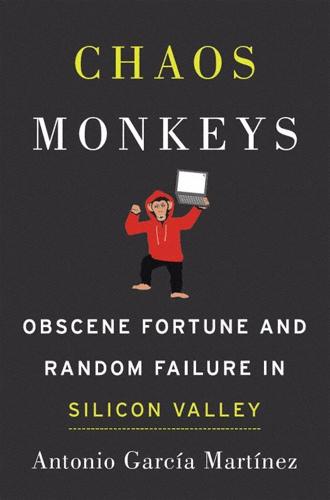
Chaos Monkeys: Obscene Fortune and Random Failure in Silicon Valley
by
Antonio Garcia Martinez
Published 27 Jun 2016
We would post on Tuesday, which left the most time for a PR blowup to echo across the Internet, and across all levels of Internet connectedness, from the assimilated Internet cyborg to the grandmother in Kansas. Around nine a.m. Pacific Standard Time I navigated to that venerable if niche corner of the Internet: Hacker News. A Reddit-like message board hosted by Y Combinator itself, it’s a weird mix of supertechnical geeks, hustling YC founders, and that species of simultaneously frustrated and sanctimonious poseur called a “wantrapreneur.” I posted the piece, while asking a few friends to upvote the article to give it some initial traction. Within minutes, it was the number one post on Hacker News, seen by every serious (and not serious) young techie in the world. Then Scoble tweeted it, and the shit really hit the fan.
…
By Monday, the hive mind would be on to its next amusing post, and we’d need to rekindle interest. This post would be the first in a series of hyperviral blog posts that would put AdGrok on the startup map (if not quite the customer one). Every three to four weeks, another gaseous emanation from the latrine of human thought (a.k.a. me) would appear and rocket us to the top of Hacker News (the tech geek’s Cosmo), and make another stir in the evanescent tech buzz-o-sphere. Until AdGrok’s very end, search terms like “goldman sachs” and “fuck you” (I had written a post about the ever-elusive goal of “fuck-you money”) would be the most popular terms that led to clicks to our site.* It irritated MRM to no end.
…
His official AdGrok nickname was “Manson Lamps,” after Tony Soprano’s psychotic rival, who possessed an intense and unsettling stare. This was a flip and admittedly unfair comparison; Sam never proved himself anything other than a capable operator and loyal friend to YC companies. I’m high-strung, fast-talking, and wired on a combination of caffeine, fear, and greed at all times. But “Sama,” as he is known on Hacker News and Twitter, really takes the cake. After an hour with him, I was looking for the closest beer bar. Standing maybe five-seven, lean and wiry, with perpetually hunched shoulders, he has clear blue eyes of an unusual intensity. A typical meeting would involve him conducting a conversation about A, with a side tangent on topic B, while considering C, and simultaneously texting on his phone and scanning his laptop screen.
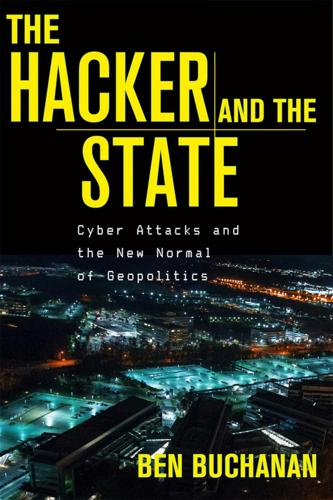
The Hacker and the State: Cyber Attacks and the New Normal of Geopolitics
by
Ben Buchanan
Published 25 Feb 2020
The conclusion seems inescapable: because of cyber operations’ possibility for automation and rapid propagation, disruption can scale. A Wolf in Weasel’s Clothing in Sheep’s Clothing The message is familiar: apply software updates. Sometimes the appeal comes from a security professional, someone who knows security patches are essential to defending against hackers’ new tricks. Often it comes in the form of an annoying dialog box, too often minimized again and again, indicating that some new version of Microsoft Office, Windows, or some other software is ready to install. Sometimes, code patches itself in the background without bothering the user. Whatever the mechanism, updating software makes sense, as it usually does improve security.2 Hackers working for the GRU, Russia’s military intelligence agency, turned that notion on its head in 2017.
…
The reference to Moscow comes from Zetter, “Inside the Cunning, Unprecedented Hack of Ukraine’s Power Grid.” 11. Dragos, “CRASHOVERRIDE: Analysis of the Threat to Electric Grid Operations,” Dragos report, June 13, 2017, 10. 12. Andy Greenberg, Sandworm: A New Era of Cyberwar and the Hunt for the Kremlin’s Most Dangerous Hackers (New York: Doubleday, 2019), 130. 13. For more on the notion of sophistication in cyber operations, see Ben Buchanan, “The Legend of Sophistication in Cyber Operations,” Belfer Center for Science and International Affairs, January 2017. 14. Rebecca Smith, “Cyberattacks Raise Alarm for U.S. Power Grid,” Wall Street Journal, December 30, 2016. 15.
…
Kenneth Geers, ed., Cyber War in Perspective: Russian Aggression against Ukraine (Tallinn, Estonia: NATO Cooperative Cyber Defence Center of Excellence, 2015), ch. 6; Ben Buchanan and Michael Sulmeyer, “Hacking Chads: The Motivations, Threats, and Effects of Electoral Insecurity,” paper, Cyber Security Project, Belfer Center for Science and International Affairs, October 2016; Mark Clayton, “Ukraine Election Narrowly Avoided ‘Wanton Destruction’ from Hackers,” Christian Science Monitor, June 17, 2014; Andy Greenberg, Sandworm: A New Era of Cyberwar and the Hunt for the Kremlin’s Most Dangerous Hackers (New York: Doubleday, 2019): 46–47. 4. Ryan Naraine, “Obama, McCain Campaigns Hacked by ‘Foreign Entity’,” Newsweek, November 5, 2008. 5. Mark Halperin and John Heilemann, “The Hunt for Pufferfish: A Double Down Excerpt,” Time, November 2, 2013. 6. Jens Gluesing, Laura Poitras, Marcel Rosenbach, and Holger Stark, “Fresh Leak on US Spying: NSA Accessed Mexican President’s Email,” Der Spiegel, October 20, 2013.

System Error: Where Big Tech Went Wrong and How We Can Reboot
by
Rob Reich
,
Mehran Sahami
and
Jeremy M. Weinstein
Published 6 Sep 2021
See also optimization mindset Einstein, Albert, 77 election fraud alleged in 2020 presidential election, xi Electronic Frontier Foundation (EFF), 119–20 Electronic Privacy Information Center (EPIC), 150 Emanuel, Ezekiel J., 243 encryption, xv, 13, 72, 116, 127–29, 134 Encyclopaedia Britannica, 195 “End of Food, The,” Soylent reported to be, 9 engineers, 6, 10–15, 28–30, 31–33 environment vs. factory farms, 20–21 epistocracy, democracy vs., 66–68 ethics and AI, 165–66 ethics and politics of technological change, xvi–xvii, xx–xxi, xxiii European Commission, 136 European Data Protection Authorities, 145 European model of capitalism, 181 European Union antitrust actions against Google, 228–29 GDPR data protection, 142–45, 147, 238, 241 social safety nets, 185–86 Vestager’s roadblocks to big tech, 252–53, 255 Everyday Sexism Project, 220 expert rulers’ incentive to maintain their status, 68 externalities, xxvi, 48, 73, 200, 260 extremists right to use hate speech in the US, 189–90 FAccT/ML (Fairness, Accountability, and Transparency in Machine Learning), 89 Facebook acquisition of Instagram, 229 business model, xxvii, 18–19 Cambridge Analytica scandal, 37, 128, 146–47, 254 Christchurch, New Zealand, terrorist attack livestreamed, viral, removed, 189 data mining, 118–19 DeepFace system, 161, 162 deleting derogatory statements about men, 188 as digital civic square, 21 and end-to-end encryption, 127–28 FTC complaints against, 150, 253 global audience for truth or lies, 192–93 lawsuit for using facial recognition tech, 46–47 market dominance of, 227 Oversight Board of Facebook, 213–16 plan to comply with GDPR, 145 population of users nearly double that of China, 188–89 #StopProfitForHate campaign vs., 224–25 study of privacy settings, 137 Terms of Service excerpt, 118–19 Zuckerberg appears before House committee, 64–65 See also big tech platforms facial recognition aerial surveillance systems, 112 deep learning, 161–62 downstream applications, 17 Facebook sued for using, 46–47 human supervision requirement, 85 loss of liberties in a democratic society, 125 modern revival of physiognomy, 249 paradox, 113–15 prioritizing optimization vs., 15, 17 protecting celebrities from stalkers, 111–12 women and dark-skinned people, 113 factory farming as a success disaster, 20–21 Factory Investigating Commission, New York, 55 fairness, xxxiii, 20, 73, 88–94, 97, 99, 101, 103, 104, 106–8, 166, 237 Family Educational Rights and Privacy Act (FERPA), 140 famines as man-made political disasters, 74 Federal Bureau of Investigation (FBI), 128–29, 134–35 Federal Communications Commission (FCC), 58, 228 Federal Constitutional Court of Germany, 143 Federal Trade Commission (FTC), 118, 150–51, 228, 253 financial sector, 163–64, 254–55 First Amendment of the Constitution of the United States, 189, 191–92, 214, 216, 217 Flexner, Abraham, 244–45 Floyd, George, murder of, 69 Foot, Philippa, 155 Ford Pinto’s design flaw, 36–37 Foster, Bill, 52 Foucault, Michel, 122–23 free speech and the internet, 187–230 overview, 187–91 beyond self-regulation, 216–21 Christchurch, New Zealand, terrorist attack livestreamed, 189 collision of free speech with democracy and dignity, 198–202 creating a more competitive marketplace, 227–30 exceptions to free speech, 217 foreign interests with election-related advertising as an exception, 225 the future of platform immunity, 221–26 hate speech, 187–91, 200–201, 218 online efforts to regulate speech, 219–21 speech and its consequences, 191–97 Twitter’s suspension of Trump, xi-xii, 187–88 See also creating an alternative future freedom of expression, 198–99 Furman, Jason, 184 Galetti, Beth, 79–80, 99 Gates, Bill, 183 Gebru, Timnit, 112–13, 250 gender bias in recruiting system, 81–82, 83, 100–1 General Data Protection Regulation (GDPR), 142–45, 147, 149, 238, 241, 255 Germany, 143, 217–18 Gibbons, Jack, 258 gig economy workers, 47–49 Gillibrand, Kirsten, 151 Gingrich, Newt, 259 Glickman, Aaron, 243 Go, AI playing, 157 goals, of algorithmic models, 15–16, 18–21, 34–37 “Goals Gone Wild” (Ordóñez), 34–37 Gonzalez, Lorena, 48, 95 Goodhart’s Law, 19 Goodrow, Cristos, 33–34 Google AI ethics board dissolved, 166 data mining, 117 differential privacy technology used by, 131–32 employees protest sale of AI tech, 17 engineers actively unionizing, 180 European Commission lawsuit against, 136 Founders’ Award, 28 Gebru, firing of, 250 Google Buzz launch, 120 management by OKRs, 32–33 market dominance of, 227, 228 OpenSocial specification, 256 partnership with Apple, 113, 141 Pichai appears before House committee, 64–65 state attorneys general filing suit against, 253 Google Buzz, 120 Gore, Al, 59–60 governance, 66–68, 69–72, 105–7, 263–64 government AI-related taxes on businesses, 182–84 Clipper Chip technology, 115–16 companies helping to manage consequences of AI, 184 creating an agency responsible for citizen privacy rights, 150–51 data collection by public institutions, 140–42, 151 developing a new relationship with tech sector, 241 legitimacy of, 68 reasons for involvement in free speech on the internet, 221–26 tax-related subsidies for businesses, 179 See also regulations GPT-2 and GPT-3, OpenAI’s language models, 233–37 greedy algorithms, 12–13 Greenspan, Alan, 61 gross domestic product (GDP), 173 Group Insurance Commission (GIC) of Massachusetts, 130 Grove, Andy, 51 “Guerrilla Open Access Manifesto,” xxii–xxiii Hacker News website, 8 hackers computer scientists as, 21–22 Hacker News, 8 influencing political arena, 46 iPhones’ back door as a challenge to, 135 life hacking website, 14 marriage of capitalists and, 28, 52, 68 Hall, Margeret, 250 happiness in life, importance of, 167, 168 Harvard University Data Privacy Lab, 130–31 Hashemi, Madhi, 250 Hastings, Reed, 5–6 hate speech, 187–91, 200–201, 218, 224–25 Hawley, Josh, 223 Health Insurance Portability and Accountability Act of 1996 (HIPAA), 129, 140, 246 hedge funds using AI, 163–64 Hertzberg, Robert, 95 High Bar for Talent, Amazon’s, 79–80 High Performance Computing and Communications Act (1991), 59–60 Hinton, Geoff, 164 Hoffman, Reid, xxviii, 39, 51–52 Holmes, Elizabeth, xxx Holt, Rush, 52 Hong Kong protests in 2019, 125 Hooked on Phonics, 150 Horowitz, Ben, 42 Houghton, Amo, 259 Human Development Index (HDI), 173 human intelligence compared to machine intelligence, 158–59.
…
The wafer is revealed in the final scenes to be produced from human flesh, and the dystopia of overpopulation turns out to be an even greater horror in which cannibalism is the only way to survive. Rhinehart never claimed to be a branding genius. Despite this, his blog post attracted attention. It was especially popular on a site called Hacker News, a place for the tech community to learn about clever inventions and gizmos to make life better and save time. Rhinehart saw an entrepreneurial opportunity, and he posted about Soylent on a crowdfunding site, promising to deliver a week’s worth of Soylent in return for a modest donation of $65.
…
Software Engineering Code of Ethics: Don Gotterbarn, Keith Miller, and Simon Rogerson, “Software Engineering Code of Ethics,” Communications of the ACM 40, no. 11 (November 1, 1997): 110–18, https://doi.org/10.1145/265684.265699. As Jack Dorsey lamented: Lauren Jackson and Desiree Ibekwe, “Jack Dorsey on Twitter’s Mistakes,” New York Times, August 19, 2020, https://www.nytimes.com/2020/08/07/podcasts/the-daily/Jack-dorsey-twitter-trump.html. “Suppose somebody like Hitler”: Michael Specter, “The Gene Hackers,” New Yorker, November 8, 2015, https://www.newyorker.com/magazine/2015/11/16/the-gene-hackers. called for responsible publication guidelines: Rebecca Crootof, “Artificial Intelligence Research Needs Responsible Publication Norms,” Lawfare, October 24, 2019, https://www.lawfareblog.com/artificial-intelligence-research-needs-responsible-publication-norms; Miles Brundage et al., The Malicious Use of Artificial Intelligence: Forecasting, Prevention, and Mitigation (Oxford: Future of Humanity Institute, 2018), https://maliciousaireport.com/.

The Optimist: Sam Altman, OpenAI, and the Race to Invent the Future
by
Keach Hagey
Published 19 May 2025
The previous year, he had launched the Thiel Fellowships, offering $100,000 to promising young entrepreneurs to forgo elite universities and start companies. And yet here he was, standing before a podium at his alma mater, teaching a class about something seemingly much larger, and much weirder, than making money.1 It was a sensation. One student, Blake Masters, took notes and posted them online, where they went viral on Hacker News, Y Combinator’s web forum. Those notes would go on to form the basis for the bestselling 2014 book From Zero to One, co-authored by Thiel and Masters two years later. David Brooks of The New York Times devoted a whole column to Masters’s summary of the course’s lessons.2 And yet its main message—that competition was actually destructive and companies should strive to create mini-monopolies in new markets rather than slog it out in established ones—was not the main message of the class.
…
There will be a lot more startups in 10 years than there are now, and if YC is going to fund them, we’ll have to grow proportionally bigger.”2 The problem was that Graham’s method of working did not, in Valley-speak, “scale.” As Paul Buchheit, the creator of Gmail who became one of YC’s earliest and most devoted angel investors and partners, put it, “PG’s a really great one-man show. He runs everything himself.” He wrote all of YC’s software, moderated its increasingly popular message board, Hacker News, interviewed candidates and advised them during office hours. It was the equivalent of “four jobs,” Buchheit said. “It was basically taking over his whole life.” As Graham and Livingston began having children, he found himself wanting more time to devote to them, as well as to his own projects, including his essays and the dialect of the Lisp programming language he had been working on before YC blew up.
…
CHAPTER 5“STOPPING OUT” 1.Olivia Winslow, “William McAdoo, 67, Stony Brook Professor,” Newsday, November 13, 2003. 2.Tom Nicholas, VC: An American History (Cambridge, MA: Harvard University Press, 2010), 225–31. 3.Ann Grimes, “Sequoia Capital Quietly Doles Out Google Shares Worth $1.3 Billion,” The Wall Street Journal, January 17, 2005. 4.Ronald Chan, “Kiss Me Cardinal,” Stanford Daily, October 18, 2005. 5.Mark Bergen, Like, Comment, Subscribe: Inside YouTube’s Chaotic Rise to World Domination (New York: Viking, 2022), 52. 6.Livingston, Founders, 451. 7.Meghna Rao, “Carolynn Levy, Inventor of the SAFE,” Meridian. 8.Paul Graham, comment on Hacker News, March 9, 2012. 9.Botha, R., “Declaration,” filed as part of Oracle America, Inc. v. Google Inc., No. 10-03561 (N.D. Cal., March 12, 2014). 10.“YouTube Receives $3.5M in Funding from Sequoia Capital,” YouTube Official Blog, November 7, 2005. CHAPTER 6“WHERE YOU AT?” 1.Liz Gannes, “Y Combinator’s New Head Startup Whisperer Sam Altman Is Quite a Talker,” Re/code, March 18, 2014. 2.Ibid. 3.Ibid. 4.Tamara Chuang, “Cell Phones Change Social Networks,” The Orange County Register, September 12, 2006. 5.
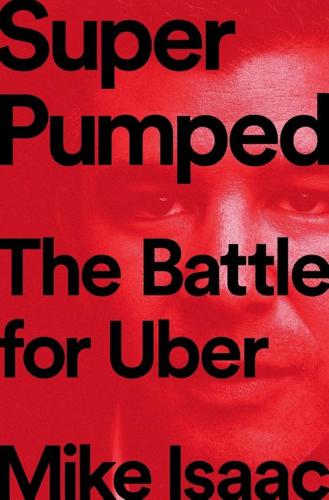
Super Pumped: The Battle for Uber
by
Mike Isaac
Published 2 Sep 2019
Why would a ride-hailing app need access to their customers’ text messages or camera? It was seen as a broad overreach into users’ privacy. Not only was Uber willing to go after journalists, but the company also wanted to know everything about you and your phone. The blog post blew up. After circulating across security forums and other internet sites, it landed on Hacker News, a message forum widely read by engineers and the Silicon Valley elite. What those readers didn’t know was that the armchair hacker had stumbled upon the secret InAuth code library, written inside of the Uber app as part of their secret deal. In order to fingerprint devices, InAuth required far more data than the average smartphone app, which meant asking for all sort of extended permissions.
…
Hackers being hackers, the App Store moderators saw all sorts of little tricks and shortcuts inside the code of apps in the store, some worse than others. Uber’s constant sleight of hand was a pain, but relying on the App Store team to police them was worth the resources. But things went downhill fast at the end of 2014. App Store leaders had seen the Hacker News post where Uber’s Android app had been decompiled and exposed for the data-sucking beast that it was. Sure enough, Uber’s iOS app was asking for the same types of permissions as well. Uber’s “fingerprinting” solution wasn’t going to fly. As the holidays approached and engineers rushed to get their code approved before everyone took off for vacation, Apple began rejecting Uber’s attempts to push the fingerprinting techniques inside the iOS app.
…
Chapter 16: THE APPLE PROBLEM 156 BuzzFeed ran its story: Ben Smith, “Uber Executive Suggests Digging Up Dirt on Journalists,” BuzzFeedNews, November 17, 2014, https://www.buzzfeednews.com/article/bensmith/uber-executive-suggests-digging-up-dirt-on-journalists. 156 an enterprising young hacker: Average Joe, “What the Hell Uber? Uncool Bro.,” Gironsec (blog), November 25, 2014, https://www.gironsec.com/blog/2014/11/what-the-hell-uber-uncool-bro/. 156 it landed on Hacker News: “Permissions Asked for by Uber Android App,” Y Combinator, November 25, 2014, https://news.ycombinator.com/item?id=8660336. Chapter 17: “THE BEST DEFENSE . . .” 165 Kalanick also held court over “Hell”: Amir Efrati, “Uber’s Top Secret ‘Hell’ Program Exploited Lyft’s Vulnerability,” The Information, April 12, 2017, https://www.theinformation.com/articles/ubers-top-secret-hell-program-exploited-lyfts-vulnerability. 166 Those programs fell under: Kate Conger, “Uber’s Massive Scraping Program Collected Data About Competitors Around The World.”

Makers at Work: Folks Reinventing the World One Object or Idea at a Time
by
Steven Osborn
Published 17 Sep 2013
What if I turn it on and nobody shows up? I still didn’t know right up until the end. Basically I said “Why not? Just do it. If no one shows up, it’s no harm, no foul. Just wasted a few weeks of development time,” and that was that. Fortunately, when I launched the site, I put it up on Reddit and I put it up on Hacker News. I think it went to number one on Hacker News. From basically that first day, there were ten thousand to twenty thousand people on the site. At that point, we had roughly twenty projects on Tindie and had our first orders that day. I guess that kind of set the wheels in motion. Osborn: So you just had your one-year anniversary.
…
Since I had already learned how to code, it was a bit more tangible at that point. That’s when I could dive in and start playing around with Arduino. From there, it really just became a question of what projects could I build and where could I find them? What I was seeing was a lot of interesting projects pop up on web sites like Reddit, Hacker News, Hackaday. Basically, it would be a one-off project, where the maker would say, “Here’s the design. Here are the instructions. I’m done with this project. I’m moving on to whatever else I’m interested in.” The problem for a beginner was if I was to start off by building some little project, you’re probably going to have a tough time figuring out how to source parts, what parts you need, and all of that.
…
See Migicovsky, Eric Petrone, Emile Apple-product clones applications Arduino and Raspberry Pi Arduino clones Arduino platform audience backbone code camps cheap computers community-driven process consumer side CSS3 3D designs 3D printer ecosystem education background employees feedback loop Femtoduino fundraiser feature half-million dollars hardware revolution hiccups JavaScript juggling balls key players Kickstarter/IndieGoGo kits/projects Knowble Launchpad community maker business manufacturing process one-year anniversary open-source code outside VC/investment paraphrase patent/protection pick-and-place machine positive feedback product price RC planes Reddit, Hacker News, Hackaday self-taught web engineer site launching small run speed stock market symbiotic relationship trade tricks transparent marketplace Pettis, Bre amazing model Arduino-based hardware Atmel microcontroller CEO and co founder (Makerbot.com) command-line tool 3D digitizing scanner 3D printing early experience Hackerbot labs MakerBot Digitizer MakerBot Replicator MakerBot Thing-O-Matic medical cases NYC Resistor professional-quality machine RepRap prototypes Robohand project Stratasys acquisition Thingiverse video blogging Photonicinduction PIC chips Pico projector Printed circuit boards (PCBs) Programma 2003 “Publish and be damned” Pulp-Based Computing R Radio Shack firestarter Raspberry Pi Foundation.
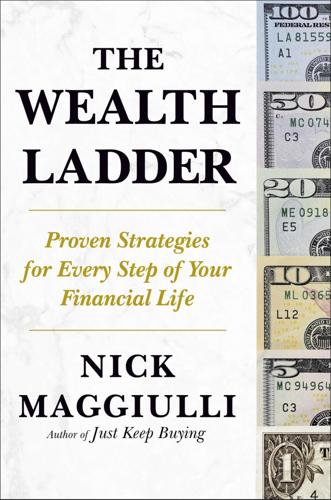
The Wealth Ladder: Proven Strategies for Every Step of Your Financial Life
by
Nick Maggiulli
Published 22 Jul 2025
In other words, do you or your family have sufficient financial resources for you to take this risk? While I want to say wealth doesn’t matter when it comes to starting a business, unfortunately, it does. Having a backup plan if things don’t work out allows you to take bigger risks than someone who doesn’t have the same resources. It reminds me of this anonymous Hacker News comment from November 2017: Entrepreneurship is like one of those carnival games where you throw darts or something. Middle-class kids can afford one throw. Most miss. A few hit the target and get a small prize. A very few hit the center bull’s-eye and get a bigger prize. Rags to riches!
…
Jones and Daniel Kim, “Most Successful Entrepreneurs Are Older Than You Think,” Clifford-Lewis Private Wealth, February 11, 2023, https://www.clifford-lewis.com/blog/most-successful-entrepreneurs-are-older-than-you-think. BACK TO NOTE REFERENCE 14 Jones and Kim, “Most Successful Entrepreneurs Are Older Than You Think.” BACK TO NOTE REFERENCE 15 Comment on “Entrepreneurs Aren’t a Special Breed—They’re Mostly Rich Kids,” Hacker News, November 9, 2017, https://news.ycombinator.com/item?id=15659076. BACK TO NOTE REFERENCE 16 Zev Stub, “Parents’ Income, Not Smarts, Key to Entrepreneurship—Study,” Jerusalem Post, January 28, 2021, https://www.jpost.com/israel-news/parents-income-not-smarts-key-to-entrepreneurship-study-657058.

From Satori to Silicon Valley: San Francisco and the American Counterculture
by
Theodore Roszak
Published 31 Aug 1986
The connections between these two seemingly contradictory aspects of the movement 15 are fascinating to draw out and ponder - especially since both wings of came the conterculture Bay Area than any place here in the San Francisco else. This found is ter) its where the Zen-Taoist impulse arose and example, (for be more fully unfolded to San Francisco Zen Cen- in the most studied expression America; in where the mendicant-communitarian urban and rural, found is where the announced its cal energies. hackers new its ecological this is who would both main public examples; presence and And this is lifestyle, first sensibility organized this first its politi- where the inspired young revolutionize Silicon Valley gathered in their greatest numbers. The truth is, if one probes just beneath the surface of the bucolic hippy image, one finds this puzzling infatuation with certain forms of outre technology reaching well back into the early I first became aware of its when I realized knew during that presence that the countercultural students period were almost exclusively, readers of science fiction.

Without Their Permission: How the 21st Century Will Be Made, Not Managed
by
Alexis Ohanian
Published 30 Sep 2013
These days, there are so many more of us connected and sharing that it’s nearly impossible for something with any degree of novelty or usefulness to go unnoticed. I’ll break it all down in chapter 5, but the media are everywhere. Incidentally, reddit is a big part of that and was quite a boon for launching hipmunk (’twas all part of the very, very long-term plan!). I asked one of the inbound press requesters how she had heard about us—Hacker News (News.YCombinator.com —a reddit for startup news). Journalists are getting story ideas from us. And why not? The zeitgeist has never been more evident, so it makes sense to write about what we’re already starting to buzz about. This successful launch story is rather typical. Build something people want, launch it to the world, try not to vomit, and see what happens.
…
Networks like this don’t have to exist within a tech accelerator, but if you can find one that suits both you and your project, you’ll likely find many peers there to learn from and share with. Particularly in the Internet industry, there is a strong desire to distribute knowledge, not lock it up. Reputations are built by those who dish out experience and insight. The knowledge sharing happens online—these days within communities like/r/entrepreneur, /r/startups, and Hacker News as well as on Quora and even Twitter. But don’t get hung up on the particular platforms of the moment; you can find the discussions wherever they’re happening online. And when they’re not happening online, they’re happening off-line, at cafés, bars, and work spaces. Even in an increasingly digital world, there’s still no replacement for quality face time (never turn down cannoli!).
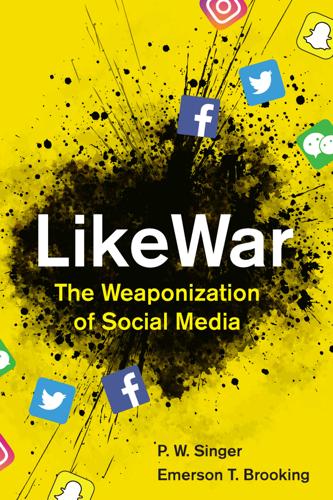
Likewar: The Weaponization of Social Media
by
Peter Warren Singer
and
Emerson T. Brooking
Published 15 Mar 2018
This ethos was on clear display at Hacker News, a popular Silicon Valley forum board, when “Political Detox Week” was announced shortly after the 2016 U.S. presidential election. As the rest of the country struggled to come to terms with the election results, an administrator declared: Political stories are off-topic. Please flag them. Please also flag political threads on non-political stories. For our part, we’ll kill such stories and threads when we see them. Then we’ll watch together to see what happens. Why? Political conflicts cause harm here. The values of Hacker News are intellectual curiosity and thoughtful conversation.
…
nytmobile=0&_r=0. 222 “You’re so focused”: Deepa Seetharaman, Robert McMillan, and Georgia Wells, “Tone-Deaf: How Facebook Misread America’s Mood on Russia,” Wall Street Journal, March 2, 2018, https://www.wsj.com/articles/tone-deaf-how-facebook-misread-americas-mood-on-russia-1520006034. 222 “Political stories”: “Tell HN: Political Detox Week,” Hacker News, Y Combinator, accessed March 20, 2018, https://news.ycombinator.com/item?id=13108404. This is a fascinating discussion thread that digs deep into the Silicon Valley zeitgeist. 222 “If we could use code”: Authors’ interview with senior social media company official, Washington, DC, July 14, 2016. 223 pleas from Ukrainian activists: Volodymyr Scherbachenko, “We Support Ukraine on Facebook!
…
. § 230 (1996), 224–25 4 Ds, 107 4chan, 173–74, 187 France, 7–8 Franceschi-Bicchierai, Lorenzo, 268 Franklin, Benjamin, 29 free speech, 145, 228–30, 238, 239, 266–67 Freedom Flotilla, 199 Freedom’s Secret Weapon, 192 #FreeMosul, 10–11 #FreeTibet, 141 Friendster, 45 Fuentes Rubio, María del Rosario, 69–70 fundraising, 9, 65, 128, 178 Furie, Matt, 187 future dangerous speech, 266–67 military training for, 258–60 recommendations for, 261–66 responsibility for, 267–73 of social media, 248–57 G Galloway, Scott, 248 Gamergate, 229–30 Gangster Disciples, 12 Garza, Alicia, 163 gaslighting, 116 Gaza City, 193–200 #GazaUnderAttack, 197 #GazaUnderFire, 195 Gen Next, 172 generative adversarial networks, 256–57 generative networks, 254–55 geographical data, 58–59 Gerasimov, Valery, 106 Gerasimov Doctrine, 106–7 Germany Center of Defense Against Disinformation, 211 communication in World War I, 181 cybersecurity, 241 propaganda in World War II, 7–8 refugees and, 206–7 Ghonim, Wael, 85 Giesea, Jeff, 192 Gilmore, John, 83 Gingrich, Newt, 142 Goebbels, Joseph, 32–33, 192 Golden Shield Project, 96–97 Google ISIS and, 152, 236–37 laws governing, 225 origin of, 40, 219 profits, 119 regulation, 228 searches, 45 transparency reports, 232 See also YouTube Google Brain project, 249 Google Maps, 63, 72 Google Play Store, 48 Google Translate, 8 Gore, Al, 39 Gorka, Sebastian, 112 Great Firewall, 96, 102, 184, 253 growth Facebook users, 46 hours spent online, 137 internet use, 39, 44, 51–52, 95 smartphone use, 48 Twitter use, 48–49 Gumbel, Bryant, 24 Gurría, José Ángel, 40–41 Gutenberg, Johannes, 28 GVA Dictator Alert, 75–76 H Haberman, Maggie, 169 Hacker News (forum), 222 hacktivists, 212–13 Hammami, Omar, 160 harassment, online, 227–28, 235, 250–51 harmony, in China, 96, 98, 101 Harper, Stephen, 60 Harrman, John, 134 hasbara, 198, 199–200 Hassan, Ruqia, 70 hate crimes, 238–39 Hayes, Rutherford B., 31 Hearst, William Randolph, 31, 46 Heider, Fritz, 157 Hero with a Thousand Faces, The (Campbell), 159 Herrman, John, 221 Hezbollah, 65 Higgins, Eliot, 72, 75, 109 hijacking hashtags, 141, 152, 195, 231 memes, 191, 192–93 Russia and, 111 Hills, The (TV show), 155, 158 Hitler, Adolf, 33, 76, 186, 259 Hoefflinger, Mike, 222 homophily confirmation bias and, 125–26, 130 consequences, 124–25, 208 definition, 123 during elections, 132–33 Russia and Ukraine, 201–2 of social media companies, 145–46 validation vs. information, 134 honeypot, 115 Howdy Doody Show, The (TV show), 33 Hrabove plane crash, 71 Hu Jintao, 96, 98 Huffman, Steve, 241 Hughes, Seamus, 170 human intelligence (HUMINT), 78 Hurley, Chad, 218 Hussain, Junaid, 148–49, 150, 158, 167–68, 195 hyperlinks, 38 hypertext, 38 hypertext markup language (HTML), 38, 44 hypertext transfer protocol (HTTP), 38 I identity masking technology, 89–90 India, 62–67, 89, 136 Indonesia, 213 influence botnets, 144–45 campaign ads, 178 confirmation bias, 121, 125, 130, 132–33, 137, 208 elections.
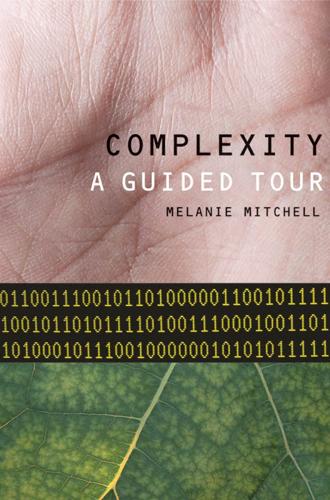
Complexity: A Guided Tour
by
Melanie Mitchell
Published 31 Mar 2009
ConsumerAffairs.com, August 13, 2007, [http://www.consumeraffairs.com/news04/ 2007/08/lax_computers.html]; and Schwartz, J., “Who Needs Hackers?” New York Times, September 12, 2007. “Long-Term Capital Management”: see, e.g., Government Accounting Office, Long-Term Capital Management: Regulators Need to Focus Greater Attention on Systemic Risk. Report to Congressional Request, 1999, [http://www.gao.gov/cgi-bin/getrpt?GGD-00-3]; and Coy, P., Woolley, S., Spiro, L. N., and Glasgall, W., Failed wizards of Wall Street. Business Week, September 21, 1998. “The threat is complexity itself”: Andreas Antonopoulos, quoted in Schwartz, J., “Who Needs Hackers?” New York Times, September 12, 2007. “Self-Organized Criticality”: for an introduction to SOC, see Bak, P., How Nature Works: The Science of Self-Organized Criticality.
…
A., Ferguson, N. M., Nyamukapa, C. A., Anderson, R. M., Johnson, A. M., and Garnett, G. P. Scale-free networks and sexually transmitted diseases: A description of observed patterns of sexual contacts in Britain and Zimbabwe. Sexually Transmitted Diseases, 31(6), 2004, pp. 380–387. Schwartz, J. Who needs hackers? New York Times, September 12, 2007. Selvam, A. M. The dynamics of deterministic chaos in numerical weather prediction models. Proceedings of the American Meteorological Society, 8th Conference on Numerical Weather Prediction, Baltimore, MD, 1988. Shalizi, C. Networks and Netwars, 2005. Essay at [http://www.cscs.umich.edu/~crshalizi/weblog/347.html].
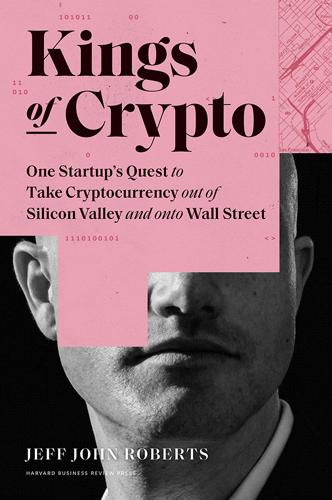
Kings of Crypto: One Startup's Quest to Take Cryptocurrency Out of Silicon Valley and Onto Wall Street
by
Jeff John Roberts
Published 15 Dec 2020
Mow’s criticism was civil, if barely. Brian faced far cruder criticisms on social media and on Reddit, a site he read religiously. Unlike most of Silicon Valley, he did not keep up with Techmeme or TechCrunch, two websites that served up industry news and gossip. Brian preferred the hurly-burly of Reddit and Hacker News, sites that encouraged vis-itors to share headlines and yammer on about their favorite topics, including cryptocurrency. Since the start of Coinbase, Brian and Fred had been eager participants in these debates—explaining and defending the company’s decisions and chatting with fans and critics alike.
…
See Zhao, Changpeng DAO (Decentralized Autonomous Organization), 90–93, 145–146, 169–170 dApps, 188 Davenport, Ben, 57 decentralized finance (DeFi), 217–218 Dentacoin, 138 Dewitt, Dorothy, 224 Digital Asset, 104, 105 Digital Gold (Popper), 23 Dimon, Jamie, 103, 138, 211–213 diversity, 225 Dixon, Chris, 69, 93, 124, 157, 216 Dogecoin, 54, 181–182 Dorman, Jeff, 105–106 Draper, Tim, 167 Dread Pirate Roberts, 31, 59, 122 Earn.com, 186–187 Ehrsam, Fred, 10–14 on Ethereum and smart contracts, 93–95 on the future, 220, 225–226 the hedger and, 174 Olaf hired by, 28–29 Electronic Frontier Foundation, 100 electronic market makers, 192 Elliott Wave Theory, 151 enterprise blockchain, 73 ether, 92–93 Ethereum, 84, 87–97 Binance and, 182 blockchain issues in, 202 flash crash of, 139–141 hard fork at, 91–93 market caps of, 203 popularity of, 134–139 value of, 152 Ethereum Classic, 196 Facebook, 63, 64 Project Libra, 205–207 Winklevoss twins and, 114–115 Farmer, David, 159, 175 Federal Bureau of Investigation, 59–60, 126–127 Federal Reserve, 12, 53, 212 Federal Reserve Bank of New York, 102 Fidelity, 209–210 Financial Crimes Enforcement Network, 126 Financial Times, 136–137 Finney, Hal, 23 flash crashes, 139–141 Forbes magazine, 148 Force, Carl Mark, IV, 59–60 Fortune magazine, 206 Founder’s Fund, 166–167 Freeman, Kristian, 153 Galaxy Digital, 172 Garlinghouse, Brad, 224 GDAX (Global Digital Asset Exchange), 96–97, 101–103 flash crash in, 139–141 professional traders and, 113–117 Gemini, 97, 105, 116–117 Gemini Dollar, 205 geo-fencing, 40 Gilmore, John, 100 Give Crypto, 175 Goldman Sachs, 11–12, 37, 104, 171, 212 on bitcoin, 225 Elliott Wave Theory at, 151 Google, 40, 64, 157, 195–196 Google Ventures, 204 Graham, Paul, 36 Grayscale, 54 Grayscale Bitcoin Trust, 208 Hacker News, 78 Hacking Team, 197 Hammell, Craig, 38, 64 on adding currencies, 181–182 on Hirji, 191 on infrastructure, 155–156 Hanyecz, Laszlo, 22 hard forks, 92, 147 Haun, Katie, 17–18, 20, 155, 225 as Coinbase ally, 49 cryptocurrency expertise of, 59–60 on prosecuting bitcoin, 24, 31 at Stanford, 107, 218 Hearn, Mike, 76 hedge funds, 96, 172 Heroku, 156 hijackers, 142–143 Hilton, Paris, 144–145 Hirji, Asiff, 157–158, 173–175, 209 on Binance, 183 departure of, 198–199 on Earn.com, 187 on the future of crypto, 216–217 Srinivasan and, 193–200 style and personality of, 190–193 Hirschman, Albert, 48, 185 “hockey stick growth,” 51–52 hodlers, 83–84 HoweyCoin, 168–169 IBM, 90, 216 ICOs (initial coin offerings), 135–138 Binance and, 179 HoweyCoin and, 168–170 SEC on, 145–146, 168–170 swindles around, 141–145 impulse wave pattern, 151 infrastructure, 75–84, 155–159, 209–210 insider trading, 160 Internal Revenue Service, 121–126, 173 Jobs, Steve, 7, 99, 109, 111 JPM Coin, 212 JPMorgan Chase, 103, 104, 138, 211 Karpelès, Mark, 55–58 Knight, Phil, 39 KodakCoin, 167 Kraken, 96–97, 114 Lamborghinis, 146–147, 167 Langschaedel, Julian, 39 Lawsky, Benjamin, 127 Lee, Bobby, 82 Lee, Charlie, 39–40, 54, 80–81, 88 in Beijing, 81–83 departure of from Coinbase, 117–118 on infrastructure, 156 Litecoin and, 223 on Mt.
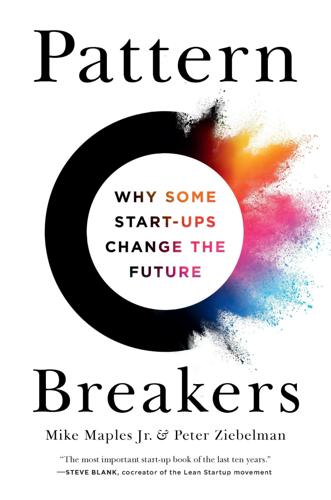
Pattern Breakers: Why Some Start-Ups Change the Future
by
Mike Maples
and
Peter Ziebelman
Published 8 Jul 2024
Direct interactions with industry leaders, curated content lists, and immediate feedback loops can help you generate and refine your ideas in areas that interest you most. Other future-dwellers have encountered fellow time travelers and potential co-conspirators while exploring online forums like Hacker News and Product Hunt. What are the characteristics of people who did not hesitate to break the pattern of the present? They have unconventional ways of thinking, feeling, and acting—behaviors that will familiarize you and get you comfortable with that different future. Sam Altman is a good example.
…
Whether it’s with initial customers, the start-up team, investors, or other early believers, it’s usually better to be straightforward to the point of bluntness than it is to be concerned about offending people by being honest. REJECTING REJECTION Disagreeableness counters negativity and rejection. Start-ups that achieve greatness often experience constant early rejection. When Dropbox founder Drew Houston initially posted a video demo of Dropbox on a popular site called Hacker News, he received many negative comments. They are entertaining to read in hindsight, but they tested Drew’s confidence in his idea. One critic remarked, “For a Linux user, you can already build such a system for yourself quite trivially.” Another suggested, “You still need to carry a USB drive in case there are connectivity problems.”
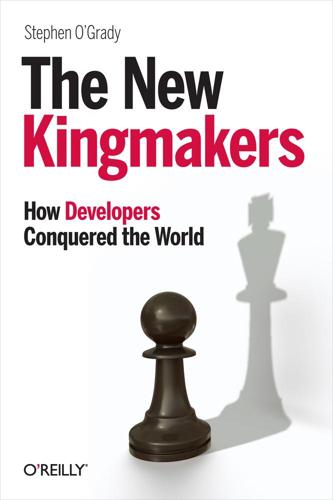
The New Kingmakers
by
Stephen O'Grady
Published 14 Mar 2013
Businesses that wish to engage developers need to reach out to the developers rather than wait for the developers to approach them of their own accord. Understand where the conversations are happening: in many communities it’s Internet Relay Chat (IRC), in others it might be listservs. Broader, less community-centric conversations are happening every minute at developer-centric destinations like Hacker News and Reddit Programming. Part of your developer marketing effort must be listening to channels like these, either directly or through third parties, be they human or algorithm. From an outbound perspective, marketing materials should consist primarily of either code or documentation. MindTouch, for example, argues that documentation represents potential profit, rather than a cost, because it’s not a finely crafted mess of marketing jargon—documentation is legitimately useful from a developer’s perspective.

Abolish Silicon Valley: How to Liberate Technology From Capitalism
by
Wendy Liu
Published 22 Mar 2020
I crossed “management consultant”, ink still drying, off my list. One interview offer I never took up. At the beginning of the semester, I had written a blog post about a mild security vulnerability that I’d discovered in a piece of software used at my university. Unexpectedly, the post had gone viral, even climbing to the top of Hacker News, the popular news aggregation service created by my startup hero Paul Graham. Not long after, I got an email from the company making the software, and at first I was terrified that it would be some sort of legal threat, but it turned out to be an invitation to interview for a job. No, I responded politely, but thanks.
…
He thought we might even get into Y Combinator, the accelerator founded by my startup idol Paul Graham. I had technically already committed to working at Google, but I was intrigued nonetheless. Even though I had devoured copious blog posts about startups, and even though I read stories about startups on Hacker News almost daily, it hadn’t occurred to me that a startup was something I could just do. But it sounded like a viable alternative to the dread I associated with Google, so I looked over the application for Y Combinator and tried to come up with a clever response to the question of when I last “hacked some (non-computer) system”.
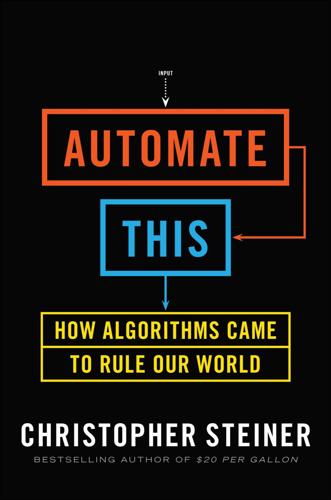
Automate This: How Algorithms Came to Rule Our World
by
Christopher Steiner
Published 29 Aug 2012
The bot saga on Wall Street offers clues to what’s in store for much of our future world. 2 A BRIEF HISTORY OF MAN AND ALGORITHMS THE HIGH MATH BEHIND THE most brilliant algorithms is currently enjoying a renaissance. There have never been more people who understand it, and there have never been more people working to spread their understanding through discussion and investigation. To see this in action, all one needs to do is head to Y Combinator’s Hacker News message board,1 which has grown into one of the more influential Web sites in the world. Here, hackers, math folk, entrepreneurs, Wall Street programmers, and people who are generally in tune with the waves of the Web come to discuss almost everything. Much of the discussion is about programming, startups, and Silicon Valley.
…
poker as fascination of, 127–28 political predictions by, 140 predictions on, 58 profits of, 184 quants on, 6 runners on, 39 speed of trading on, 48, 51 technology of, 119–20 traders on, 11, 20, 27 2001–2008 pinnacle of, 184, 186, 189–90, 191 2008 collapse of, 190–91, 198, 210 see also trading Wall Street Poker Night Tournament, 128 Wapner, Scott, 3 Washington, D.C., 140, 190 Washington, University of, 10, 144 Waterloo, battle of, 121–22 Watson (computer): on Jeopardy, 127, 162 medical diagnoses by, 161–62 weather patterns, 70, 130 Web browsers, 116 Web sites, publishing, 201 Weiland, Ed, 143 WellPoint, 162 Wert, Robert, 181 Western Union, 123 Westminster Abbey, 68 wheat, 157 “While My Guitar Gently Weeps,” 103 Wilson, Fred, 210 Winestein (algorithm), 100 wireless microwave networks, 124–25 World Congress of the Game Theory Society, 147–49 World Health Organization, 158 World Live Music & Distribution, 87 World Poker Tour, 128 World Series, 141 World Series of Poker: 2009, 128 2011, 128 World Trade Center, 11, 39, 42, 43, 44 World War II, 18, 136 writing, by algorithm, 218 Xerox, 189 X-rays, 152, 154 Yahoo!, 188, 213 chats on, 104–5 Yale University, 208 Y Combinator, 9–10, 207 Hacker News message board of, 53 Yelp!, 188 Yorktown Heights, N.Y., 127 You’re Nobody ‘Til Somebody Kills You, 87 YouTube, 188, 199 Zimbra, 200 Zuckerberg, Mark, 198–99, 203, 205, 208 Zuckerman, Gregory, 202 Zynga, 199, 206

Lab Rats: How Silicon Valley Made Work Miserable for the Rest of Us
by
Dan Lyons
Published 22 Oct 2018
Some manager reads a book about Agile and decides to give it a shot—he’s the mad scientist, and you, the people who work for him, are his lab rats. Imagine your next-door neighbor doing an emergency appendectomy on you, using a Swiss Army knife and reading the instructions from a website, and you get the idea. Cries for help abound on Internet forums, like this one posted in 2013 on Hacker News, a website popular among coders: “I can’t take this Agile crap any longer. It’s lunacy. It has all the hall marks [sic] of a religion. A lot of literature, a lot of disciples, hoards [sic] of money grabbing snake oil selling evangelists, and no evidence at all that it works. In fact, as far as I can see, there’s more evidence that it doesn’t work.”
…
Fortune, February 22, 2018. http://fortune.com/2018/02/22/lean-startup-eric-ries. Lepore, Jill. “Not So Fast: Scientific Management Started as a Way to Work. How Did It Become a Way of Life?” New Yorker, October 12, 2009. https://www.newyorker.com/magazine/2009/10/12/not-so-fast. “Poor Man’s Agile: Scrum in 5 Simple Steps.” Hacker News. Last modified March 22, 2013. https://news.ycombinator.com/item?id=5406384. “Who Should the Scrum Master Report To?” Illustrated Agile. Last modified May 8, 2014. http://illustratedagile.com/2014/05/08/scrum-master-report. Wieczner, Jen. “GE CEO Jeff Immelt’s Retirement Pay May Be a Lot More than You Think.”
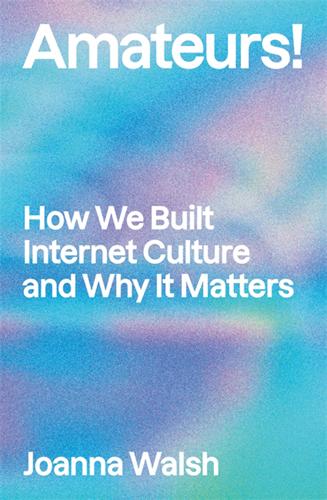
Amateurs!: How We Built Internet Culture and Why It Matters
by
Joanna Walsh
Published 22 Sep 2025
Shawn Presser, the programmer-turned-hacker (i.e. amateur) who created Books3 said his intention was to create a training dataset that provided a resource for open-source AI development outside the machine-learning giants. Presser’s project was the sort of reverse engineering Cory Doctorow suggests in his 2023 book The Internet Con as a solution to the dominance of big data. Presser, posting as sillysaurusx on the forum Hacker News, wrote: ‘Dozens of people have told me I belong in prison for making books3. And as far as I can tell, it’s had zero economic impact on authors.’14 This is because the conditions that drove author income down by 42 per cent between 2009 and 2019 existed before the widespread use of AI. That figure comes from a 2019 survey by the US Authors’ Guild, which blames the rise of Amazon that, as the dominant player in the books market is able to demand heavy discounting from publishers, as well as the tendency of many panicked publishers to pass these losses on to creators in the form of smaller advances, twinned with their attempts to recoup 116costs by paying out huge advances to celebrities, leaving working authors with the leftovers.
…
@pharmapsychotic, ‘CLIP Interrogator’, github.com, huggingface.co/spaces/fffiloni/CLIP-Interrogator-2. 9.Jameson, Postmodernism, p. 30. 10.Benjamin, ‘The Work of Art in the Age of Mechanical Reproduction’, p. 226. 11.Hélène Cixous, Coming to Writing (Harvard University Press, 1991), p. 104. 239 12.Will Douglas Heaven, ‘This Avocado Armchair Could Be the Future of AI’, MIT Technology Review, 5 January 2021. 13.sillysaurusx at Hacker News, 28 September 2023. 14.Melissa Heikkilä, ‘This New Data Poisoning Tool Lets Artists Fight Back Against Generative AI’, technologyreview.com, 23 October 2023. 15.Elaine Velie, ‘New Tool Helps Artists Protect Their Work from AI Scraping’, Hyperallergic, 30 October 2023. 16.Marco Donnarumma, ‘AI Art Is Soft Propaganda for the Global North’, Hyperallergic, 24 October 2022. 17.Andy Baio, ‘Exploring 12 Million of the 2.3 Billion Images Used To Train Stable Diffusion’s Image Generator’, waxy.org, 30 August 2022. 18.Hito Steyerl, ‘Mean Images’, New Left Review, nos. 140/141, March–June 2023. 19.Ibid. 20.Ben Zimmer, ‘Tasty Cupertinos’, languagelog.ldc, 11 April 2012. 21.Kyle Wiggers, ‘3 Big Problems with Datasets in AI and Machine Learning’, venturebeat.com, 17 December 2021. 22.Cecilia D’Anastasio, ‘Meet Neuro-sama, the AI Twitch Streamer Who Plays Minecraft, Sings Karaoke, Loves Art’, Bloomberg, 16 June 2023. 23.Ibid. 24.
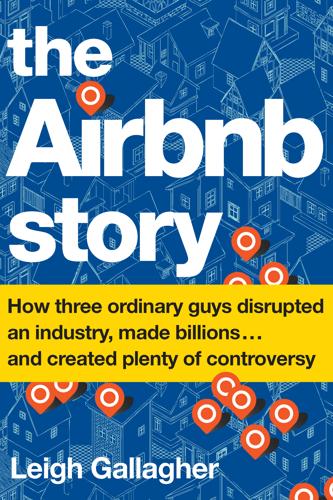
The Airbnb Story: How Three Ordinary Guys Disrupted an Industry, Made Billions...and Created Plenty of Controversy
by
Leigh Gallagher
Published 14 Feb 2017
Living in Los Angeles during graduate school, Zadeh had taken an interest in architecture and in Wright, and now this odd website he’d logged on to from this strange company he’d been hearing so much about was offering the chance to stay in one of Wright’s homes. The next day, when he happened upon a posting on Hacker News by Blecharczyk saying Airbnb was looking for engineers, he e-mailed him. “There was basically a neon sign that said, ‘You have to join this company,’” Zadeh says. By the summer of 2010, there were twenty-five people, give or take, working out of the Rausch Street apartment. The bedrooms had become meeting rooms, and the founders had taken to doing interviews in stairwells, in the bathroom, and on the roof.
…
They have called often, expressing empathy, support, and genuine concern for my welfare. They have offered to help me recover emotionally and financially, and are working with SFPD to track down these criminals.” Few people knew about the story for almost a month. But then EJ’s post was picked up by Hacker News, and it went viral. Internally, Airbnb was reeling. It had never been through a crisis like this before, and it wasn’t prepared for it. Chesky, Gebbia, and Blecharczyk, the executive team, and the company’s entire customer-service department, including a dozen or so who had flown in from remote posts, were there almost 24/7 in the coming weeks—they pulled in air mattresses, but no one laughed at the irony—and the founders had their entire team of advisers weighing in, too.
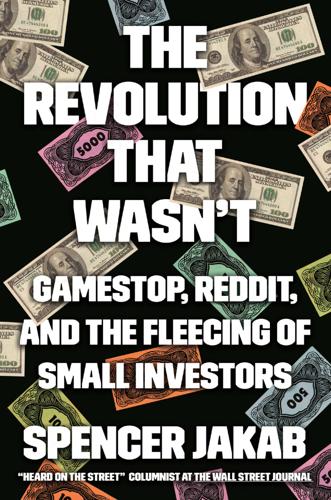
The Revolution That Wasn't: GameStop, Reddit, and the Fleecing of Small Investors
by
Spencer Jakab
Published 1 Feb 2022
Before it had actually finished writing the software, the fledgling company put up a web page inviting people to sign up by leaving their email addresses. Even the list itself became something of a game with people able to see where they were in line to get access to the snazzy new app.[5] Going viral on social media helped make Robinhood a literal overnight success. The influential computer science forum Hacker News, not Reddit, was where a story about Robinhood’s plan to offer smartphone-based, commission-free trading received enough “upvotes” to become number one on the page. The company had fifty thousand potential customers sign up that week. By the time Tenev and Bhatt had an actual app in March 2015, Robinhood already had almost a million customers waiting for it.
…
S., 46–47 commissions, 48–50, 234, 251 zero-dollar, 47, 48–51, 54, 59, 70, 101, 102, 139, 166, 218, 241, 247, 259 Commonstock, 47 Condé Nast, 38 Congress, 206, 230–31 see also House Committee on Financial Services hearing Consumer Federation of America, 29, 241 Consumer Financial Protection Bureau, 42 control, illusion of, 27 Cooperman, Leon, 191 COVID-19 pandemic, ix–xii, xv, 1, 23, 31, 42, 45, 47, 52, 55–57, 62, 68–72, 83, 88, 89, 92, 93, 105, 156, 179, 214, 219, 224, 255, 256 stimulus checks during, 56, 62, 71, 72, 255 Cox, Christopher, 83 Cramer, Jim, 128, 254 Crash of 1929, 42, 150, 233 Crawford, Cindy, 111 Credit Suisse, 60, 128 Crockett, Molly, 39 Cruz, Ted, 197 Cuban, Mark, 191–92 cryptocurrencies, 58, 154, 179 Dogecoin, 19, 152, 154 CXO Advisory Group, 254 D Daily Journal Corporation, 183 Dalio, Ray, 160–61 Damodaran, Aswath, 18, 82, 177–78 Dark Knight, The, 138 DARTs (daily average revenue trades), 59 DeepFuckingValue, see Gill, Keith deep-value investors, 17, 52 demands for goods, 51 democratization of finance, 4, 5, 10, 173, 178, 182, 198, 207, 240, 242–43, 251, 262 dentists, 237, 251 Depression, Great, 48 derivatives, xi, xii, 5, 36, 101 see also options Dian Fossey Gorilla Fund, 135 Dimon, Jamie, 160 Discord, 190 Discover Brokerage, 28 Dogecoin, 19, 152, 154 Doji, 47 dot-com era, 4, 21, 24, 25, 28, 42, 63, 65, 70, 90, 106, 118, 155, 179, 186 Dow Jones Industrial Average, 52, 53, 61, 70, 151, 234, 243 DraftKings, 26, 30 Drew, Daniel, 74 Dunning, David, 28 Dusaniwsky, Ihor, 76, 81, 130, 132, 170 E economic theory, 51 behavioral, 51, 62, 255 Edelman, 143 Egan, Dan, 54, 60, 65, 183 Einhorn, David, 152–53, 158, 166, 253 El-Erian, Mohamed, 199, 205 Elm Partners, 260 Enron, 42, 84–85, 117, 119, 125, 129, 186, 242, 261 Epsilon Theory, 165 eToro, 47, 200 E*Trade, 24, 28, 55, 189, 219 Gill’s account with, 15, 19, 87, 88, 90, 100, 112, 130–31, 136, 141, 147, 171, 212, 230, 232 Eurekahedge, 119 exchange-traded funds, 159, 234 Express, 188 F Facebook, 37–38, 98, 162, 166, 202 Factiva, 127 FactSet, 177 FanDuel, 26 Fannie Mae, 216 Fast Company, 26 FBI, 122 Federal Reserve, 10, 58, 67, 69, 71, 98 Survey of Consumer Finances, 252 Federal Reserve Bank of New York, 83 Fidelity Investments, 8, 25, 27, 221–22, 245 fiduciaries, 13–14, 258 financial advisers, 27, 253–55, 258 see also robo-advisers financial crisis, xi, 6, 8, 10, 21, 28, 58, 63, 69, 70, 78, 83, 143, 199, 204, 215 Financial Industry Regulatory Authority (FINRA), 34–35, 101, 103, 120, 131, 193, 202, 239 Financial Times, 78, 81, 85 FOMO (fear of missing out), 63, 151, 172, 177, 178 Forbes, 9, 234 Ford Motor Company, 82 Forrest Gump, 212 Fortune, 85 4chan, 39, 125 Fox News, 156, 189 Freddie Mac, 216 French, Sally, 45 Fuld, Dick, 80 Futu, 236 G Gallagher, Dan, 240 Galvin, William, 29 gambling, 30–31, 55, 57 lotteries, 62, 239, 241, 242 sports, 26, 30–31, 57 Gamergate, 125 GameStop (GME), GameStop short squeeze, x–xiv, 2, 10, 12, 16, 21, 22, 26, 30, 31, 36, 54, 56, 60, 61, 67, 72, 76, 80, 83, 85, 86, 88, 93–95, 97, 102, 107, 108, 111–15, 122, 125, 127–34, 128–32, 137, 138, 141–49, 152–55, 157, 158, 160, 161, 164, 169–70, 174–78, 180, 185, 188, 189–92, 200, 204, 211–14, 215–17, 221–22, 227–31, 234, 235, 237–40, 242, 249, 252, 262 board members and, 222–23 CEOs and, 224 congressional hearing on, see House Committee on Financial Services hearing Gill and, 14, 15–19, 43–45, 68–69, 90–92, 94, 95, 100–101, 112–14, 130–33, 143–44, 147–48, 154–55, 260 Gill’s Forrest Gump Twitter post on, 212 margin debt and, 58 poll on, 13 Reddit and, 37; see also WallStreetBets thousand-dollar price predicted for, 172–73, 176, 177 Volkswagen squeeze compared to, 77, 78 gamification, 29–31 gamma squeeze, 108, 109, 132, 141, 216, 227–28 General Motors, 151 Generation Z, 21, 26, 56, 88, 143, 162, 236, 246, 255 Gensler, Gary, 207 Gill, Elaine, 171 Gill, Keith (DeepFuckingValue), 1–3, 14, 15–20, 47, 48–49, 52, 73, 87–88, 116, 126, 129, 136, 141–42, 171, 175, 183, 191, 211–14, 218, 219, 222, 227, 230–32, 250 at congressional hearing, 1–3, 14 E*Trade account of, 15, 19, 87, 88, 90, 100, 112, 130–31, 136, 141, 147, 171, 212, 230, 232 Forrest Gump Twitter post of, 212 GameStop and, 14, 15–19, 43–45, 68–69, 90–92, 94, 95, 100–101, 112–14, 130–33, 143–44, 147–48, 154–55, 260 net worth of, 19, 94, 114, 131, 133, 148, 155, 171, 191, 212 YouTube videos of, as Roaring Kitty, 2, 18, 45, 48–49, 92, 130, 133, 144, 171, 174–75, 191, 211, 213 global financial crisis, xi, 6, 8, 10, 21, 28, 58, 63, 69, 70, 78, 83, 143, 199, 204, 215 GME, see GameStop, GameStop short squeeze Goepfert, Jason, 227 Golden State Warriors, 158 Goldman Sachs, 9, 55, 63, 76, 132, 170–71, 178, 219–20, 254 Google, 46, 162, 243 Google Glass, 24 Google Play, 195 gorillas, 135, 225 Graham, Benjamin, 174, 177 Grand Theft Auto V, 97 Great Crash of 1929, 42, 150, 233 Great Depression, 48 Greenfield, Rich, 39, 180 Griffin, Ken, 8, 14, 41, 65, 67, 146, 189, 206–8, 218, 234, 240 at congressional hearing, 9–11, 14, 65 Gross, Bill, 216, 217, 220, 228 Grube, Jim, 114 Grujic, Al, 208–9 H Hacker News, 25 Haghani, Victor, 260–61 Harvard Law School, 220 Harvard University, 80 Hawley, Josh, 198 Hearst, William Randolph, 9 hedge funds, xi, xv, 4, 6–8, 12, 13, 22–24, 56, 67, 68, 73, 75–77, 96, 109, 110–11, 115, 119, 121, 126, 129, 130, 133, 135, 138–39, 141, 143, 146, 157, 170–71, 173, 176, 179–80, 189, 197, 199, 202, 213, 217, 220, 228, 229, 234, 239, 245, 249, 260 and locating a borrow, 72–73 Robinhood’s trading restriction and, 197–99, 206 Volkswagen and, 77–78 WallStreetBets as, 139 hedonic products, 51 Hemingway, Ernest, xiii Hempton, John, 181 herding events, 238 Hertz, 60–61, 255 Hestia Partners, 222–23 Hickey, Mike, 44, 128 high-frequency traders, 236, 238, 243, 247, 258 Robinhood and, 193, 202, 207, 236 Hirst, Damien, 7 HODL-ing, 140, 255–56 homeownership, 71 House Committee on Financial Services hearing, 1–14, 76, 80, 183, 206, 238–40 Gill and, 1–3, 14 Griffin and, 9–11, 14, 65 Huffman and, 11–13, 40, 165–66 Plotkin and, 6–11 Tenev and, 3–6, 11, 14, 32, 40, 65, 206 Washington establishment and, 13–14 Waters’s chairing of, 3, 13 Hsieh, Tony, 89–90 Huffman, Steve, 37–38, 40 at congressional hearing, 11–13, 40, 165–66 Hunt, Ben, 165 I illusion of control, 27 index funds, xv, 4, 6, 125, 191, 235, 242, 244, 245, 251, 254, 256, 257, 259, 260 influencers, 150–68, 170, 210, 246, 249 In Good Company, 87, 171 initial public offerings (IPOs), 63–65, 155 insider trading, 42 Instagram, 162, 166 Intel, 46 Interactive Brokers, 188 interest, 63 compound, 242 short, 76, 92, 93, 106, 108, 113, 121, 132, 133, 140, 164, 169 zero, 58, 72 internet, 22, 163, 258 see also social media Invisibly Realtime Research, 13 iShares, 259 J Jacob, Mary K., 172 Japan, 81 Ja Rule, 197 Jay-Z, 64 JMP Securities, 70, 199 JOBS (Jumpstart Our Business Startups) Act, 13, 246 Jordan, Michael, 8, 111 J.P.
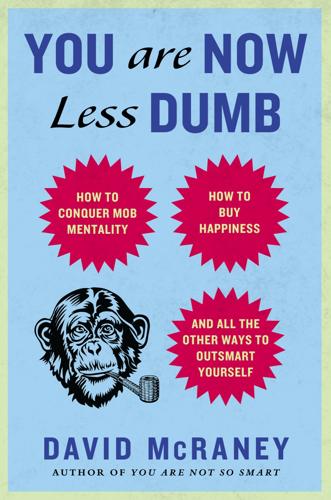
You Are Now Less Dumb: How to Conquer Mob Mentality, How to Buy Happiness, and All the Other Ways to Outsmart Yourself
by
David McRaney
Published 29 Jul 2013
Web: Mar. 2011, socialtimes.com/fired-playing-farmville_b4754. Walker, Tim. “Welcome to FarmVille: Population 80 Million.” Independent, Feb. 22, 2010. Web: Mar. 2011, www.independent.co.uk/life-style/gadgets-and-tech/features/welcome-to-farmville-population-80-million-1906260.html. “Why Zynga’s Success Makes Game Designers Gloomy: Discussion at Hacker News.”Hacker News. Y Combinator, Oct. 7, 2010. Web: Mar. 2011, news.ycombinator.net/item?id=1767549. Wittmershaus, Eric. “Facebook Game’s Cautionary Tale.” GameWit, Aug. 4, 2010. Web: Mar. 2011, gamewit.blogs .pressdemocrat.com/12167/facebook-games-cautionary-tale/. Yang, Sizhao Zao. “How Did FarmVille Takeover FarmTown, When It Was Just an Exact Duplicate of FarmTown and FarmTown Was Released Much Earlier?”
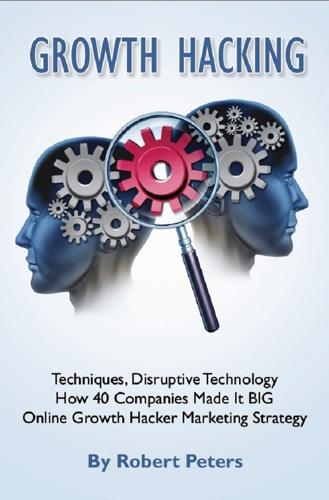
Growth Hacking Techniques, Disruptive Technology - How 40 Companies Made It BIG – Online Growth Hacker Marketing Strategy
by
Robert Peters
Published 18 May 2014
The site’s programmers engineered the interface so that within 5 minutes of a new user signing on, they were looking at a full graphical picture of the current state of their finances, with advice on how to build their money — all for free. The site was, and is, clean and simple with an easy, short domain name. The early marketing emphasis was on winning the approval of tech savvy reviewers from Tech Crunch and Hacker News who would tout the site’s security and utility, which helped Mint to “go viral.” In conjunction with the main site, Mint dispenses valuable information on personal finance through a companion blog. Instead of dry, boring text, the data is presented in eye-catching and easily understood info graphics that are actually instructional and helped, in the beginning, to spread the word about Mint as both a product and a learning tool.

You've Been Played: How Corporations, Governments, and Schools Use Games to Control Us All
by
Adrian Hon
Published 14 Sep 2022
“The Scalar Fallacy,” West Coast Stat Views (on Observational Epidemiology and More), January 5, 2011, http://observationalepidemiology.blogspot.com/2011/01/scalar-fallacy.html; Randall Lucas, August 4, 2014, “It’s the ‘Scalar Fallacy,’” comment on “Hotel Fines $500 for Every Bad Review Posted Online,” Hacker News, https://news.ycombinator.com/item?id=8132525. 73. Rachel Monroe, “How Natural Wine Became a Symbol of Virtuous Consumption,” New Yorker, November 18, 2019, www.newyorker.com/magazine/2019/11/25/how-natural-wine-became-a-symbol-of-virtuous-consumption. 74. Gretchen Reynolds, “Do We Really Need to Take 10,000 Steps a Day for Our Health?”
…
“Zendesk Support Suite Reviews 2021,” G2, accessed November 28, 2021, www.g2.com/products/zendesk-support-suite/reviews; Christoph Auer-Welsbach, “How Gamification Is Leveling Up Customer Service,” Zendesk Blog, Zendesk, updated September 21, 2021, www.zendesk.com/blog/gamification-leveling-up-customer-service. 92. “Helpdesk Gamification,” Freshdesk, Freshworks, accessed November 28, 2021, https://freshdesk.com/scaling-support/gamification-support-help-desk. 93. @asangha, “The Dystopian World of Software Engineering Interviews,” Hacker News, February 15, 2020, https://news.ycombinator.com/item?id=22331804; Jared Nelsen, “The Horrifically Dystopian World of Software Engineering Interviews,” Blog by Jared Nelsen, February 15, 2020, https://web.archive.org/web/20211123161943/https://www.jarednelsen.dev/posts/The-horrifically-dystopian-world-of-software-engineering-interviews. 94.

Empire of AI: Dreams and Nightmares in Sam Altman's OpenAI
by
Karen Hao
Published 19 May 2025
In the broader tech world, OpenAI’s transition set off a wave of accusations that the lab was walking back its original promise. The initial terms of the limited partnership stated that the first round of investors would have their returns capped at 100x of what they put in. OpenAI termed the invented structure a “capped-profit” company. In a post on Hacker News, a popular news aggregation website run by YC, a user asked how this cap was at all meaningful. “So someone who invests $10 million has their investment ‘capped’ at $1 billion. Lol. Basically unlimited unless the company grew to a FAANG-scale market value,” they wrote, using the acronym for Facebook, Apple, Amazon, Netflix, and Google.
…
GO TO NOTE REFERENCE IN TEXT “So someone who invests”: @windowshopping, “I was buying it until he said that profit is ‘capped’ at 100x of initial investment. So someone who invests $10 million has their investment ‘capped’ at $1 billion. Lol. Basically unlimited unless the company grew to a FAANG-scale market value,” Hacker News, March 11, 2019, news.ycombinator.com/item?id=19360709. GO TO NOTE REFERENCE IN TEXT Initial investments poured in: All numerical values for investments into the LP and their profit cap throughout the book are from an OpenAI internal financial document. GO TO NOTE REFERENCE IN TEXT Hoffman was initially reluctant: Chamath Palihapitiya, Jason Calacanis, David Sacks, and David Friedberg, hosts, All-In, podcast, episode 194, “In Conversation with Reid Hoffman & Robert F.
…
See also Nvidia shortage of, 261 Graham, Paul, 28, 32, 36–39, 40, 69 Gray, Mary L., 193–94 Groom, Lachy, 41 grounding hypothesis, 129–30, 318 Groves, Leslie R., 317–18 Guo, Eileen, 186 H Hacker News, 70 hallucinations, 113–14, 217, 268, 358 Hanna, Alex, 414 “hardware overhang,” 177, 232, 377 Harris, Kamala, 302 Hassabis, Demis, 24–26, 48, 309–10 “hate scaling laws,” 137–38 hate speech, 18, 192, 208 health care and medicine, 12, 19, 76, 77–78, 114, 229, 257, 304, 333 Helion Energy, 186–87, 280 Hendrycks, Dan, 322–23 Hepburn, Audrey, 96 Her (movie), 246, 378, 382, 390–92, 393 Herbert-Voss, Ari, 179, 180–81 Hernández, Andrea Paola, 203–5 Hernandez, Danny, 60 Herzberg, Elaine, 107, 113 Hinton, Geoffrey, 105, 110 DNNresearch, 47, 50, 98–99, 100 ImageNet, 47, 59–60, 100–101, 101, 117–18, 259 neural networks and deep learning, 97–99, 100–101, 109, 183 Sutskever and, 47, 100–101, 109, 117–18, 121, 254 Hoffman, Reid, 50, 63, 320, 324, 367, 384–85 Hogan, Mél, 274–75 Ho, Jonathan, 235–36 Hollywood, 302–3 Hood, Amy, 72 Hooker, Sara, 306–7, 310, 311 Huffman, Steve, 34 Huggines, Ricardo, 204–5 Hugging Face, 276–77, 420 human brain, 60, 73, 90, 91, 109 human consciousness, 111, 119–20 human control, AI evasion of, 152, 310, 314, 380 human extinction, 24, 26–27, 55, 232, 378 human intelligence.

The Upstarts: How Uber, Airbnb, and the Killer Companies of the New Silicon Valley Are Changing the World
by
Brad Stone
Published 30 Jan 2017
She faintly praised the company for eventually responding to her entreaties, writing that the customer-service team had been “wonderful, giving this crime their full attention.” But she would soon change her tune. EJ’s blog post remained largely unnoticed for a month. Then, in late July, after the financing from Andreessen Horowitz had been made public, the incident became a hot topic of discussion on Hacker News, a popular online bulletin-board site run by Airbnb’s first benefactor, Y Combinator. The site’s users offered their own thoughts about the incident and began a lengthy debate over the honesty of the common man.14 Then, Michael Arrington, the imperious founder and chief blogger of TechCrunch, noticed the thread and wrote an article about the incident titled “The Moment of Truth for Airbnb As User’s Home Is Utterly Trashed.”15 Arrington spoke with Chesky for the article, and Chesky told him that the company knew about the incident and had offered to financially assist EJ, help her find new housing, and do “anything else she can think of to make her life easier.”
…
EJ, “Violated: A Traveler’s Lost Faith, a Difficult Lesson Learned,” Around the World and Back Again, June 29, 2011, http://ejroundtheworld.blogspot.com/2011/06/violated-travelers-lost-faith-difficult.html. 13. Ibid. 14. Foxit, “Violated: A Traveler’s Lost Faith, a Difficult Lesson Learned,” Hacker News, https://news.ycombinator.com/item?id=2811080. 15. Michael Arrington, “The Moment of Truth for Airbnb As User’s Home Is Utterly Trashed,” TechCrunch, July 27, 2011, http://techcrunch.com/2011/07/27/the-moment-of-truth-for-airbnb-as-users-home-is-utterly-trashed/. 16. EJ, “Airbnb Nightmare: No End in Sight,” Around the World and Back Again, July 28, 2011, http://ejroundtheworld.blogspot.com/2011/07/airbnb-nightmare-no-end-in-sight.html. 17.
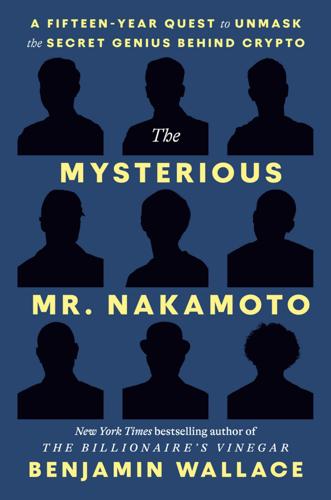
The Mysterious Mr. Nakamoto: A Fifteen-Year Quest to Unmask the Secret Genius Behind Crypto
by
Benjamin Wallace
Published 18 Mar 2025
GO TO NOTE REFERENCE IN TEXT slightly dated: Andresen, deposition, February 26, 2020, KW. GO TO NOTE REFERENCE IN TEXT Nakamoto used Hungarian notation: Mike Hearn, August 31, 2017, comment on sillysaurus3, “I’ve spent a lot of time reviewing the original Bitcoin codebase,” Hacker News, August 30, 2017. GO TO NOTE REFERENCE IN TEXT top 10 percent of programmers: Andresen, deposition, February 26, 2020, KW. GO TO NOTE REFERENCE IN TEXT lived in a squat in London: Joshi Herrmann, “Silicon Roundabout’s Not for Him: Meet Super-hacker, Master Coder and Bitcoin Boy Amir Taaki in His Hackney Squat,” The Standard (UK), January 29, 2014.
…
GO TO NOTE REFERENCE IN TEXT “Lois Lane”: Hal Finney, “Another *Potential* Identifying Piece of Evidence on Satoshi,” BF, June 15, 2013. GO TO NOTE REFERENCE IN TEXT “the kind of elaborate prank Hal would have loved”: WalterBright, comment on “Len Sassaman and Satoshi,” Hacker News, February 23, 2021. GO TO NOTE REFERENCE IN TEXT promissory notes and negotiable instruments: Hal Finney, “Promise her anything…,” CP, March 22, 1994. GO TO NOTE REFERENCE IN TEXT “we will miss you Hal Finney”: @NickSzabo4, Twitter, August 29, 2014. GO TO NOTE REFERENCE IN TEXT Vincent Adultman Gwern Branwen had speculated about Elaine Ou: Gwern Branwen, comment on “Bitcoin may have a fixed supply only because Wei Dai didn’t get back to Satoshi with comments on the white paper in time,” Reddit, r/Buttcoin, February 12, 2021.

Future Crimes: Everything Is Connected, Everyone Is Vulnerable and What We Can Do About It
by
Marc Goodman
Published 24 Feb 2015
For the criminal angle, see David Shamah, “Hack Attacks on Infrastructure on the Rise, Experts Say,” Times of Israel, Jan. 30, 2014. 18 President Obama when he noted: Barack Obama, “Remarks by the President on Securing Our Nation’s Cyber Infrastructure,” The White House Office of the Press Secretary, May 29, 2009. 19 Each plays its role: “War in the Fifth Domain,” Economist, July 5, 2010. 20 Let’s not forget two hackers: Phil Lapsley, “The Definitive Story of Steve Wozniak, Steve Jobs, and Phone Phreaking,” Atlantic, Feb. 20, 2013. 21 As time passed, other notable hackers: Kevin D. Mitnick and William L Simon, Ghost in the Wires: My Adventures as the World’s Most Wanted Hacker (New York: Little, Brown, 2012). 22 Poulsen’s ingenious 1990 hack: Jonathan Littman, “The Last Hacker,” Los Angeles Times, Sept. 12, 1993. 23 For example, in October 2013: “Adobe Hack: At Least 38 Million Accounts Breached,” BBC, Oct. 30, 2013. 24 But what changed in that attack: Brian Krebs, “Adobe to Announce Source Code, Customer Data Breach,” Krebs on Security, Oct. 3, 2013. 25 Yep, the company that is selling: Darlene Storm, “AntiSec Leaks Symantec pcAnywhere Source Code After $50K Extortion Not Paid,” Computerworld, Feb. 7, 2012. 26 Traditional organized crime groups: The Hague, Threat Assessment: Italian Organized Crime, Europol Public Information, June 2013; Nir Kshetri, The Global Cybercrime Industry: Economic, Institutional, and Strategic Perspectives (London: Springer, 2010), 1; Chuck Easttom, Computer Crime, Investigation, and the Law (Boston: Cengage Learning, 2010), 206. 27 These newly emerging: Mark Milian, “Top Ten Hacking Countries,” Bloomberg, April 23, 2013. 28 New syndicates: Brian Krebs, “Shadowy Russian Firm Seen as Conduit for Cybercrime,” Washington Post, Oct. 13, 2007; Verisign iDefense, The Russian Business Network: Survey of a Criminal ISP, June 27, 2007. 29 RBN famously provides: Trend Micro, The Business of Cybercrime: A Complex Business Model, Jan. 2010. 30 ShadowCrew operated the now-defunct Web site: Kevin Poulsen, “One Hacker’s Audacious Plan to Rule the Black Market in Stolen Credit Cards,” Wired, Dec. 22, 2008. 31 Founded by the notorious criminal hacker: James Verini, “The Great Cyberheist,” New York Times Magazine, Nov. 10, 2010. 32 The number and reach: John E.
…
v=mdoD7X8n46Q. 54 Hundreds of victims: Richard Burnett, “Scammers Use Social Networking Info to Target Vacationers’ Relatives: Scams Using Social-Networking Vacation,” Orlando Sentinel, June 22, 2013. 55 In September 2011: Robert Beckhusen, “Mexican Cartels Hang, Disembowel ‘Internet Snitches,’ ” Danger Room (blog), Wired, Sept. 15, 2011. 56 These cartels are equally savvy: Ibid. 57 For example, when two Maricopa County: Mike Levine, “Officials Warn Facebook and Twitter Increase Police Vulnerability,” FoxNews.com, May 10, 2011. 58 “the on-going investigations”: Josh Halliday and Charles Arthur, “Anonymous’s Release of Met and FBI Call Puts Hacker Group Back Centre Stage,” The Guardian, Feb. 2, 2012. 59 The call was even recorded: Bob Christie, “Ariz. Police Confirm 2nd Hack on Officers’ Email,” MSNBC.com, June 29, 2011; Mohit Kumar, “77 Law Enforcement Websites Hit in Mass Attack by #Antisec Anonymous,” The Hacker News, July 30, 2011. 60 For instance, in late 2010: “CyberCriminals Use Facebook to Steal Identity of Interpol Chief,” Daily Mail, Sept. 20, 2010. 61 Industrial espionage too has found: Geoff Nairn, “Your Wall Has Ears,” Wall Street Journal, Oct. 19, 2011. 62 we learned about the Massachusetts windturbine: Michael Riley and Ashlee Vance, “Inside the Chinese Boom in Corporate Espionage,” BusinessWeek, Mar. 15, 2012. 63 Armed with all of this information: Joan Lappin, “American Superconductor and Its Rogue Employee Both Duped by Sinovel,” Forbes, Sept. 27, 2011. 64 In one note Karabasevic: Carl Sears and Michael Isikoff, “Chinese Firm Paid Insider ‘to Kill My Company,’ American CEO Says,” NBCNews.com, Aug. 6, 2013.
…
You, Too, Can Hack Google Wallet,” Bloomberg Businessweek, Feb. 13, 2012. 32 In another instance: Gabrielle Taylor, “Have an NFC-Enable Phone? This Hack Could Hijack It,” WonderHowTo, accessed July 11, 2014. 33 NFC apps on mobile phones: Lisa Vaas, “Android NFC Hack Lets Subway Riders Evade Fares,” Naked Security, Sept. 24, 2012. 34 They can also intercept data: Kate Murphy, “Protecting a Cellphone Against Hackers,” New York Times, Jan. 25, 2012; Tu C. Neim, “Bluetooth and Its Inherent Security Issues,” SANS Institute InfoSec Reading Room, Nov. 4, 2002. 35 As a result, more of what happens: Catherine Crump and Matthew Harwood, “Invasion of the Data Snatchers: Big Data and the Internet of Things Means the Surveillance of Everything,” Blog of Rights, March 25, 2014. 36 All drivers need to do: “Snapshot Common Questions,” Progressive Web site, http://www.progressive.com/auto/snapshot-common-questions/. 37 “we and other companies”: Rolfe Winkler, “Google Predicts Ads in Odd Spots Like Thermostats,” Digits (blog), Wall Street Journal, May 21, 2014. 38 In some countries: Brian Brady, “Prisoners ‘to Be Chipped like Dogs,’ ” Independent, Jan. 13, 2008. 39 “3,000 labor hours”: David Rosen, “Big Brother Invades Our Classrooms,” Salon, Oct. 8, 2012. 40 “Students who do not wish”: David Kravets, “Student Suspended for Refusing to Wear a School-Issued RFID Tracker,” Wired, Nov. 21, 2012. 41 Based on nothing more: Aaron Katersky and Josh Haskell, “NY Mom Accused of Growing $3M Marijuana Business,” Good Morning America, June 6, 2013; Glenn Smith, “Marijuana Bust Shines Light on Utilities,” Post and Courier, Jan. 29, 2012. 42 “transformational for clandestine”: Spencer Ackerman, “CIA Chief: We’ll Spy on You Through Your Dishwasher,” Wired, March 15, 2012. 43 The mere plugging in: Neil J.
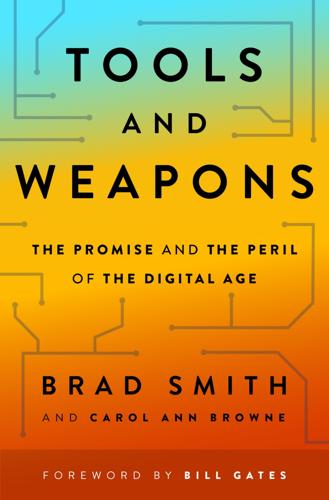
Tools and Weapons: The Promise and the Peril of the Digital Age
by
Brad Smith
and
Carol Ann Browne
Published 9 Sep 2019
Alex Hern, “Macron Hackers Linked to Russian-Affiliated Group Behind US Attack,” Guardian, May 8, 2017, https://www.theguardian.com/world/2017/may/08/macron-hackers-linked-to-russian-affiliated-group-behind-us-attack. Back to note reference 5. Kevin Poulsen and Andrew Desiderio, “Russian Hackers’ New Target: A Vulnerable Democratic Senator,” Daily Beast, July 26, 2018, https://www.thedailybeast.com/russian-hackers-new-target-a-vulnerable-democratic-senator?ref=scroll. Back to note reference 6. Griffin Connolly, “Claire McCaskill Hackers Left Behind Clumsy Evidence That They Were Russian,” Roll Call, August 23, 2018, https://www.rollcall.com/news/politics/mccaskill-hackers-evidence-russian.

Your Face Belongs to Us: A Secretive Startup's Quest to End Privacy as We Know It
by
Kashmir Hill
Published 19 Sep 2023
Ton-That was into “computer snob languages,” such as Lisp and Haskell, but those were about as likely to get him a job as studying Latin or ancient Greek. Instead of doing schoolwork, he created a dating app for fellow students called Touchfelt and spent a lot of time on a new online message forum, eventually called Hacker News, which catered to a subculture of people obsessed with technology and startups. When a California investor named Naval Ravikant put up a post there saying he was investing in social media startups, Ton-That reached out to him. He told Ravikant about his entrepreneurial ambitions and the lack of appetite for such endeavors in Australia.
…
See also NIST (National Institute of Standards and Technology) Faraday bags, 227 FarmVille, 4–5, 6 “fatface,” 32 Fawkes, 242 FBI (Federal Bureau of Investigation) Capitol insurrection and, 229 Congress and, 142, 143–144, 158 Government Accountability Office and, 247 NIST and, 70, 71 NYPD and, 132 Federal Police of Brazil, 136 Federal Trade Commission (FTC), 121–123, 126–127, 143, 240 FERET, 67–68, 103 Ferg-Cadima, James, 82–87, 151, 158 Ferrara, Nicholas, xii–xiii Fight for the Future, 238 Financial Crimes Task Force, 128–131 FindFace, 34–35, 220–222 Findley, Josh, 134–136 fingerprints/fingerprinting early efforts regarding, 22 Pay by Touch and, 82, 84–87 theft of, 84 First 48, The, 230 First Amendment Abrams case and, 206–207, 208–209, 212–213 Gawker and, 15 violence and, 306n206 FitMob, 8 Flanagan, Chris, 129, 131 Flickr, 199, 242, 246–247 Flipshot, 9 Floyd, George, 207, 239 FOIA (Freedom of Information Act), 141, 157 4Chan, 94 Fourth Amendment, 141 Franken, Al, 140–144, 148–151 Freedom of Information Act (FOIA), 141, 157 FreeOnes, 197 Frydman, Ken, 28 FTC (Federal Trade Commission), 121–123, 126–127, 143, 240 Fuller, Matt, 274n52 Fussey, Pete, 218–219, 235 G Gaetz, Matt, 285n95 Galaxy Nexus, 109 Galton, Francis, 17–20, 22, 25, 33 GAO (General Accounting Office), 62, 65–66 Garrison, Jessica Medeiros, 138–139, 160 Garvie, Clare, 156–157, 178 Gaslight lounge, 50–51 Gawker Media Johnson and, 11, 12 Pay by Touch and, 85 Thiel and, 14–15 Ton-That and, xi, 7, 93, 116, 164 gaydar, 31 GDPR (General Data Protection Regulation), 191 gender Congressional representation and, 89 differences in facial recognition and, 48, 69–70, 124, 125, 156, 178, 240 IQ and, 32 General Accounting Office (GAO), 62, 65–66 General Data Protection Regulation (GDPR), 191 Genetic Information Nondiscrimination Act (GINA), 83 Gibson, William, 113 Giesea, Jeff, 53 Gilbert, John J., III, 129 GINA (Genetic Information Nondiscrimination Act), 83 Girard, René, 12 GitHub, 72, 74 Giuliani, Rudy Schwartz and, 27–28, 29, 89, 90, 129, 161 Waxman and, 80 Global Positioning System (GPS), 43 Gmail, 102 Gone Wild, 200 Good, John, x, 160 Google AI Principles of, 108 BIPA and, 151 Clearview AI and, 96, 165 CSAM and, 135 diverse datasets and, 179 “Face Facts” workshop and, 121–122 Face Unlock and, 109, 179 Franken and, 141, 142 FTC and, 123 Goggles and, 99–100, 102 hesitation of regarding facial recognition technology, 99–110 identification technology and, 145 Images, 79 lawsuits against, 306n206 Lunar XPRIZE and, 192 Maps and, 100–101, 102 mining of Gmail by, 102 monetization and, 6–7 neural networks technology and, 74 phone locks and, ix Photos app, 272n48 PittPatt and, 108–109, 110 Schmidt and, 27 State Privacy and Security Coalition and, 150 Street View and, 100–101, 102 TensorFlow and, 208 ViddyHo and, 7 GotNews, 11–12 Government Accountability Office, 247 GPS (Global Positioning System), 43 Greenwald, Glenn, 149 Greer, Evan, 237–238 Grewal, Gurbir, 165 Gristedes, 114 Grossenbacher, Timo, 194–196 Grother, Patrick, 69–70 Grunin, Nikolay, 309n222 Guardian, The, 149 gunshot detection systems, 232–233, 234 Gutierrez, Alejandro (“Gooty”), 231–232, 234 H Hacker News, 4 Hamburg Data Protection Authority (DPA), 192 Haralick, Robert, 271n47 Harrelson, Woody, 156–157 Harris, Andy, 274n52 Harvard Law Review, on privacy, viii Harvey, Adam, 241 Haskell, 4 Health and Human Services Department, 247 Hereditary Genius (Galton), 20 Hikvision, 177, 215–216, 226 Hinton, Geoffrey, 73, 74, 295n146 History of Animals (Aristotle), 17 Hogan, Hulk, 15 Hola, 275n58 Hollerith, Herman, 24–25 Homeland Security, Department of, 134–136, 235 Hooton, Earnest A., 25, 26 Hot Ones, 115 Howard, Zach, 145 Howell, Christopher, 207–208 HTML (Hyper Text Markup Language), 78 Huawei, 226 HuffPost, 165 Hungary, 56–59 Hyper Text Markup Language (HTML), 78 I “I Have a Dream” speech (King), 39 IARPA (Intelligence Advanced Research Projects Activity), 106 IBM, 25, 156, 239 Incredibles, The, 119 Independent, The, 34 Indiana State Police, 133 Inmar Intelligence, 87 Insight Camera, 187 Instagram Brown and, 11 Clearview AI and, vii Marx and, 192 scraping and, 195 Williams and, 182 Instaloader, 194–195 Instant Checkmate, 58 Intel, ix, 123–125 Intelligence Advanced Research Projects Activity (IARPA), 106 internet DARPA and, 43 embodied, 145–146 Trump and, 54 Internet Archive, 78 Interpol, 136 Intimcity, 221 investigative lead reports, 71, 131, 176, 180 iPhone developer tools for, 9 release of, ix, 6 unlocking and, 109 IQ, 32 “I’ve Just Seen a Face,” 125 Iveco vans, 214 J James, LeBron, 14 January 6 insurrection, 228–230 Java, 4 Jayapal, Pramila, 239 Je Suis Maidan, 222 Jenner, Kendall, 115 Jewel-Osco, 82 Jobs, Steve, ix Johnson, Charles Carlisle “Chuck” background of, 11–12 on blocking author’s face, 163 contact with, 165 early plans of, 31, 34 FindFace and, 220 Gawker and, 15 investors and, 116 Jukic and, 134 Orbán and, 56 ouster of, 94–96 at Republican Convention, 11, 15–16 Scalzo and, 118–119 Schwartz and, 29, 161–162 Smartcheckr and, 52–53, 72, 79, 80 Ton-That and, 12–14, 27, 33, 161–162, 247–249 Trump and, 50, 51–52, 53, 54 Joint Terrorism Task Force, 132 Jukic, Marko, xvii–xviii, 134, 162 Justice Department, 66, 247 K Kalanick, Travis, 189 Kanade, Takeo, 40, 41–42, 103 Keeper, 117 Kennedy, John F., 41 King, Martin Luther, Jr., 39–40 King-Hurley Research Group, 268–269n38 Kirenaga Partners, xiv–xv, 111, 112, 160 Knox, Belle, 198 Kodak, viii, 104, 179 Krizhevsky, Alex, 295n146 Kroger’s, 87 Krolik, Aaron, 164 Kutcher, Ashton, 114–115 Kuznetsova, Anna, 222–223 L L-1 Identity Solutions, 71 labeled data, 67 Lambert, Hal, 118 law enforcement.

More Everything Forever: AI Overlords, Space Empires, and Silicon Valley's Crusade to Control the Fate of Humanity
by
Adam Becker
Published 14 Jun 2025
Its origins are somewhat murky, but with its current definition it goes back at least as far as 2002. “Hactar,” “Origin of the Term Engineer’s Disease?,” MetaFilter, June 29, 2016, https://ask.metafilter.com/297591/Origin-of-the-term-Engineers-Disease. See also this nice definition from Hacker News commenter “milesf” in 2015: “Technical people suffer from what I call ‘Engineer’s Disease.’ We think because we’re an expert in one area, we’re automatically an expert in other areas.” (“milesf,” comment, Hacker News forum, December 30, 2015, https://news.ycombinator.com/item?id=10812804.) 51 Maciej Cegłowski, “Moral Economy of Tech” (panel remarks, SASE, Berkeley, CA, June 26, 2016), https://idlewords.com/talks/sase_panel.htm. 52 Elon Musk, “Is Life a Video Game?
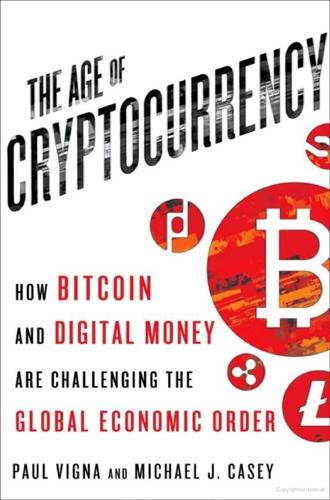
The Age of Cryptocurrency: How Bitcoin and Digital Money Are Challenging the Global Economic Order
by
Paul Vigna
and
Michael J. Casey
Published 27 Jan 2015
Either way, the “wallet,” much like an account at a traditional bank, is little more than lines of code, and because of that, online security is an issue. In theory, so long as one of the most important components of that code—the all-important private key that unlocks a bitcoin address’s ability to send money—resides somewhere online, it is vulnerable to hackers. New encryption-security solutions introduced in 2014, especially the multi-sig system that requires the coordination of multiple keys to access an address, should make such attacks virtually impossible outside of extortion or extreme negligence from two parties. Still, if you want to keep your bitcoins 100 percent safe, you can’t leave the code online anywhere.
…
a hacker hijacked an Internet service provider’s computers: Swati Khandelwal, “Hacker Hijacks ISP Networks to Steal $83,000 from Bitcoin Mining Pools,” http://thehackernews.com/2014/08/hacker-hijacks-isp-networks-to-steal_7.html. a Greece-based botnet used Facebook to infect 250,000 computers: Mohit Kumar, “Facebook Takes Down Bitcoin-Stealing Botnet That Infected 250,000 Computers,” Hacker News, July 9, 2014. the $148 million attack on Target in December 2013: Tom Gara, “An Expensive Hack Attack: Target’s $148 Million Breach,” August 5, 2014, http://blogs.wsj.com/corporate-intelligence/2014/08/05/an-expensive-hack-attack-targets-148-million-breach/. Let’s compare the average U.S. price of a gallon of gasoline: Weekly average U.S.

The Contrarian: Peter Thiel and Silicon Valley's Pursuit of Power
by
Max Chafkin
Published 14 Sep 2021
Masters, like Thiel, was a member of the campus Federalist Society and a gym rat. Starting that spring, though, he became Thiel’s Boswell, posting detailed prose versions of each class, complete with charts and graphs supplied by Thiel. The notes went viral almost immediately, showing up on the front page of Hacker News, a widely read tech and entrepreneurship forum, nearly every week, as well as on Facebook, Twitter, Reddit, and everywhere else ambitious young people came to connect with each other. Thiel’s delivery could be uncertain—his prepared speeches tend to be crisp on the page but full of circuitous digressions when delivered—and the structure of the lectures was a bit scattered, especially early on.
…
J., 196, 227 Davidson, James Dale, 175 The Sovereign Individual, 175, 208–9 DCGS, 147, 216–17, 234–35, 284 DealBook conference, 326 DeAnna, Kevin, 203 DeepMind, xiii deep state, 192–93 Defense Advanced Research Projects Agency (DARPA), 145, 333 Defense Department, 114, 145–46, 149, 288, 310 Defense Intelligence Agency (DIA), 149 de Grey, Aubrey, 138, 139, 326, 327 DeMartino, Anthony, 283 democracy, 14, 32, 112, 140, 141, 176, 182, 192, 250, 303, 318, 321, 322 Democrats, Democratic Party, 47, 94, 179, 197, 220, 281, 301, 306, 313, 333 “Atari,” 94 Facebook and, 299, 300, 302–3 Deng, Wendi, x Denny, Simon, 305–6 Denton, Nick, 123–29, 194–96, 200, 201, 227–33 Deploraball, 255 Dershowitz, Alan, 198 Details, 173, 175 Dhillon, Harmeet, 279 Dickinson, Pax, 202 Dietrick, Heather, 201 Digg, 118 Dimon, Jamie, 118 disruption, 77, 313 Diversity Myth, The (Thiel and Sacks), 40–42, 47, 53, 145, 202, 252, 344n DNA sequencing, 168 Doherty, Bran, 181 Donnelly, Sally, 283 Doohan, James, 59 dot-com era, 48, 68, 73, 80, 84, 85, 88, 95, 98, 118, 292 Dowd, Maureen, 266 Downs, Jim, 243 Drange, Matt, 230 drones, 152, 288 Dropbox, 298 Drudge Report, viii drug legalization, 178–79, 259 D’Souza, Aron, 166, 193–95, 198, 201 D’Souza, Dinesh, 31, 35, 42, 61, 99 Duke, David, 31 Dungeons & Dragons (D&D), 1–2, 8, 306 Earnhardt, Dale, Jr., 299 Eastwood, Clint, 182 eBay Billpoint and, 56, 65, 90 PayPal and, 56, 59, 64–66, 70, 80–81, 84–85, 147, 274 PayPal acquired by, xii, 76, 88–91, 105, 108 Eden, William, 331 Edmondson, James Larry, 38 education, higher, xvi, 158, 160–62, 191–92, 335 Edwards, John, 177 Eisenberg, Jesse, 159 Eisman, Steve, 132 Electric Kool-Aid Acid Test, The (Wolfe), 162 Elevation Partners, 76 Ellis, Bret Easton, 25 Ellis, Curt, 251 Ellison, Larry, 68, 188, 221 Emergent Ventures, 192 Endorse Liberty, 179–81 EPA (Environmental Protection Agency), 250, 251 Epstein, Marcus, 203 ESPN, 99 Esquire, 144 extropianism, 23 Facebook, viii, ix, xiii, 77, 105–9, 112, 119, 134, 135, 141, 159, 162–64, 180, 182, 213, 234, 245, 259, 264, 268, 271, 276–77, 279, 280, 282, 285, 291–304, 317 Cambridge Analytica scandal and, 219–20 China and, 298–99 conservative opinions and, viii–xi, 245–46, 298, 300, 303–4 COVID pandemic and, 309, 313 Democrats and, 299, 300, 302–3 IPO of, 292, 294 Luckey at, 296 and 2008 US presidential election, 135 and 2016 US presidential election, 299, 323 Russia and, 245, 299 Trump and, 220, 245–46, 299–300, 302–4, 323 users’ sharing of information on, 297 Fairchild Semiconductor, 143–44 Falwell, Jerry, Jr., 237 Fast Company, 135 Fathom Radiant, 168 FBI, 79, 80, 114, 149, 289 FCC, 249 FDA (Food and Drug Administration), xvii, 181–82, 249, 253–54, 308, 316, 327 Federalist Society, 33, 170, 250 Federal Reserve, 133, 178, 183 Federation for American Immigration Reform (FAIR), 139, 266 feminism, 36, 202 Ferguson, Niall, 280–81 Fidelity, 211 Fieldlink, 50–51 1517 Fund, 169 financial crisis of 2008, 131–33, 145, 311, 313 Great Recession following, 104, 132, 157, 178 Financial Times, 124 Fincher, David, 159 Finish, The (Bowden), 152–53 Fiorina, Carly, 221, 223–25 Fischer, Bobby, 7, 22 Flatiron Health, 253 Flickr, 118 Flooz, 56, 68, 72 Flynn, Michael, 148–49, 235, 283–84 Forbes, 154, 215, 230 Ford, Henry, 270 formalism, 176 Fortune, 121, 192, 223, 231 Foster, Jodie, 128 Foster City, Calif., 1–2, 6–7, 10 Founders Fund, 119–21, 126, 138, 160, 162–64, 167, 168, 170, 173, 180, 189, 211, 214, 234, 248, 249, 269, 282, 285, 293, 297, 309, 310, 319, 330 Founder’s Paradox, The (Denny), 305–6 Fountainhead, The (Rand), 176 Fox News, x, 179, 247–48, 286, 289, 332 Free Forever PAC, 315 Frieden, Tom, 311 Friedman, Milton, 137 Friedman, Patri, 136–37, 169, 174, 176 Friedman, Thomas, 189 Friendster, 105 Frisson, 97–99, 108, 210 From Poop to Gold (Jones), 180 FTC, 249, 281 FWD.us, 263 Gaetz, Matt, 302 gambling, 81–83 Gamergate, 204 GameStop, 330 Garner, Eric, 187 Gates, Bill, 68 Gausebeck, David, 78 Gawker Media, xiv–xvi, xviii, 122, 123–24, 126–30, 133, 134, 137, 153, 184, 189, 193–98, 200–202, 228–33, 239, 277, 279, 287, 326, 334 Hogan’s suit against, xv, 195–97, 201, 227–34 Valleywag, 121, 123, 124, 126–29, 134, 140–42, 189 gay community, 34, 40–42, 125, 177 AIDS and, 32, 34, 40 conservatives in, 177 gay marriage, 177, 179, 199, 240 gay rights, 40–41, 177, 184, 186, 259, 314 homophobia and, 32–35, 40, 126, 128 outing and, 128, 129 Thiel’s sexual orientation, xviii, 41, 98, 104, 125–29, 134, 138, 239, 241, 243 Gelernter, David, 252–53 Genentech, 163 General Society of Mechanics and Tradesmen, 192 Genius Grants for Geeks, 160 Germany, 3 Gettings, Nathan, 113, 114 Ghostnet, 146, 153 Gibney, Bruce, 163 Gibson, Michael, 164, 165, 169, 174 Giesea, Jeff, 43, 200–201, 204, 255, 278, 288 gig workers, 189, 190 Gingrich, Newt, 213 Gionet, Tim, 255 Girard, René, 19–20, 42, 111 GitHub, 286 Gizmodo, viii Glitch, 230 globalization, 112, 131, 189, 209, 225, 259, 298 Goliath (Stoller), 329–30 Goldin, David, 227 Goldman Sachs, 185 Goldwater, Barry, 15, 60–61, 287 Google, xii, xiv, xvi, 55, 57, 98, 123, 133, 136, 137, 145, 169, 180, 188, 190, 191, 234, 245, 259, 261, 263, 274–81, 288–90, 295, 300, 318, 328 artificial intelligence project of, xiii, 280, 288 China and, 288–89, 321 conservatives at, 277–79 Damore at, 277–79, 281, 295–96 Defense Department and, 288 Hawley’s antitrust investigation of, 279–80 indexing of websites by, 297 monopoly of, 274–77 Palantir and, 289, 290 Places, 274 Trump and, 276 Gopnik, Adam, 124 GOProud, 177 Gore, Al, 63, 94 Gorka, Sebastian, 332 Gorshkov, Vasiliy, 80 Gorsuch, Neil, 314 Gotham, 116 GotNews, 199 Government Accountability Office, 213 Gowalla, 164 Graeber, David, 192 Greatest Trade Ever, The (Zuckerman), 132 Great Recession, 104, 132, 157, 178 Greenwald, Glenn, 150 Grigoriadis, Vanessa, 124 growth hacking, 61, 78, 271 Gruender, Raymond, 82 Guardian, 154, 230 guns, 184 Habermas, Jürgen, 115 Hacker News, 170–71 Hagel, Chuck, 271 Haines, Avril, 333 Halcyon Molecular, 138, 167–68 Haley, Nikki, 182 Hamerton-Kelly, Robert, 19–20, 111 Hamilton College, 334–36 Happer, William, 251–52 Harder, Charles, 195–97, 228, 229 Harmon, Jeffrey, 180 Harper’s, 176 Harrington, Kevin, 101, 255, 256, 283 Harris, Andy, 265 Harris, Kamala, 300, 304 Harry Potter and the Methods of Rationality, 174–75 Harvard Business School, 192 Harvard Crimson, 108 Harvard University, 107–8, 191, 308 Hastings, Reed, 295, 296, 298 Hawley, Josh, 279–80, 288, 301, 321–23, 331–33 Hayek, Friedrich, 68 HBGary, 150–51 Health and Human Services (HHS) Department, 311, 318, 320 Hellman, Martin, 50–51, 54, 172 Hello, 167 Heritage Foundation, viii Hewlett-Packard (HP), 223–24 Heyer, Heather, 272 Hillbilly Elegy (Vance), 288, 332 Hitler, Adolf, 251–52, 255, 270 Hitler Youth, 30 Ho, Ralph, 101 Hoffman, Reid, 23–24, 42, 65, 67, 71, 76, 85, 107, 108, 171, 280, 333 Hogan, Hulk (Terry Bollea), xv, 182, 195–97, 201, 227–34 Holiday, Ryan, 193, 297–98 Holocaust, 203, 251–52, 255 Hoover, Herbert, 14, 33 Hoover Institution, 14, 15, 316 Houston, Drew, 298 Howery, Ken, 53, 101, 119 How Google Works (Schmidt), 54 HP, 144 HuffPost, 204 Hughes, Chris, 135 Hume, Hamish, 234, 258 Hunter, Duncan, 149, 216, 217 Hunter, Duncan, Sr., 149 Hurley, Chad, 105 Hurley, Doug, 310 Hurricane Katrina, 209 Hurston, Zora Neale, 25, 26 Hyde, Marina, 230 IBM, 257 Iger, Bob, 264 Igor, 79, 112–14 Illiberal Education (D’Souza), 31, 35, 42 Immelt, Jeff, 264 immigration, 112, 139–40, 185, 225, 259, 261, 263, 271, 298, 313, 315 Customs and Border Protection, 267, 285–86 Palantir and, 266–68, 285–87, 290, 318 and separation of families at border, 285–86 Trump and, xii, xiii, 226, 244, 247, 260–68, 272, 285–86, 309, 314 visas and, see visas Immigration and Customs Enforcement (ICE), 267, 268, 286, 287, 290, 318 Inc., xv, 157 incels, 41 Inception, 118–19, 215 Independent Institute, 42, 82 indeterminate optimism, 171 Ingraham, Laura, 31 initial public offerings (IPOs), 46 In-Q-Tel, 116 Instagram, 296, 300–301 Intel, 144, 163, 249, 257 Intellectual Dark Web, 278, 282, 319 Intelligence Advisory Board, 271–72 intelligence work, 114, 117, 148–49, 217 Intercollegiate Studies Institute, 25, 42 International Space Station, 310 Iran, 116 Iraq War, 135, 146, 148, 178, 199, 216, 247, 284, 303 IRAs, 212–13, 313 IRS, viii, 213, 214 ISIS, 311 Islam, see Muslims, Islam Ivanov, Alexey, 80 Jackson, Candice, 243 Jackson, Eric, 53, 121 Jackson, Jesse, 31–32, 47 Jackson, Michael, 26–27, 35 Japanese Americans, 266 Jews, 252, 255, 270, 321 Holocaust and, 203, 251–52, 255 Jobs, Steve, 8, 75–77, 124, 144, 262, 331, 334, 335 Stanford University address of, 334 John M.
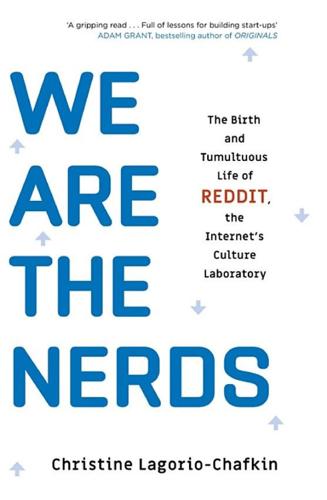
We Are the Nerds: The Birth and Tumultuous Life of Reddit, the Internet's Culture Laboratory
by
Christine Lagorio-Chafkin
Published 1 Oct 2018
Ohanian credited Rose for helping start a movement online of community-shared content, but then unleashed this kicker: “It’s a damned shame to see digg just re-implementing features from other websites.” “Guy Who Copied Digg Slams Digg for Copying Twitter,” blared the resulting TechCrunch headline. In response to the article, Paul Graham posted the article link to Hacker News and retold the story of Reddit’s founding, specifically noting that Huffman and Ohanian hadn’t known of Digg’s existence until weeks into building their own site. Ohanian then posted a follow-up on his blog with details to support Graham’s account, noting that he’d sent Huffman an email on July 11, 2005, at 11:48 p.m., alerting him that a competitor site named Digg had launched.
…
Graham, in a separate video interview, says that nine were, and one of the companies “imploded before the summer started.” Their memories on this are now unclear. Front Page of the Internet owned by a domain squatter: Comment by Paul Graham (username: pg), “Guy Who Copied Digg Slams Digg for Copying Twitter,” Hacker News, May 30, 2010. “If you’re attached to the little bug guy”: Ohanian, Without Their Permission, 60. It’s Online “Hollaback Girl”: Ohanian, Without Their Permission, 61. He even designed stickers: Alexis Ohanian, “Time Machine,” Reddit’s blog, December 5, 2006. Their lives, home and work: Paul Graham, “Jessica Livingston,” paulgraham.com, November 2015.

Fancy Bear Goes Phishing: The Dark History of the Information Age, in Five Extraordinary Hacks
by
Scott J. Shapiro
five hacks: Some hacks have been extensively discussed by others, so I did not tell those stories again; e.g., STUXNET, in Kim Zetter, Countdown to Zero Day: STUXNET and the Launch of the World’s First Digital Weapon (New York: Crown, 2014); Conficker, in Mark Bowden, Worm: The First Digital World War (New York: Grove Press, 2012); Dark Energy, in Andy Greenberg, Sandworm: A New Era of Cyberwar and the Hunt for the Kremlin’s Most Dangerous Hackers (New York: Doubleday, 2019). 1. The Great Worm “There is not one”: John Markoff, “‘Virus’ in Military Computers Disrupts Systems Nationwide,” The New York Times, November 4, 1988. Andy sent out: Email, The “Security Digest” Archives, https://web.archive.org/web/20041124203457/securitydigest.org/ tcp-ip/archive/1988/11.
…
s=20&t=EF2RadOIKuBH5Gdb8x5DUw. 1.2 terabits: Octave Klaba (@olesovhcom), “@Dominik28111 we got 2 huge multi DDoS,” Twitter, September 19, 2016, https://twitter.com/olesovhcom/status/778019962036314112. personal video recorders: Swati Khandelwal, “World’s Largest 1 Tbps DDoS Attack Launched from 152,000 Hacked Smart Devices,” Hacker News, September 28, 2016, thehackernews.com/2016/09/DDoS-attack-iot.html. any of its rivals: One prominent rival, the vDOS botnet, advertised their rate as “up to 50 gigabits per second”: Brian Krebs, “Israeli Online Attack Service ‘vDOS’ Earned $600,000 in Two Years,” Krebs on Security, September 8, 2016, https://krebsonsecurity.com/2016/09/israeli-online-attack-service-vdos-earned-600000-in-two-years/.
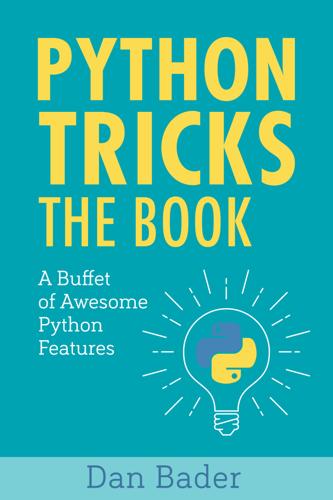
Python Tricks: The Book
by
Dan Bader
Published 14 Oct 2017
Twitter is like a virtual water cooler and great for “hanging out” but it’s limited to 140 characters at a time—not great for discussing anything substantial. Also, if you’re not constantly online, you’ll miss out on most of the conversations. And if you are constantly online, your productivity takes a hit from the never-ending stream of interruptions and notifications. Slack chat groups suffer from the same flaws. Hacker News is for discussing and commenting on tech news. It doesn’t foster long-term relationships between commenters. It’s also one of the most aggressive communities in tech right now with little moderation and a borderline toxic culture. Reddit takes a broader stance and encourages more “human” discussions than Stack Overflow’s one-off Q&A format.
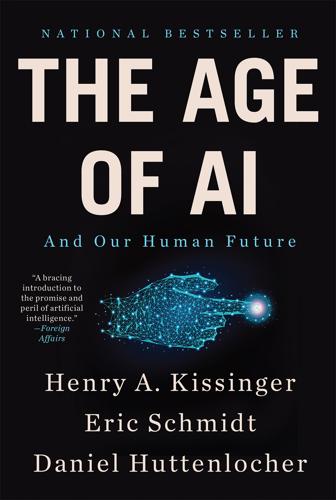
The Age of AI: And Our Human Future
by
Henry A Kissinger
,
Eric Schmidt
and
Daniel Huttenlocher
Published 2 Nov 2021
As Senator Angus King and Representative Mike Gallagher, chairs of the United States Cyberspace Solarium Commission, said in their March 2020 report, “Like an infection in the bloodstream, the malware spread along global supply chains.” See page 8 of Report of the United States Cyberspace Solarium Commission, https://drive.google.com/file/d/1ryMCIL_dZ30QyjFqFkkf10MxIXJGT4yv/view. 8. See Andy Greenberg, Sandworm: A New Era of Cyberwar and the Hunt for the Kremlin’s Most Dangerous Hackers (New York: Doubleday, 2019); Fred Kaplan, Dark Territory: The Secret History of Cyber War (New York: Simon & Schuster, 2016). 9. See Richard Clarke and Robert K. Knake, The Fifth Domain: Defending Our Country, Our Companies, and Ourselves in the Age of Cyber Threats (New York: Penguin Press, 2019). 10.
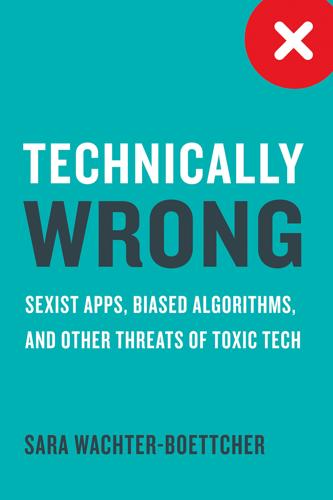
Technically Wrong: Sexist Apps, Biased Algorithms, and Other Threats of Toxic Tech
by
Sara Wachter-Boettcher
Published 9 Oct 2017
All kinds of problems plague digital products, from tiny design details to massively flawed features. But they share a common foundation: a tech culture that’s built on white, male values—while insisting it’s brilliant enough to serve all of us. Or, as they call it in Silicon Valley, “meritocracy.” It’s a term you’ll hear constantly in tech, whether in a Hacker News forum or on Twitter or in line for coffee in San Francisco. The argument is simple: the tech industry is based purely on merit, and the people who are at the top got there because they were smarter, more innovative, and more ambitious than everyone else. If a company doesn’t employ many women or people of color—well, it’s just because no good ones applied.
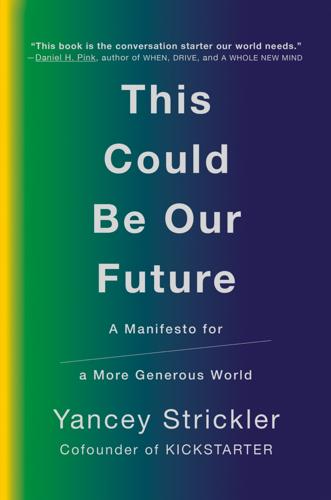
This Could Be Our Future: A Manifesto for a More Generous World
by
Yancey Strickler
Published 29 Oct 2019
To Daniel Arnold, thanks for always being such a rad human and for taking my author photo on the morning of my fortieth birthday. To John Sundman, thanks for your fact-checking help and second pair of eyes on the book’s thornier topics, and thanks to John Biggs for introducing us. To Zack Sears, thanks for riffing on cover designs. To James Miao, thank you for posting the talk on Hacker News and helping to spread early ideas. To Maris Kreizman and Shea Serrano, thank you for your book industry know-how and people recommendations. To Robin Sloan, thanks for recommending Age of Fracture, which ultimately led to Bentoism. To Katinka Barysch, thanks for your wisdom and for staring at me intently when the professor said the development of medicine redefined what it meant to be healthy.

The Code Breaker: Jennifer Doudna, Gene Editing, and the Future of the Human Race
by
Walter Isaacson
Published 9 Mar 2021
,” American Society for Microbiology, Apr. 2015; Melissa Anderson… Brian Martinson, et al., “The Perverse Effects of Competition on Scientists’ Work and Relationships,” Science Engineering Ethics, Dec. 2007; Matt Ridley, “Two Cheers for Scientific Backbiting,” Wall Street Journal, July 27, 2012. 3. Author’s interview with Emmanuelle Charpentier. Chapter 22: Feng Zhang 1. Author’s interviews with Feng Zhang. This section also draws from Eric Topol, podcast interview with Feng Zhang, Medscape, Mar. 31, 2017; Michael Specter, “The Gene Hackers,” New Yorker, Nov. 8, 2015; Sharon Begley, “Meet One of the World’s Most Groundbreaking Scientists,” Stat, Nov. 6, 2015. 2. Galen Johnson, “Gifted and Talented Education Grades K–12 Program Evaluation,” Des Moines Public Schools, September 1996. 3. Edward Boyden, Feng Zhang, Ernst Bamberg, Georg Nagel, and Karl Deisseroth, “Millisecond-Timescale, Genetically Targeted Optical Control of Neural Activity,” Nature Neuroscience, Aug. 14, 2005; Alexander Aravanis, Li-Ping Wang, Feng Zhang… and Karl Deisseroth, “An Optical Neural Interface: In vivo Control of Rodent Motor Cortex with Integrated Fiberoptic and Optogenetic Technology,” Journal of Neural Engineering, Sept. 2007. 4.
…
Magadán, and Sylvain Moineau, “The CRISPR/Cas Bacterial Immune System Cleaves Bacteriophage and Plasmid DNA,” Nature, Nov. 3, 2010. 2. Davies, Editing Humanity, 80; author’s interview with Le Cong. 3. Author’s interviews with Eric Lander, Feng Zhang; Begley, “George Church Has a Wild Idea…”; Michael Specter, “The Gene Hackers,” New Yorker, Nov. 8, 2015; Davies, Editing Humanity, 82. 4. Feng Zhang, “Confidential Memorandum of Invention,” Feb. 13, 2013. 5. David Altshuler, Chad Cowan, Feng Zhang, et al., Grant application 1R01DK097758-01, “Isogenic Human Pluripotent Stem Cell-Based Models of Human Disease Mutations,” National Institutes of Health, Jan. 12, 2012. 6.
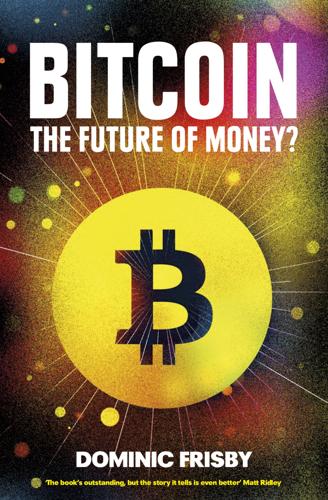
Bitcoin: The Future of Money?
by
Dominic Frisby
Published 1 Nov 2014
In the fast-developing spirit of crypto coin humour, three 100 trillion Zimbabwe dollar notes were traded for four bitcoins each. A put option (a bet on the price to fall) was written and sold. By February 2011, 5.25 million bitcoins – a quarter of the eventual total Bitcoin supply – had been mined. The price had reached parity with the US dollar. There was more publicity at Slashdot and Hacker News, and a buzz on Twitter. The Bitcoin website was struggling to cope with the new traffic. And a new website had opened up by which you could buy and sell drugs, using Bitcoin as a means of payment – the Silk Road. As is often the case when a security gets a surge in publicity, Bitcoin reached a fleeting high.

Geek Sublime: The Beauty of Code, the Code of Beauty
by
Vikram Chandra
Published 7 Nov 2013
Add another dozen software libraries and frameworks that you may use internally in your programs—again, each one comes bristling with its own eccentricities, bugs, and books—and weariness sets in. Each tool and preconstructed library solves a problem that you must otherwise solve yourself, but each solution is a separate body of knowledge you must maintain. A user named jdietrich wrote in a discussion on Hacker News: My biggest gripe with modern programming is the sheer volume of arbitrary stuff I need to know. My current project has so far required me to know about Python, Django, Google App Engine and its datastore, XHTML, CSS, JQuery, Javascript, JSON, and a clutch of XML schema, APIs and the like … Back in ye olden days, most programming tasks I performed felt quite natural and painless, just a quiet little chat between me and the compiler.
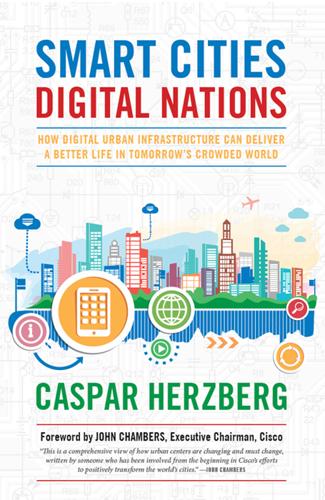
Smart Cities, Digital Nations
by
Caspar Herzberg
Published 13 Apr 2017
Although it was designed to help U.S. veterans who had been injured in combat, the prototype lost support and has not been manufactured since 2013. 6 Quoted from “The Adventure of the Copper Beeches,” Arthur Conan Doyle, 1893. 7 Independent researchers have demonstrated how devices such as smart meters and traffic sensors are vulnerable in the event of improper programming and encryption, human error, or taking advantage of the sheer number of devices that must be protected throughout a network. See Nicole Perlroth, “Smart Technology May Be Vulnerable to Hackers,” New York Times, April 21, 2015, http://bits.blogs.nytimes.com/2015/04/21/smartcity-technology-may-be-vulnerable-to-hackers/. Dan Kaplan, “Black Hat: Assessing Smart Meters for Hacker Footprints, Vulnerabilities,” SC Magazine, July 25, 2012, http://www.scmagazine.com/black-hat-assessing-smartmeters-for-hacker-footprints-vulnerabilities/article/251947/. 8 In addition to Cisco’s dedicated focus on security, there are many independent groups highlighting the vulnerabilities of devices and how consumers can protect themselves, e.g.
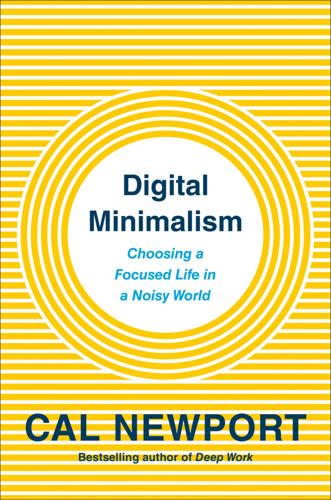
Digital Minimalism: Choosing a Focused Life in a Noisy World
by
Cal Newport
Published 5 Feb 2019
Many people now consume news by cycling through a set sequence of websites and social media feeds. If you’re interested in politics, for example, and lean toward the left side of the political spectrum, this sequence might go from CNN.com, to the New York Times homepage, to Politico, to the Atlantic, to your Twitter feed, and finally to your Facebook timeline. If you’re into technology, Hacker News and Reddit might be in that list. If you’re into sports, you’ll include ESPN.com and team-specific fan pages, and so on. Crucial to this news consumption habit is the ritualistic nature of the sequence. You don’t make a conscious decision about each of the sites and feeds you end up visiting; instead, once the sequence is activated, it unfolds on autopilot.

This Is How They Tell Me the World Ends: The Cyberweapons Arms Race
by
Nicole Perlroth
Published 9 Feb 2021
Targets,” New York Times, May 20, 2013; Perlroth, “China Is Tied To Spying On European Diplomats,” New York Times, Dec 10, 2013; Perlroth, “China Is Said to Use Powerful New Weapon to Censor Internet,” New York Times, April 10, 2015; Helene Cooper, “Chinese Hackers Steal Naval Warfare Information,” New York Times, June 9, 2018; David E. Sanger, Nicole Perlroth, Glenn Thrush, and Alan Rappeport, “Marriott Data Breach Traced to Chinese Hackers,” New York Times, December 12, 2018; and Nicole Perlroth, Kate Conger, and Paul Mozur, “China Sharpens Hacking to Hound Its Minorities,” New York Times, October 25, 2019. I found the most comprehensive contemporary account of Google’s struggles with Chinese censorship to be Clive Thompson’s 2006 account for the New York Times Magazine, “Google’s China Problem (And China’s Google Problem),” April 23, 2006.
…
Lost in the maelstrom was subsequent reporting that year which showed that the New York Times Moscow bureau was also the attempted target of a Russian cyberattack. There was no evidence that Russia’s hackers were successful. See Nicole Perlroth and David E. Sanger, “New York Times’s Moscow Bureau Was Targeted by Hackers,” New York Times, August 23, 2016. For the most definitive press accounts of Russia’s social media influence efforts, see Scott Shane and Mark Mazzetti, “Inside a 3-Year Russian Campaign to Influence U.S. Voters,” New York Times, February 16, 2018. I also relied on the United States indictment of Russia’s Internet Research Agency.
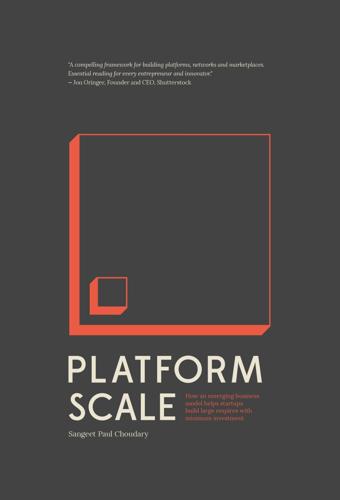
Platform Scale: How an Emerging Business Model Helps Startups Build Large Empires With Minimum Investment
by
Sangeet Paul Choudary
Published 14 Sep 2015
This problem is compounded because of a platform’s need for governance. If certain forms of behavior are encouraged during the early days and certain others are discouraged, the platform runs the risk of creating a hive mind. With scale, certain behaviors get reinforced and established as desirable behaviors. The governance on Reddit and Hacker News is so stringent that it overtly favors existing users (who have earned their karma) over new ones. These communities are often criticized for developing a hive mind. #5: CROWD-AS-A-HERD On platforms, reputation and influence are often conferred by the community. The best answer to a question on Quora is decided by the community through upvotes and downvotes.
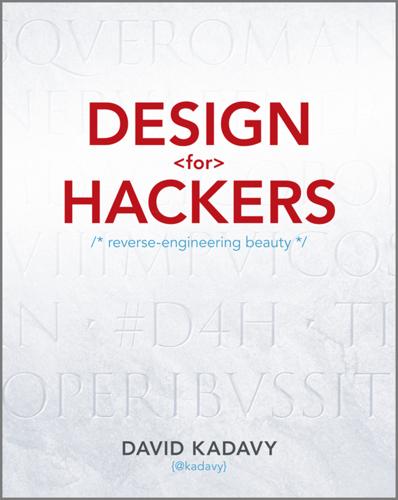
Design for Hackers: Reverse Engineering Beauty
by
David Kadavy
Published 5 Sep 2011
In today’s world, that often means learning at least a little coding, but the hacker attitude can be applied to problem solving of all kinds. People who live by the hacker attitude are curious. They do whatever it takes to achieve their visions. They’re entrepreneurial. They value skills and knowledge over titles and experience. At the forefront of the hacker movement is the Hacker News community (http://news.ycombinator.com), a news aggregation site contributed to by followers of Paul Graham’s Y Combinator entrepreneurial incubator program. The program tends to fund small teams of hackers who have used their skills and hacker attitude to build cool products that solve problems: UserVoice (www.uservoice.com) democratizes customer support; Reddit (www.reddit.com) democratizes news; Dropbox (www.dropbox.com) provides an easy, automatic backup solution; and AirBNB (www.airbnb.com) turns extra bedrooms into places for travelers to stay.
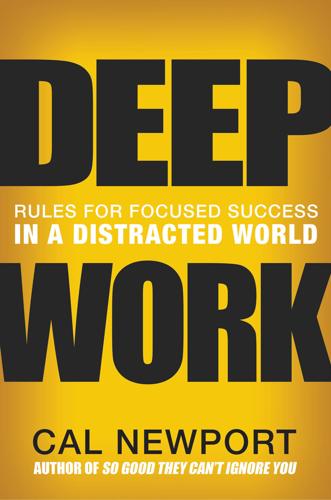
Deep Work: Rules for Focused Success in a Distracted World
by
Cal Newport
Published 5 Jan 2016
A newfound devotee of deep work, he rented an apartment across the street from his office, allowing him to show up early in the morning before anyone else arrived and work without distraction. “On good days, I can get in four hours of focus before the first meeting,” he told me. “Then maybe another three to four hours in the afternoon. And I do mean ‘focus’: no e-mail, no Hacker News [a website popular among tech types], just programming.” For someone who admitted to sometimes spending up to 98 percent of his day in his old job surfing the Web, Jason Benn’s transformation is nothing short of astonishing. Jason Benn’s story highlights a crucial lesson: Deep work is not some nostalgic affectation of writers and early-twentieth-century philosophers.
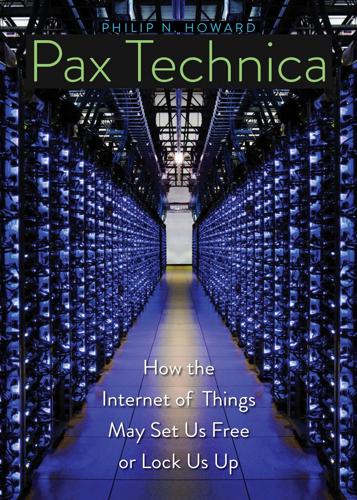
Pax Technica: How the Internet of Things May Set Us Free or Lock Us Up
by
Philip N. Howard
Published 27 Apr 2015
Xeni Jardin, “Pro-Assad ‘Syrian Electronic Army’ Boasts of Attacks on NYT, Twitter, Huffington Post,” Boing Boing, August 27, 2013, accessed September 30, 2014, http://boingboing.net/2013/08/27/syrian-electronic-army-boa.html; Christine Haughney and Nicole Perlroth, “Times Site Is Disrupted in Attack by Hackers,” New York Times, August 27, 2013, accessed September 30, 2014, http://www.nytimes.com/2013/08/28/business/media/hacking-attack-is-suspected-on-times-web-site.html. 16. Karen Deyoung and Claudia Duque, “U.S. Aid Implicated in Abuses of Power in Colombia,” Washington Post, August 20, 2011, accessed September 30, 2014, http://www.washingtonpost.com/pb/national/national-security/us-aid-implicated-in-abuses-of-power-in-colombia/2011/06/21/gIQABrZpSJ_story.html. 17.

Our Final Invention: Artificial Intelligence and the End of the Human Era
by
James Barrat
Published 30 Sep 2013
I am selling a private zeus: PHPSeller, OpenSC.ws, “Malware Samples and Information Forum,” last modified August 2009, http://www.opensc.ws/malware-samples-information/7862-sale-zeus-1-2-5-1-clean.html (accessed October 10, 2011). the Internet’s immune system: Kopytoff, Verne, “Deploying New Tools to Stop the Hackers,” New York Times, sec. technology, June 17, 2011, http://www.nytimes.com/2011/06/18/technology/18security.html?pagewanted=all (accessed October 10, 2011). malware passed good software: Ibid. Anonymous has attacked the Vatican: Reuters, “Hackers group Anonymous takes down Vatican website,” Huffington Post, July 7, 2012, http://www.huffingtonpost.com/2012/03/07/anonymous-hacks-vatican-website_n_1327297.html (accessed July 11, 2012).
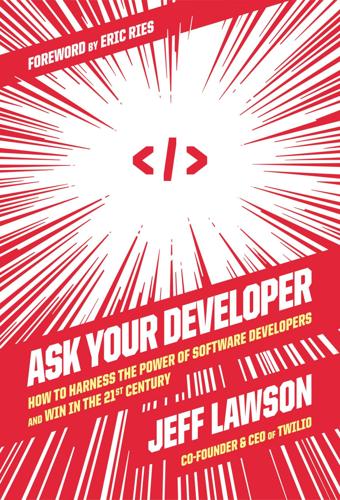
Ask Your Developer: How to Harness the Power of Software Developers and Win in the 21st Century
by
Jeff Lawson
Published 12 Jan 2021
Not just freedom in working hours or what to wear, but freedom in terms of creativity. When you think of software developers, instead of Urkel, Sheldon, or Dennis Nedry, think of Patrick McKenzie, Ryan Leslie, Leah Culver, and Chad Etzel. Patrick McKenzie works at Stripe and is better known on the Internet as “Patio11,” the screen name he uses on Hacker News (the most popular website for developers to discuss the trade), where he has long been one of the highest-rated commenters—for good reason. On his website Kalzumeus.com, he’s penned some of the most insightful and entertaining essays ever written about being a software programmer. Patrick lives in Japan, where he once worked as a corporate programmer before striking out on his own, creating two simple online businesses—a bingo card generator app for teachers, and an appointment reminder app—that made him financially independent.
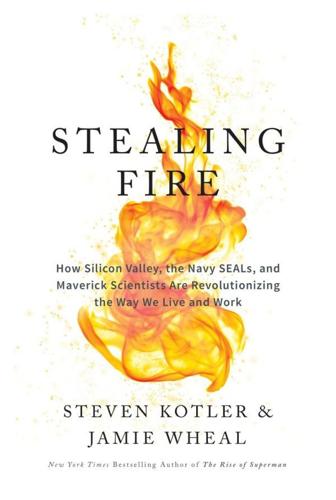
Stealing Fire: How Silicon Valley, the Navy SEALs, and Maverick Scientists Are Revolutionizing the Way We Live and Work
by
Steven Kotler
and
Jamie Wheal
Published 21 Feb 2017
Consciousness Itself,” Huffington Post, March 3, 2015. 23. ’Transformative Technology Conference: Siegel cofounded this conference with Dr. Jeffery Martin and Nicole Bradford. See: http://www.ttconf.org. Also Angela Swartz, ”Meet the Transformative Technology Companies That Want to Help You Relax,” Bizjournals.com, October 5, 2015. 24. A feature in The New Yorker: Nellie Bowles, “An evening with the Consciousness Hackers,” New Yorker, June 23, 2015. 25. The Flow Dojo: For an overview: http://www.flowgenomeproject.com/train/flow-dojo/. 26. A prototype of the Dojo to Google’s: If you want to see what all this looks like, see https://vimeo.com/153320792. Chapter Eight: Catch A Fire 1. Burning Man aggressively extends the tradition of hedonic ecstasy: Lee Gilmore and Mark Van Proyen, ed., AfterBurn: Reflections on Burning Man (Albuquerque: University of New Mexico Press, 2005). 2.

Reinventing the Bazaar: A Natural History of Markets
by
John McMillan
Published 1 Jan 2002
European Journal of Political Economy 16, 113–132. Levine, Ross. 1997. “Financial Development and Economic Growth.” Journal of Economic Literature 35, 688–726. Levine, Ross, and Renelt, David. 1992. “A Sensitivity Analysis of Cross-Country Growth Regressions.” American Economic Review 82, 942–963. Levy, Steven. 1994. Hackers. New York, Delta. Lockhart, Robert Bruce. 1996. Scotch, 7th ed. Glasgow, Neil Wilson Publishing. Lucas, Robert E. 1998. “On the Mechanics of Economic Development.” Journal of Monetary Economics 22, 3–42. Lucking-Reiley, David. 2000. “Auctions on the Internet: What’s Being Auctioned, and How?”
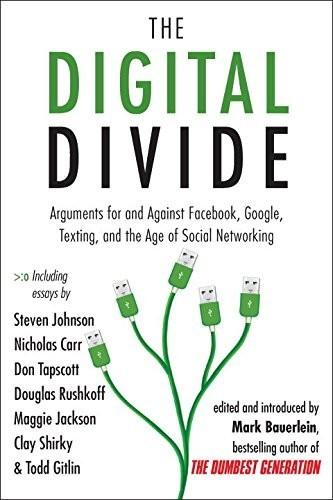
The Digital Divide: Arguments for and Against Facebook, Google, Texting, and the Age of Social Netwo Rking
by
Mark Bauerlein
Published 7 Sep 2011
Alan Lightman, Daniel Sarewitz, and Christine Dresser (Island Press, 2003), pp. 287 and 292. 29 Joshua Rubenstein, David Meyer, and Jeffrey Evans, “Executive Control of Cognitive Processes in Task-Switching,” Journal of Experimental Psychology, Human Perception and Performance 27, no. 4 (2001), pp. 763–97. 30 Clive Thompson, “Meet the Life Hackers,” New York Times Magazine , October 16, 2005, pp. 40–45. 31 Gloria Mark, Victor Gonzalez, and Justin Harris, “No Task Left Behind? Examining the Nature of Fragmented Work,” proceedings of the Conference on Human Factors in Computer Systems (Portland, Oregon, 2005), pp. 321–30. Also interview with Gloria Mark, July 2006. 32 Ibid. 33 Thompson, “Meet the Life Hackers,” p. 42. 34 Tony Gillie and Donald Broadbent, “What Makes Interruptions Disruptive?

Data and the City
by
Rob Kitchin,Tracey P. Lauriault,Gavin McArdle
Published 2 Aug 2017
Mims, C. (2013) ‘Coming soon: the cybercrime of things’, The Atlantic, 6 August, available from: www.theatlantic.com/technology/archive/2013/08/coming-soon-the-cybercrimeof-things/278409/ [accessed 7 August 2013]. Morozov, E. (2013) To Save Everything, Click Here: Technology, Solutionism, and the Urge to Fix Problems That Don’t Exist. New York: Allen Lane. Paganini, P. (2013) ‘Israeli road control system hacked, causes traffic jam on Haifa highway’, The Hacker News, 28 October, available from: http://thehackernews. com/2013/10/israeli-roadcontrol-system-hacked.html [accessed 13 November 2013]. Parsons, W. (2004) ‘Not just steering but weaving: Relevant knowledge and the craft of building policy capacity and coherence’, Australian Journal of Public Administration 63(1): 43–57.

Home Sweet Anywhere: How We Sold Our House, Created a New Life, and Saw the World
by
Lynne Martin
Published 14 Apr 2014
Lynne’s popular blog, www.homefreeadventures.com, chronicles their nomadic life, which was the cover article of the Wall Street Journal’s “Next” section in October 2012. It was the most commented-upon WSJ article of the month, was featured on the front page of Yahoo.com, and was picked up by the Huffington Post, Fodor’s Travel Intelligence, Hacker News, and others. Her work has also appeared in Mark Chimsky’s book, 65 Things to Do When You Retire, International Living, the Huffington Post, and others. Born in Texas and raised in Chicago, Lynne studied journalism in college and worked in radio and television for a number of years. She founded Maynor and Associates, a public relations firm in Hollywood, specializing in publicity for actors, television, and movies.

Messing With the Enemy: Surviving in a Social Media World of Hackers, Terrorists, Russians, and Fake News
by
Clint Watts
Published 28 May 2018
Ibid. 6. https://www.volkskrant.nl/wetenschap/dutch-agencies-provide-crucial-intel-about-russia-s-interference-in-us-elections~b4f8111b/. 7. http://fm.cnbc.com/applications/cnbc.com/resources/editorialfiles/2018/10/19/document-5.pdf. 8. https://www.cnbc.com/2018/10/19/woman-linked-to-russian-troll-farm-charged-with-interference-in-2018-midterms.html. 9. https://www.intelligence.senate.gov/press/new-reports-shed-light-internet-research-agency’s-social-media-tactics. 10. https://www.washingtonpost.com/politics/russians-interacted-with-at-least-14-trump-associates-during-the-campaign-and-transition/2018/12/09/71773192-fb13–11e8–8c9a-860ce2a8148f_story.html. 11. https://www.nytimes.com/2018/11/29/us/politics/fact-check-cohen-trump-.html. 12. https://www.thedailybeast.com/russian-hackers-new-target-a-vulnerable-democratic-senator. 13. https://www.npr.org/2018/08/01/634696302/sen-jeanne-shaheen-says-she-was-a-target-of-a-hacking-attempt. 14. https://www.washingtonpost.com/technology/2018/08/04/several-groups-banned-by-facebook-had-strong-similarities-twitter-accounts-linked-russia-six-weeks-ago/?
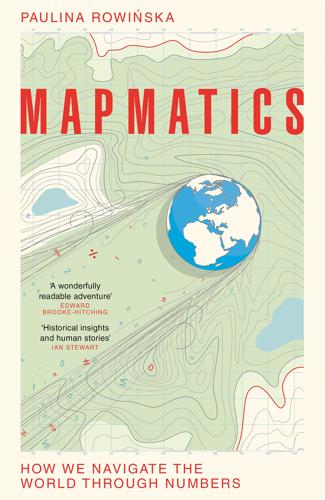
Mapmatics: How We Navigate the World Through Numbers
by
Paulina Rowinska
Published 5 Jun 2024
Ghent University didn’t find the ‘Mercator effect’: Lieselot Lapon, Kristien Ooms and Philippe De Maeyer, ‘The Influence of Map Projections on People’s Global-Scale Cognitive Map: A Worldwide Study’, ISPRS International Journal of Geo-Information 9, no. 4 (2020): 196, https://doi.org/10.3390/ijgi9040196. which made the directions less precise: Rangi42, ‘Five world map styles’, Hacker News, 29 March 2017, https://web.archive.org/web/20240203163845/https://news.ycombinator.com/item?id=13986412. a public registry of all things geographical: ‘EPSG Geodetic Parameter Dataset’, GeoRepository, accessed 23 May 2023, https://epsg.org/home.html. which is ‘Google’ transliterated to numbers: Christopher Schmidt, ‘Google Projection: 900913’, Technical Ramblings: Ramblings of a Hacker, 7 August 2007, https://crschmidt.net/blog/archives/243/google-projection-900913/.
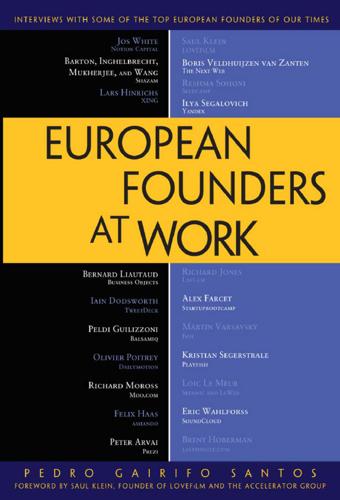
European Founders at Work
by
Pedro Gairifo Santos
Published 7 Nov 2011
I think, in the end, that’s the competitive advantage of any company. Santos: The fact that you want to keep the team small is also good in terms of flexibility. Guilizzoni: Right, exactly. We have to stay as nimble as we can possibly be and keep our ears open. That’s a big part of my job is to read Hacker News and see what’s going on and learn about new technologies and try to get a sense of where the market is going. Those are things that I’ve had to learn how to do and I am still learning. The smaller and nimbler we are, the more we can be on our feet and adapt to things that will inevitably change.

Coding Freedom: The Ethics and Aesthetics of Hacking
by
E. Gabriella Coleman
Published 25 Nov 2012
PhD diss., Simon Fraser University. Mill, John Stuart. (1857) 1991. On Liberty. Edited by H.B. Acton. London: Dent. Miller, Daniel, and Don Slater. 2000. The Internet: An Ethnographic Approach. London: Berg. Mitnick, Kevin D. 2011. Ghost in the Wires: My Adventures as the World’s Most Wanted Hacker. New York: Little, Brown and Company. Monfort, Nick. 2008. Obfuscated Code. In Software Studies: A Lexicon, ed. Matthew Fuller, 193–99. Cambridge, MA: MIT Press. Moody, Glyn. 1997 The Greatest OS that (N)ever Was. Wired August. Available at http://www.wired.com/wired/archive/5.08/linux.html, accessed July 20, 2011. 2001.

The Boy Who Could Change the World: The Writings of Aaron Swartz
by
Aaron Swartz
and
Lawrence Lessig
Published 5 Jan 2016
But that’s kind of the point. We won this fight because everyone made themselves the hero of their own story. Everyone took it as their job to save this crucial freedom. They threw themselves into it. They did whatever they could think of to do. They didn’t stop to ask anyone for permission. You remember how Hacker News readers spontaneously organized this boycott of GoDaddy over their support of SOPA? Nobody told them they could do that. A few people even thought it was a bad idea. It didn’t matter. The senators were right: The Internet really is out of control. But if we forget that, if we let Hollywood rewrite the story so it was just big company Google who stopped the bill, if we let them persuade us we didn’t actually make a difference, if we start seeing it as someone else’s responsibility to do this work and it’s our job just to go home and pop some popcorn and curl up on the couch to watch Transformers, well, then next time they might just win.

Brotopia: Breaking Up the Boys' Club of Silicon Valley
by
Emily Chang
Published 6 Feb 2018
I’ve developed the requisite thick skin, and I use a common tactic for dealing with trolls: ignoring them. I quickly scroll past the vitriolic direct replies to my Twitter account, and I never, ever use Reddit. Once an interview I conducted with Apple’s co-founder Steve Wozniak ended up on Reddit, and the response was worse than unnerving. (For the same reason, many women in tech avoid using Hacker News, the prominent start-up incubator YCombinator’s official bulletin board that has since become one of the industry’s leading message boards; the trolls are there too.) Most important, I don’t respond to the haters. This is accepted wisdom among many female users: the worst way to deal with a troll is to poke it.
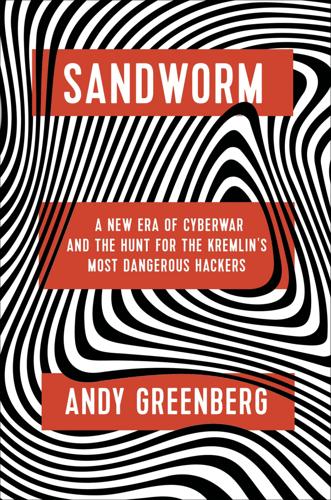
Sandworm: A New Era of Cyberwar and the Hunt for the Kremlin's Most Dangerous Hackers
by
Andy Greenberg
Published 5 Nov 2019
In the case of the Finance Ministry, the logic bomb deleted terabytes of data, destroying the contents of 80 percent of the agency’s computers, deleting its draft of the national budget for the next year, and leaving its network entirely off-line for the next two weeks. In other words, the hackers’ new winter onslaught matched and exceeded the previous year’s in both its scale and the calculated pain of its targeting. But as security researchers delved into the companies’ logs in those first weeks of December, they could see their tormentors were trying out new forms of deception, too. In one round of attacks, for instance, the hackers had altered their KillDisk code to not merely cripple victims’ machines but also to display a haunting image on their screens.
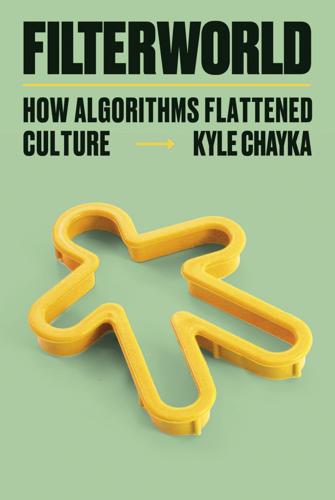
Filterworld: How Algorithms Flattened Culture
by
Kyle Chayka
Published 15 Jan 2024
Earlier in the streaming era, Netflix was infamous for its autoplay feature, which was introduced in its first form in 2016. When a TV episode or movie ended, a timer counted down ten seconds and then another show or film started, either the subsequent episode in the series or an algorithmically recommended alternative. In a 2019 post on the forum Hacker News, one Netflix engineer recalled that the original ten seconds caused “the biggest increase in hours watched”; five was too jarring and fifteen too slow. At the time, autoplay felt like a radical departure. Wasn’t a TV episode simply supposed to stop? On cable, you’d usually have to wait a week for the next episode in a series.
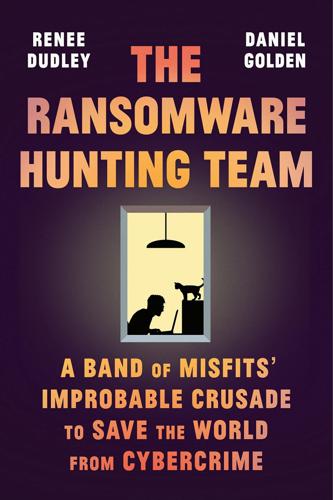
The Ransomware Hunting Team: A Band of Misfits' Improbable Crusade to Save the World From Cybercrime
by
Renee Dudley
and
Daniel Golden
Published 24 Oct 2022
on Thanksgiving Day: Details of the construction-engineering firm’s interactions with MonsterCloud come from an author interview with Kurtis Minder, GroupSense CEO, August 27, 2021, and from Federal Trade Commission complaint, December 14, 2020. negotiating with REvil: Rachel Monroe, “How to Negotiate with Ransomware Hackers,” New Yorker, May 31, 2021. “After those kinds of tricks”: Dmitry Smilyanets, “‘I Scrounged Through the Trash Heaps … Now I’m a Millionaire:’ An Interview with REvil’s Unknown,” The Record by Recorded Future, March 16, 2021, therecord.media/i-scrounged-through-the -trash-heaps-now-im-a-millionaire-an-interview-with-revils-unknown/.

The Nature of Software Development: Keep It Simple, Make It Valuable, Build It Piece by Piece
by
Ron Jeffries
Published 14 Aug 2015
The net result is that GUIs make terrible administrative interfaces for long-term production operation. The best interface for long-term operation is the command line. Given a command line, operators can easily build a scaffolding of scripts, logging, and automated actions to keep your software happy. Remember This It’s easy to get excited about control plane software. Blog posts and Hacker News will always egg you on to build more. But always keep the operating costs in mind. Anything you build must either be maintained or torn down. Choose the options that are appropriate for your team size and the scale of your workload. Start with visibility. Use logging, tracing, and metrics to create transparency.

Warnings
by
Richard A. Clarke
Published 10 Apr 2017
David Cyranoski and Sara Reardon, “Chinese Scientists Genetically Modify Human Embryos,” Nature, Apr. 22, 2015, doi:10.1038/nature.2015.17378. 21. Sarah Zhang, “CRISPR Is Getting Better. Now It’s Time to Ask the Hard Ethical Questions,” Wired, Dec. 1, 2015, www.wired.com/2015/12/stop-dancing-around-real-ethical-problem-crispr (accessed Oct. 11, 2016). 22. Michael Specter, “The Gene Hackers,” New Yorker, Nov. 16, 2015, www.newyorker.com/magazine/2015/11/16/the-gene-hackers (accessed Oct. 11, 2016.) 23. Gregory Stock, Redesigning Humans: Choosing Our Genes, Changing Our Future (New York: Houghton Mifflin, 2003). 24. Stephen D. H. Hsu, “On the Genetic Architecture of Intelligence and Other Quantitative Traits,” arXiv, Aug. 30, 2014, arXiv:1408.3421v2 (accessed Oct. 11, 2016). 25.

Hacker, Hoaxer, Whistleblower, Spy: The Story of Anonymous
by
Gabriella Coleman
Published 4 Nov 2014
“Chinga La Migra Bulleting #1,” June 6 23, 2011, last accessed July 9, 2104, available at http://thepiratebay.se/torrent/6490796/Chinga_La_Migra. 12. “50 Days of Lulz,” June 25, 2011, last accessed June 25, 2014, available at http://pastebin.com/1znEGmHa. 13. Samantha Murphy, “Exclusive First Interview with Key Lulzsec Hacker,” New Scientist, no. 2820 (July 9, 2011). Available at http://www.newscientist.com/article/dn20649-exclusive-first-interview-with-key-lulzsec-hacker.html#.U6bPdB_7Gi0. (Last accessed June 26, 2014.) 14. Aldous Huxley, Complete Essays, (Chicago: Dee, 2000 [1934]), 526. 15. Topiary, Twitter post, July 21, 2011, 9:02 pm, https://twitter.com/atopiary/status/94225773896015872. 16.
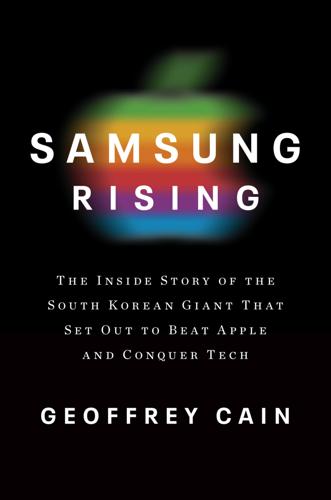
Samsung Rising: The Inside Story of the South Korean Giant That Set Out to Beat Apple and Conquer Tech
by
Geoffrey Cain
Published 15 Mar 2020
“Hey @sprint, what if”: Sapna Maheshwari, “Samsung’s Response to Galaxy Note 7 Crisis Draws Criticism,” The New York Times, October 11, 2016, https://www.nytimes.com/2016/10/12/business/media/samsungs-passive-response-to-note-7s-overheating-problem-draws-criticism.html. “I’m sitting in front of”: Hacker News (web discussion forum), “Samsung Blocks Exploding Note 7 Parody Videos,” October 21, 2016. The user “netsharc” posted the message on October 21, 2016. More sarcastic comments can be found on social media posts on Samsung’s official Facebook and Twitter pages, as well as Samsung product reviews on Best Buy’s website, from September 2016 to December 2017.

Stolen Focus: Why You Can't Pay Attention--And How to Think Deeply Again
by
Johann Hari
Published 25 Jan 2022
.: Oxford University Press, 2009), 4; and Colville, Great Acceleration, 47. GO TO NOTE REFERENCE IN TEXT Several other studies have shown a large chunk of Americans: T. Harris, “Pardon the Interruptions,” Your Undivided Attention (podcast), August 14, 2019, https://www.humanetech.com/podcast; and C. Thompson, “Meet the Life Hackers,” New York Times Magazine, October 16, 2005. GO TO NOTE REFERENCE IN TEXT most office workers never get an hour to themselves without being interrupted: J. MacKay, “The Myth of Multitasking: The Ultimate Guide to Getting More Done by Doing Less,” RescueTime (blog), January 17, 2019, https://blog.rescuetime.com/multitasking/#at-work; and J.
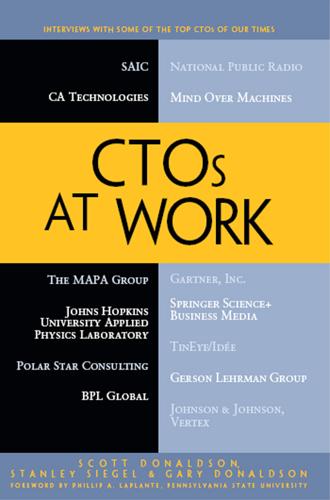
CTOs at Work
by
Scott Donaldson
,
Stanley Siegel
and
Gary Donaldson
Published 13 Jan 2012
Part of the adoption is due to the startup movement. Part of the adoption is the collapse of the dominance of Microsoft and Sun and IBM on the developer mindshare. I think that's going to give us things that I can't tell you what they're going to be, because there's a new thing every week. You go read Hacker News, and there's a new library or a new programming language or some new tool, but it's almost like a Cambrian explosion of new ideas. Staying on top of that and being aware of those things as they come along, and picking the ones that work for you—there are a whole lot of choices—and that to me has been the biggest technology impact and change.
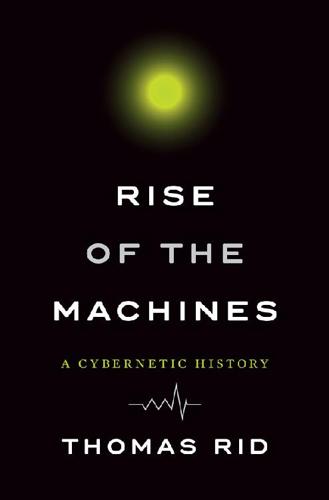
Rise of the Machines: A Cybernetic History
by
Thomas Rid
Published 27 Jun 2016
Shalikashvili, Joint Vision 2010 (Washington, DC: Joint Chiefs of Staff, 1996), 1. 32.Select Comm. on Intelligence, US Senate, Current and Projected National Security Threats to the United States (Washington, DC: US Government Printing Office, 1998), 60–68. 33.Ibid., 68. 34.Winn Schwartau, interview by the author, March 31, 2015. 35.Winn Schwartau, “Fighting Terminal Terrorism,” Computerworld, January 28, 1991, 23. 36.Computer Security: Hearing before the Subcommittee on Technology and Competitiveness of the Committee on Science, Space, and Technology, U.S. House of Representatives, One Hundred Second Congress, First Session, June 27, 1991, no. 42 (Washington, DC: Government Printing Office, 1991), 10. 37.Winn Schwartau, Terminal Compromise (Old Hickory, TN: Interpact Press, 1991). 38.Steven Levy, Hackers (New York: Doubleday, 1984). 39.Clifford Stoll, The Cuckoo’s Egg (New York: Doubleday, 1989). 40.Alvin Toffler and Heidi Toffler, War and Anti-war: Survival at the Dawn of the 21st Century (Boston: Little, Brown, 1993). 41.Bob Brewin and Elizabeth Sikorovsky, “Information Warfare: DISA Stings Uncover Computer Security Flaws,” Federal Computer Week 9, no. 3 (1995): 1, 45. 42.Neil Munro, “The Pentagon’s New Nightmare: An Electronic Pearl Harbor,” Washington Post, July 16, 1995, C03. 43.Roger C.

Blockchain Revolution: How the Technology Behind Bitcoin Is Changing Money, Business, and the World
by
Don Tapscott
and
Alex Tapscott
Published 9 May 2016
Now with blockchain technology and open source code repositories, every company could provide venues to geeks and other business builders for problem solving, innovating, and creation of new business value. Blockchains and blockchain-based software repositories will fuel such activity. Companies can now use powerful new programming languages like the Ethereum blockchain with built-in payment systems. An excerpt from a conversation on Hacker News: “Imagine how cool it would be if I could share a guid for my repo—and then your bit client (let’s call it gitcoin, or maybe just bit) can fetch new commits from a distributed block chain (essentially the git log). Github is no longer an intermediary or a single point of failure. Private repo? Don’t share the guid.”36 How cool indeed!
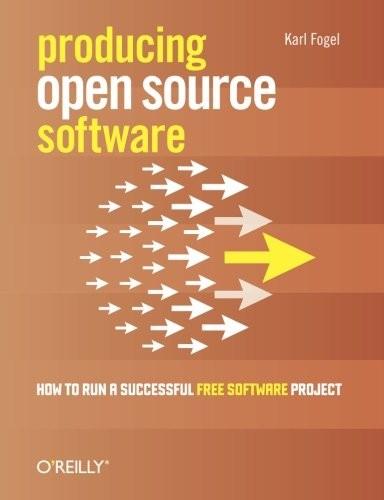
Producing Open Source Software: How to Run a Successful Free Software Project
by
Karl Fogel
Published 13 Oct 2005
Publicity In free software, there is a fairly smooth continuum between purely internal discussions and public relations statements. This is partly because the target audience is always ill-defined: given that most or all posts are publicly accessible, the project doesn't have full control over the impression the world gets. Someone—say, a Hacker News poster or slashdot.org editor—may draw millions of readers' attention to a post that no one ever expected to be seen outside the project. This is a fact of life that all open source projects live with, but in practice, the risk is usually small. In general, the announcements that the project most wants publicized are the ones that will be most publicized, assuming you use the right mechanisms to indicate relative newsworthiness to the outside world.
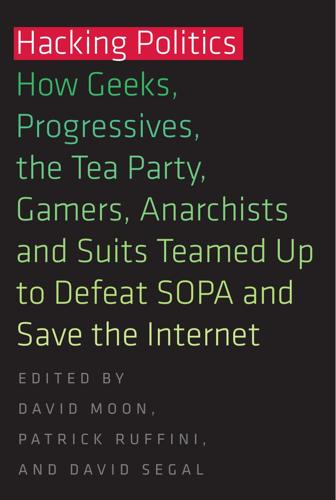
Hacking Politics: How Geeks, Progressives, the Tea Party, Gamers, Anarchists and Suits Teamed Up to Defeat SOPA and Save the Internet
by
David Moon
,
Patrick Ruffini
,
David Segal
,
Aaron Swartz
,
Lawrence Lessig
,
Cory Doctorow
,
Zoe Lofgren
,
Jamie Laurie
,
Ron Paul
,
Mike Masnick
,
Kim Dotcom
,
Tiffiniy Cheng
,
Alexis Ohanian
,
Nicole Powers
and
Josh Levy
Published 30 Apr 2013
But mostly, it’s a personal story because I haven’t had the time to research anyone else’s. We won this fight because everyone made themselves the hero of their own story. Everyone took it as their job to save this crucial freedom. They threw themselves into it, did whatever they could think of to do, didn’t stop to ask anyone for permission. Did you hear how Hacker News users spontaneously organized a boycott of GoDaddy over their support of SOPA? Nobody told them they could do that. A lot of people even thought it was a bad idea. It didn’t matter. The senators were right. The Internet really is out of control. But if we forget that. If we let Hollywood rewrite the story so that is was just Big Company Google who stopped the bill.
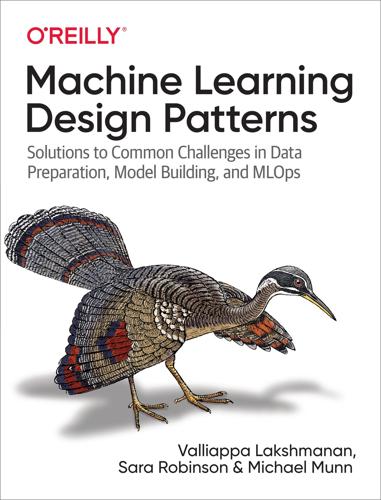
Machine Learning Design Patterns: Solutions to Common Challenges in Data Preparation, Model Building, and MLOps
by
Valliappa Lakshmanan
,
Sara Robinson
and
Michael Munn
Published 31 Oct 2020
In the next chapter, we’ll focus on model output by diving into different approaches for representing our prediction task. 1 Here, the learned data representation consists of baby weight as the input variable, the less than operator, and the threshold of 3 kg. 2 If twins, the plurality is 2. If triplets, the plurality is 3. 3 This dataset is available in BigQuery: bigquery-public-data.samples.natality. 4 This dataset is available in BigQuery: bigquery-public-data.hacker_news.stories. 5 The feature_cross.ipynb notebook in the book’s repository of this book will help you follow the discussion better. 6 Full code is in 02_data_representation/feature_cross.ipynb in the code repository of this book. 7 We use the term “tabular data” to refer to numerical and categorical inputs, but not free-form text.
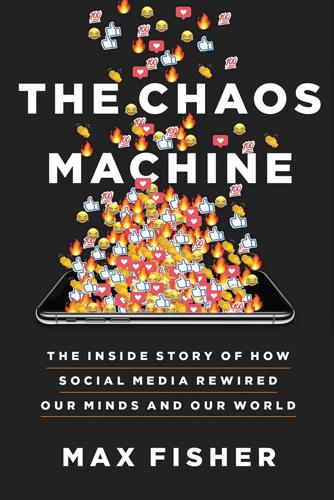
The Chaos Machine: The Inside Story of How Social Media Rewired Our Minds and Our World
by
Max Fisher
Published 5 Sep 2022
Now, in early 2013, social media enabled her to reach a wider audience. Twitter and Facebook lit up with angry posts in reaction to her tweet. The conference organizers, as well as the employers of the two men, were suddenly infamous, even hated, and on a national scale. One of the men was quickly fired. He posted an apology for his comment to Hacker News, Silicon Valley’s unofficial web forum, writing that he was sorry to Richards especially. But he added, “I have 3 kids and I really liked that job. She gave me no warning, she smiled while she snapped the pic and sealed my fate. Let this serve as a message to everyone, our actions and words, big or small, can have a serious impact.”

Rationality: From AI to Zombies
by
Eliezer Yudkowsky
Published 11 Mar 2015
If you can think of ways to pull the rope sideways, you are justified in expending your limited resources on relatively less common issues where marginal discussion offers relatively higher marginal payoffs. But then the responsibilities that you deprioritize are a matter of your limited resources. Not a matter of floating high above, serene and Wise. My reply to Paul Graham’s comment on Hacker News seems like a summary worth repeating: There’s a difference between: Passing neutral judgment; Declining to invest marginal resources; Pretending that either of the above is a mark of deep wisdom, maturity, and a superior vantage point; with the corresponding implication that the original sides occupy lower vantage points that are not importantly different from up there
…
Though it does take a mature understanding to appreciate this impossibility, so it’s not surprising that people go around proposing clever shortcuts. On the AI-Box Experiment, so far I’ve only been convinced to divulge a single piece of information on how I did it—when someone noticed that I was reading Y Combinator’s Hacker News, and posted a topic called “Ask Eliezer Yudkowsky” that got voted to the front page. To which I replied: Oh, dear. Now I feel obliged to say something, but all the original reasons against discussing the AI-Box experiment are still in force . . . All right, this much of a hint: There’s no super-clever special trick to it.
…
Being part of a large collective of other inactives; no one will single out you to blame. Not hearing a voiced plea for help. Et cetera. I don’t have a brilliant solution to this problem. But it’s the sort of thing that I would wish for potential dot-com cofounders to ponder explicitly, rather than wondering how to throw sheep on Facebook. (Yes, I’m looking at you, Hacker News.) There are online activism web apps, but they tend to be along the lines of sign this petition! yay, you signed something! rather than how can we counteract the bystander effect, restore motivation, and work with native group-coordination instincts, over the Internet? Some of the things that come to mind: Put a video of someone asking for help online.
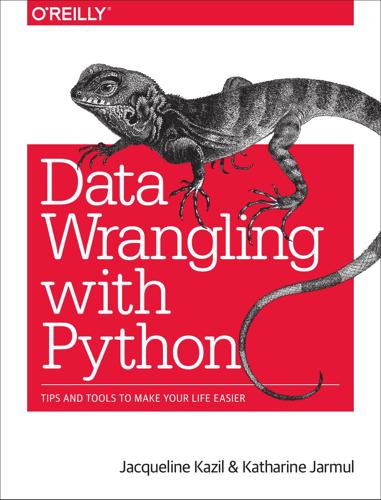
Data Wrangling With Python: Tips and Tools to Make Your Life Easier
by
Jacqueline Kazil
Published 4 Feb 2016
Large-Scale Automation | 397 We’ve chosen to highlight some of the tools we’ve used in this section, but they are not the only tools for larger-scale automation using Python. Given the field’s popular‐ ity and necessity, we recommend following discussions of larger-scale automation on your favorite technology and discussion sites, such as Hacker News. Celery: Queue-Based Automation Celery is a Python library used to create a distributed queue system. With Celery, your tasks are managed using a scheduler or via events and messaging. Celery is the complete solution if you’re looking for something scalable, that can handle longrunning event-driven tasks.
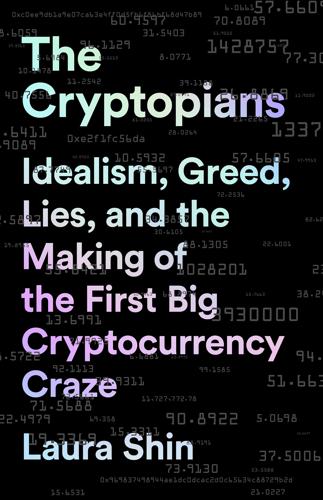
The Cryptopians: Idealism, Greed, Lies, and the Making of the First Big Cryptocurrency Craze
by
Laura Shin
Published 22 Feb 2022
Headlines read, “Winklevoss twin predicts multitrillion-dollar value for bitcoin,” “Analyst who predicted bitcoin’s rise now sees it hitting $300,000–$400,000,” and “Trader who called bitcoin rally says cryptocurrency will surge above $100,000 in 2018.”28 News about Bitcoin and Ethereum proliferated: about teens who’d become millionaires off Bitcoin, ETH traders who turned $8,500 into $7.5 million in six months with leveraged crypto trades, and WikiLeaks’ founder Julian Assange thanking the US government, because the site was now enjoying 50,000 percent returns since it had been forced to use Bitcoin after being blocked by credit cards and PayPal.29 Now that Bitcoin had gone “to the moon,” a company named Moonlambos made it possible for anyone wanting to buy a Lamborghini to do so with BTC or ETH.30 It also planned an ILO—initial Lambo offering.31 On December 13, PineappleFund, an anonymous early Bitcoiner, posted on Reddit, announcing that he or she had “far more money than I can ever spend” and so was going to give away 5,057 Bitcoins—$86 million—to what he or she had christened The Pineapple Fund.32 (A software engineer who, by email, helped “Pine” distribute the money got a strong sense, from Pine’s mannerisms and use of emojis, that Pine was a woman and, from Pine’s references to things like Hacker News, perhaps an engineer familiar with Silicon Valley.) MEW, which in the late summer/early fall had been seeing about 3.5 million visitors a month, in November got 4.6 million. In December that reached 7.7 million. In twelve months, the tiny website started by two best friends as a side project had grown to seventy-seven times its original size.
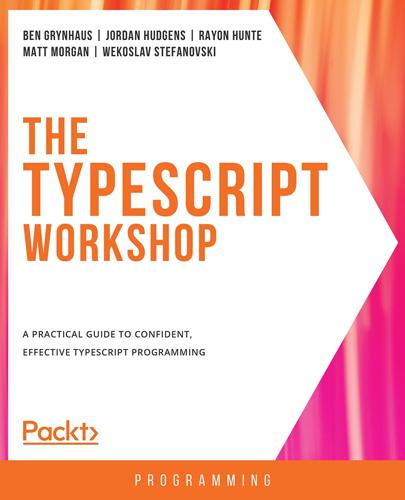
The TypeScript Workshop: A Practical Guide to Confident, Effective TypeScript Programming
by
Ben Grynhaus
,
Jordan Hudgens
,
Rayon Hunte
,
Matthew Thomas Morgan
and
Wekoslav Stefanovski
Published 28 Jul 2021
TypeScript and React Overview In this chapter, we'll cover the React library and how to build user interfaces enhanced with TypeScript. We'll look at state management solutions for React applications and styling solutions. Then, we will use Firebase, a serverless backend, to build a Hacker News-style application. By the end of this chapter, you will be able to bootstrap React applications using the Create React App command-line interface. Introduction React is a dominant force in web and mobile user interface development. Although it bills itself as "A JavaScript library for building user interfaces," what we often think of as React goes well beyond the core library and includes a wide ecosystem of plugins, components, and other tools.
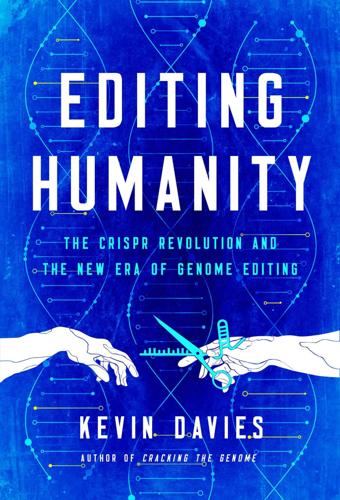
Editing Humanity: The CRISPR Revolution and the New Era of Genome Editing
by
Kevin Davies
Published 5 Oct 2020
Hannah Osborne, “China’s He Jiankui told Nobel winner Craig Mello about gene-edited babies months before birth,” Newsweek, January 30, 2019, https://www.newsweek.com/craig-mello-he-jiankui-gene-editing-experiment-babies-nobel-prize-1311524. 24. N. Wade, “In new way to edit DNA, hope for treating disease,” New York Times, December 28, 2009, https://www.nytimes.com/2009/12/29/health/research/29zinc.html. 25. Michael Specter, “The Gene Hackers,” New Yorker, November 9, 2015, https://www.newyorker.com/magazine/2015/11/16/the-gene-hackers. 26. Ibid. 27. D. Baltimore et al., “A prudent path forward for genomic engineering and germline gene modification,” Science 348, (2015): 36–38, https://www.ncbi.nlm.nih.gov/pmc/articles/PMC4394183/. 28.

The Code: Silicon Valley and the Remaking of America
by
Margaret O'Mara
Published 8 Jul 2019
Kara Swisher, AOL.com: How Steve Case Beat Bill Gates, Nailed the Netheads, and Made Millions in the War for the Web (New York: Crown Business, 1998), xvii; Manes and Andrews, Gates, 403. 31. Brenton R. Schlender, “Computer Maker Aims to Transform Industry and Become a Giant,” The Wall Street Journal, March 18, 1988, 1. 32. “April Fool Pranks in Sun Microsystems Over the Years,” Hacker News, February 14, 2006, last updated January 26, 2014, https://news.ycombinator.com/item?id=7121224, archived at https://perma.cc/G5GH-FN6F. 33. Nancy Householder Hauge, “Misogyny in the Valley,” and “Life in the Boy’s Dorm: My Career at Sun Microsystems,” Consulting Adult, January 29, 2010, http://consultingadultblog.blogspot.com/2010/01/life-in-boys-dorm-my-career-at-sun.html, archived at https://perma.cc/26WB-KTV9. 34.

The Friendly Orange Glow: The Untold Story of the PLATO System and the Dawn of Cyberculture
by
Brian Dear
Published 14 Jun 2017
Jones, Steve, and Guillaume Latzko-Toth. 2017. “Out from the PLATO Cave: Uncovering the Pre-Internet History of Social Computing.” Internet Histories 1, nos. 1-2 (2017). Retrieved 2017-05-17 from https://protect-us.mimecast.com/s/mmYrB6c7KDzwhY?domain=tandfonline.com Kay, Alan. 2016-06-21. “Alan Kay Has Agreed to Do an AMA Today.” Hacker News. Retrieved 2016-06-21 from https://news.ycombinator.com/item?id=11939851. ———. 2012-07-10. “Interview with Alan Kay,” Dr. Dobbs Journal, by A. L. Binstock. Retrieved 2015-05-26 from http://www.drdobbs.com/architecture-and-design/interview-with-alan-kay/240003442. ———. 2013. “An Interview with Computing Pioneer Alan Kay,” D.

Designing Data-Intensive Applications: The Big Ideas Behind Reliable, Scalable, and Maintainable Systems
by
Martin Kleppmann
Published 17 Apr 2017
ISBN: 978-0-262-57122-7 [51] Timothy Griffin and Leonid Libkin: “Incremental Maintenance of Views with Duplicates,” at ACM International Conference on Management of Data (SIGMOD), May 1995. doi:10.1145/223784.223849 [52] Pat Helland: “Immutability Changes Everything,” at 7th Biennial Conference on Innovative Data Systems Research (CIDR), January 2015. [53] Martin Kleppmann: “Accounting for Computer Scientists,” martin.klepp‐ mann.com, March 7, 2011. [54] Pat Helland: “Accountants Don’t Use Erasers,” blogs.msdn.com, June 14, 2007. [55] Fangjin Yang: “Dogfooding with Druid, Samza, and Kafka: Metametrics at Met‐ amarkets,” metamarkets.com, June 3, 2015. [56] Gavin Li, Jianqiu Lv, and Hang Qi: “Pistachio: Co-Locate the Data and Compute for Fastest Cloud Compute,” yahoohadoop.tumblr.com, April 13, 2015. [57] Kartik Paramasivam: “Stream Processing Hard Problems – Part 1: Killing Lambda,” engineering.linkedin.com, June 27, 2016. [58] Martin Fowler: “CQRS,” martinfowler.com, July 14, 2011. [59] Greg Young: “CQRS Documents,” cqrs.files.wordpress.com, November 2010. [60] Baron Schwartz: “Immutability, MVCC, and Garbage Collection,” xaprb.com, December 28, 2013. 484 | Chapter 11: Stream Processing [61] Daniel Eloff, Slava Akhmechet, Jay Kreps, et al.: “Re: Turning the Database Inside-out with Apache Samza,” Hacker News discussion, news.ycombinator.com, March 4, 2015. [62] “Datomic Development Resources: Excision,” Cognitect, Inc., docs.datomic.com. [63] “Fossil Documentation: Deleting Content from Fossil,” fossil-scm.org, 2016. [64] Jay Kreps: “The irony of distributed systems is that data loss is really easy but deleting data is surprisingly hard,” twitter.com, March 30, 2015. [65] David C.
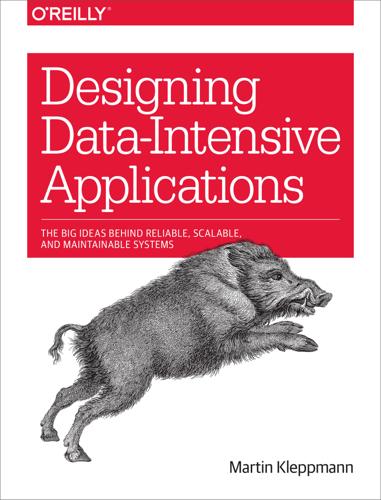
Designing Data-Intensive Applications: The Big Ideas Behind Reliable, Scalable, and Maintainable Systems
by
Martin Kleppmann
Published 16 Mar 2017
[58] Martin Fowler: “CQRS,” martinfowler.com, July 14, 2011. [59] Greg Young: “CQRS Documents,” cqrs.files.wordpress.com, November 2010. [60] Baron Schwartz: “Immutability, MVCC, and Garbage Collection,” xaprb.com, December 28, 2013. [61] Daniel Eloff, Slava Akhmechet, Jay Kreps, et al.: “Re: Turning the Database Inside-out with Apache Samza,” Hacker News discussion, news.ycombinator.com, March 4, 2015. [62] “Datomic Development Resources: Excision,” Cognitect, Inc., docs.datomic.com. [63] “Fossil Documentation: Deleting Content from Fossil,” fossil-scm.org, 2016. [64] Jay Kreps: “The irony of distributed systems is that data loss is really easy but deleting data is surprisingly hard,” twitter.com, March 30, 2015
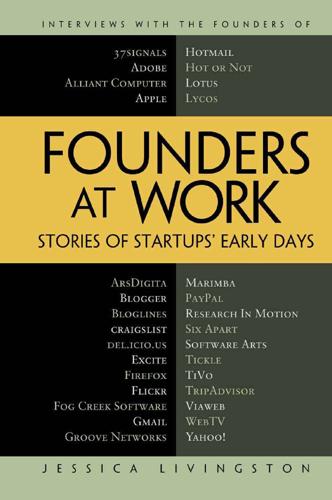
Founders at Work: Stories of Startups' Early Days
by
Jessica Livingston
Published 14 Aug 2008
That would be a good thing. Paul Graham Cofounder, Viaweb Preface It’s been more than a year since Founders at Work was first published. What have I learned since? The biggest surprise has been the sheer number of people interested in startups. I know about the ones who apply to Y Combinator, read Hacker News, or attend Startup School, but I could never be sure how many people were interested in startups beyond that core of would-be founders. A lot, it turns out. I get emails and see blog posts about Founders at Work on an almost daily basis. Some people finally took the plunge and started a startup, some learned that it was all right to change their idea, some were able to face a new day even though their company seemed doomed.
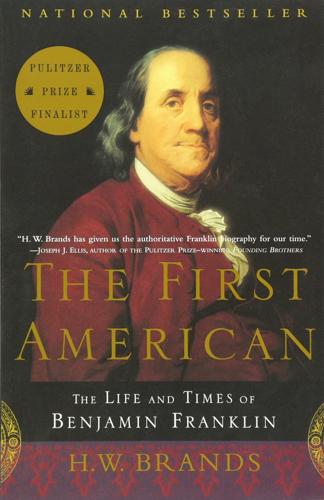
The First American: The Life and Times of Benjamin Franklin
by
H. W. Brands
Published 1 Jan 2000
Manasseh Cutler, 1:267–69; 2:363. 684 “Gentlemen … alarmed”: Records of Convention, 3:86–87. 684–85 “The Doctor”: Cutler, Life, Journals and Correspondence of Manasseh Cutler, 1:269–70. 686 “A veritable torture”: Bowen, Miracle, 97. 686 “so weak”: to Jones, July 22, 1787, Smyth. 686–87 “What was the practice”: Records of Convention, 2:65. 687 “contrary to”: ibid., 2:120. 687 “It is of great”: ibid., 2:204–5. 687 “to debase”: ibid., 2:249. 688 “not against”: ibid., 2:236–37. 688 “generally virulent”: ibid., 2:348. 688 “We seem”: ibid., 2:542. 689 “I confess”: ibid., 2:641–43. 690 “Done in Convention”: ibid. 691 “Whilst the last”: ibid., 2:648. 30. TO SLEEP: 1787–90 692 “It is now”: Washington to Lafayette, Sept. 18, 1787, Papers of Washington. 693 “As I enter …fruits of it”: Jackson Turner Main, The Anti-Federalists (New York, 1974), 122, 129, 132–34. 694 “The smaller”: The Federalist Papers, ed. Andrew Hacker (New York, 1964), 22–23. 694 “very great satisfaction”: The Documentary History of the Ratification of the Constitution, ed. Merrill Jensen (Madison, Wis., 1976–), 2:60. 695 “highly reverenced … old age”: Independent Gazetteer, Oct. 5, 1787, and Freeman’s Journal, Oct. 17, 1787; in The Documentary History, 2:160, 185. 695 “Doctor Franklin’s”: Madison to Washington, Dec. 20, 1787, Papers of Washington. 695 “Three and twenty”: Richard Miller, “The Federal City, 1783–1800,” in Philadelphia, ed.

Engineering Security
by
Peter Gutmann
This is a rather shorter version of the Black Hat Europe paper. [426] “‘Padding Oracle’ Crypto Attack Affects Millions of ASP.NET Apps”, Dennis Fischer, 13 September 2010, http://threatpost.com/en_us/blogs/newcrypto-attack-affects-millions-aspnet-apps-091310. [427] “Vulnerability in ASP.NET Could Allow Information Disclosure”, Microsoft Security Advisory 2416728, 17 September 2010, http://www.microsoft.com/technet/security/advisory/2416728.mspx. [428] “Padding Oracles Everywhere”, Thai Duong and Juliano Rizzo, presentation at Ekoparty 2010 Security Conference, September 2010, http://netifera.com/research/poet/PaddingOraclesEverywhereEkoparty2010.pdf. [429] “Amazon WS Crypto Sigs v2 Broken (Even Amazon Can’t Get Crypto Right)”, Nate Lawson, posting to Hacker News web site, May 2009, http://news.ycombinator.com/item?id=621227. [430] “Attacking and Repairing the WinZip Encryption Scheme”, Tadayoshi Kohno, Proceedings of the 11th Conference on Computer and Communications Security (CCS’04), October 2004, p.72. [431] “JAR File Specification”, Sun Microsystems/Oracle Corporation, 2008, http://docs.oracle.com/javase/6/docs/technotes/guides/jar/jar.html